

NAMM ’24 REPORT:
THE NEW GEAR
SPINNING AT SEA:
GROOVE CRUISE & FRIENDSHIP
GIMME GIMME DISCO
WEDDING-SHOW








NAMM ’24 REPORT:
THE NEW GEAR
SPINNING AT SEA:
GROOVE CRUISE & FRIENDSHIP
GIMME GIMME DISCO
WEDDING-SHOW





Miami Beach, Fla. – With the global dance-music community ready to invade South Florida, Miami Music Week is set to run March 18-24.
Including a variety of rooftop parties, club shindigs, and one-off/pop-up events – all culminating with the massive Ultra Music Festival – Miami Music Week gigs will stretch from South Beach to Wynwood and all points in between. As always, DJ LIFE will be there to take it all in. Here’s a look at what’s on tap during the week:
Ultra Music Festival. Running March 22-24 at Bayfront Park in Downtown Miami, UMF celebrates its 24th edition and will bring the biggest DJ names in the electronic-music universe to its eight stages. According to organizers, the 2023 event drew 165,000 attendees from over 100 countries – expect to see something similar in 2024.
UMF headliners include Armin van Buuren, Calvin Harris, David Guetta, Martin Garrix, Seven Lions, Slander, Steve Aoki, Tiësto and Zed’s Dead. Notable b2b sets will include performances by Fisher and Chris Lake (as Under Construction), Madeon and San Holo, RL Grime and Knock2, and SVDDEN DEATH, Space Laces and Eptic (as Masterhand).
On Ultra Fest’s decidedly underground Resistance stage, headliners include Adam Beyer, Eric Prydz, LP Giobbi, Nina Kravitz, Pan-Pot, Sasha & John Digweed, and Vintage Culture.
Electronic Dance Music Awards . Set for March 21 at the Eden Roc Hotel in South Beach, the EDMAs will present their prestigious “deck awards” to the industry’s elite. Honoring winners in 48 categories – ranging from music to artist, fan base to festival, remixers to resident DJs – the EDMA event should draw plenty of attention. A new addition to the event this year is a Media Village, which will include influential U.S radio stations, as well as print and digital publications, like DJ LIFE.
“This isn’t your typical suit-and-tie type event – we’re bringing you a red-hot pool party with the industry’s most elite,” says Sean “Hollywood” Hamilton, iHeart Radio host/founder/ co-executive producer of the EDMAs. “It’s an event with massive A-list surprise performances along with EDM’s biggest hitmakers accepting their awards.”
Club & Pool Parties: At presstime, there were numerous announced events spread all over the Miami area. They include:
A pair of day parties at Miami’s Kimpton Epic Hotel will be produced by Dance. Here. Now., Nervous Records, and Groove Society. On March 22, it’s Hard & Soul with a lineup that includes Danny Tenaglia, Steve Lawler, Chus, Ralph Falcon, and Harry Romero. On March 23, it’s Louie Vega & Friends.
Miami promoter BLNK CNVS offers a range of events from South Beach to Wynwood. Highlights include: Louis The Child at Surfcomber on March 20; Gorgon City at Oasis on March 21; Deadbeats vs. Cyclops Recordings at Mana on March 21; In the Mood with Nicole Moudaber at Surfcomber on March 22; Markus Schulz at MAD Club on March 23; Bedrock Re-
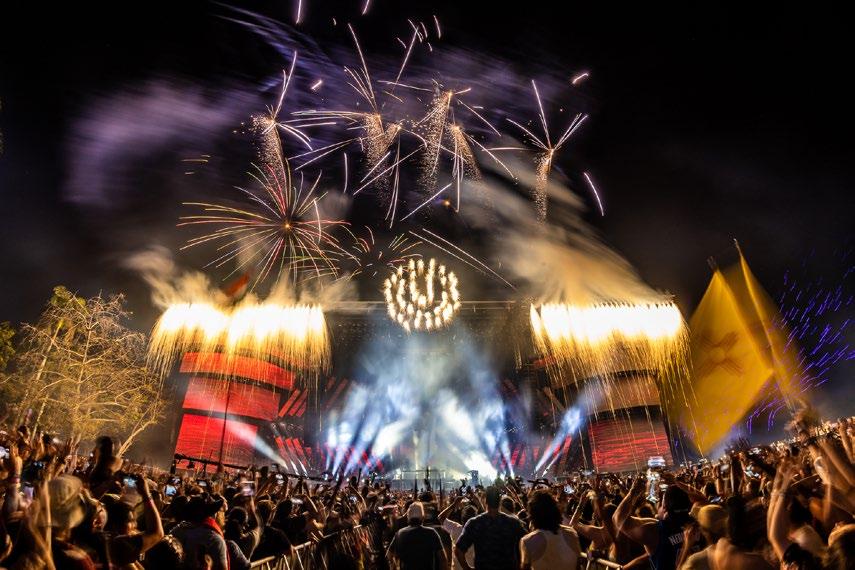
Ultra Music Fest: Set to blast off. Alive Coverage
EDMAwards: Star-studded event.
Danny Tenaglia: Hard & Soul party.
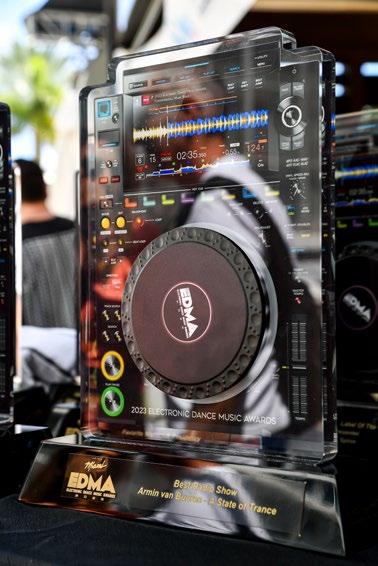

cords Showcase with John Digweed at MAD Live on March 23; Anjunadeep Open Air at Oasis on March 23; HypnoVizion Presents REZZ at Mana on March 23; Anjunabeats at Nautilus on March 24; and Galantis at Surfcomber on March 24.
Also, Barbara Tucker and The BCrew present And Let The Singer Be Heard! Set for the Astra Miami Rooftop, the party will feature some of dance music’s top DJ and vocal talents. DJs include DJ Spen, Bill Kelly, Georgie Porgie, DJ Q, Ron Carroll, Ray Vazquez, J. Hunter, DJ Hoax and DJ Lady D. Vocalists include Shawn Christopher, Dawn Tallman, Charlotte Small and Lillie McCloud.
For the latest MMW events, please visit www.miamimusicweek.com
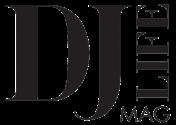
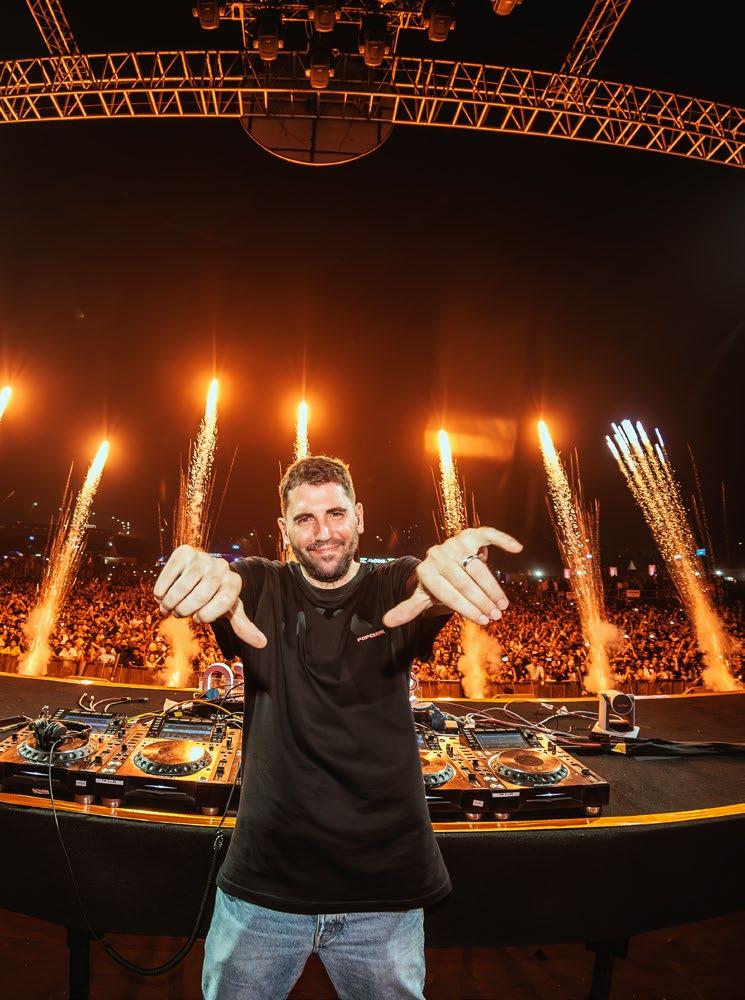
12

Destructo’s FriendShip Cruise Brings the Party to the High Seas
By FriendShip Photographers

Cali’s Winter Trade Show Resumes with Scores of DJ-Related Debuts By Jim Tremayne
24
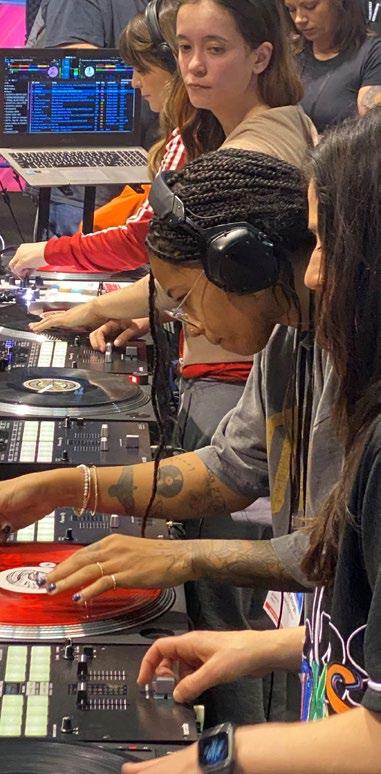
Oops!
The Top-10 Mistakes DJ Companies Make at Wedding Shows
By von Ahn28
Sea Party
Groove Cruise Celebrates 20 Years with Top DJ Talent By Groove Cruise Photographers
32


Balancing Act
Even With Another Big Year on the Horizon, REZZ Insists That Less Is More in ’24
By Mark Mancino
14
8 Feedback Seminars & Keynotes for DJX ’24, Set for Aug. 5-8 in AC
36 Club Spotlight
Gimme Gimme Disco
40 Playback
Headliner’s R2 Rotary Mixer

42 Studio Session
Akai Pro APC64 Controller
44 Mobile DJ Profile Gospel DJ Dr. D
46 DJ Business
Personal Finance Tips for Mobile DJs
48 Gear
New Products from AlphaTheta, ADJ & More
54 Tracks
Phat Tracks from Lovebirds, Kathy Brown & More
56 Club Play Chart
The Hottest Records, As Reported by Our Top U.S. Record Pools
As we creep closer to Miami Music Week (March 17-24), this issue previews that calendar block with a look at the sponsored parties, club nights and, of course, Ultra Music Festival. We’ll also revisit a talent who made herself known to us during that week seven years ago. Spinning after deadmau5’s set at a Mau5trap party inside the Treehouse club, REZZ – then just a 21-year-old upstart – wowed the crowd with her brand of eerie, crunching, downtempo electronica, not to mention her crazy LED goggles.
And now, all these years later, that sound has built the Canadian DJ/producer (aka Isabelle Rezazadeh) an ardent fanbase that flocks to see her headlining major festivals and clubs. In this issue, our Mark Mancino catches up with her on the brink of the release of her fourth full-length album, Can You See Me?
We also offer some vast pictorial perspectives from two of America’s top music cruises – DJ Destructo’s FriendShip and the Groove Cruise, which celebrated 20 years on the sea. As usual, some of the biggest DJs on the planet were on hand to spin onboard the ships and at the cruises’ Caribbean island stops.
In the Sound Bites section, Mr. Mancino connects with Dimitri Vegas. Best known for his work with his brother Like Mike, Dimitri’s dipping his toe into the solo-artist waters for the moment and we get the scoop. Additionally, we meet with Durante, another big DJ/producer talent recording for Anjunadeep, who’s releasing his debut LP, Enter , shortly. Give it a listen.
Reporting on the market’s new DJ-related products, we made our annual sojourn to Anaheim, Calif., for The NAMM Show, which after three years finally reset to its regular winter dates. In our report, you’ll find all the gear debuted at the show. From playback to PA, from studio to accessories, it’s all there. In this issue, Wesley King handles both of our gear-review columns. In Playback, he tests out Headliner’s throwback mixer, the R2 analog, knob unit; in Studio Session, he puts the Akai Pro APC64 Ableton Live Controller through its paces.
On the mobile-entertainer tip, we visit with Dr. D (aka Duane Knight), the Brooklyn, N.Y.-based spinner who’s known as the leader of the Gospel DJ Movement and has spent nearly 50 years on the decks. In his first story for the mag, Ohio-based jock Ryan von Ahn details the Top-10 mistakes DJ companies make at wedding shows. And in DJ Business, Massachusetts-based jock Ken Cosco offers some personal-finance tips for mobile DJs.
And in our Feedback section nearby, we reveal the first of 30-plus seminars, panels, and keynotes that will be presented at DJX ’24. Set for Aug. 5-8 at the Hard Rock Hotel & Casino in Atlantic City, N.J., DJX will produce its 39th show in 34 years, bringing seminars tackling the industry’s most-pressing issues, an exhibit hall with the latest DJrelated gear, and sponsored entertainment each evening. We hope to see you there.
Cheers,
Jim Tremayne Editor, DJ LIFE

editor-in-chief Jim Tremayne jtremayne@hazanmediagroup.com
editor-at-large Brian O’Connor boconnor@@hazanmediagroup.com
web editor and social media manager Mark Mancino mmancino@@hazanmediagroup.com
contributors Wesley King, Chris Caruso, Amanda Chavez, Shawn Christopher, Paul Dailey, Reed Dailey, Chris Davis, DJ Deets, Tony Fernandez, Tommy D Funk, Lexi Ferguson. Ryan Hayes, Greg Hollmann, Erik Miller, Lily Moayeri, Jordan St Jacques, Jeff Stiles, Ashley Teffer, Danny Turner, Phil Turnipseed, Joshua Volpe, Travis Wackerly, Curtis Zack
chart coordinator Dan Miller dmiller@hazanmediagroup.com
director of sales Josh Kerman jkerman@hazanmediagroup.com
creative director Janice Pupelis jpupelis@hazanmediagroup.com
director of technologies and project management Steve Thorakos sthorakos@hazanmediagroup.com
Chairperson & COO/Co-Publisher Robin Hazan rhazan@hazanmediagroup.com
President & CEO/Co-Publisher Shawn Hazan shazan@hazanmediagroup.com

visit our website:
www.djlifemag.com
516.767.2505
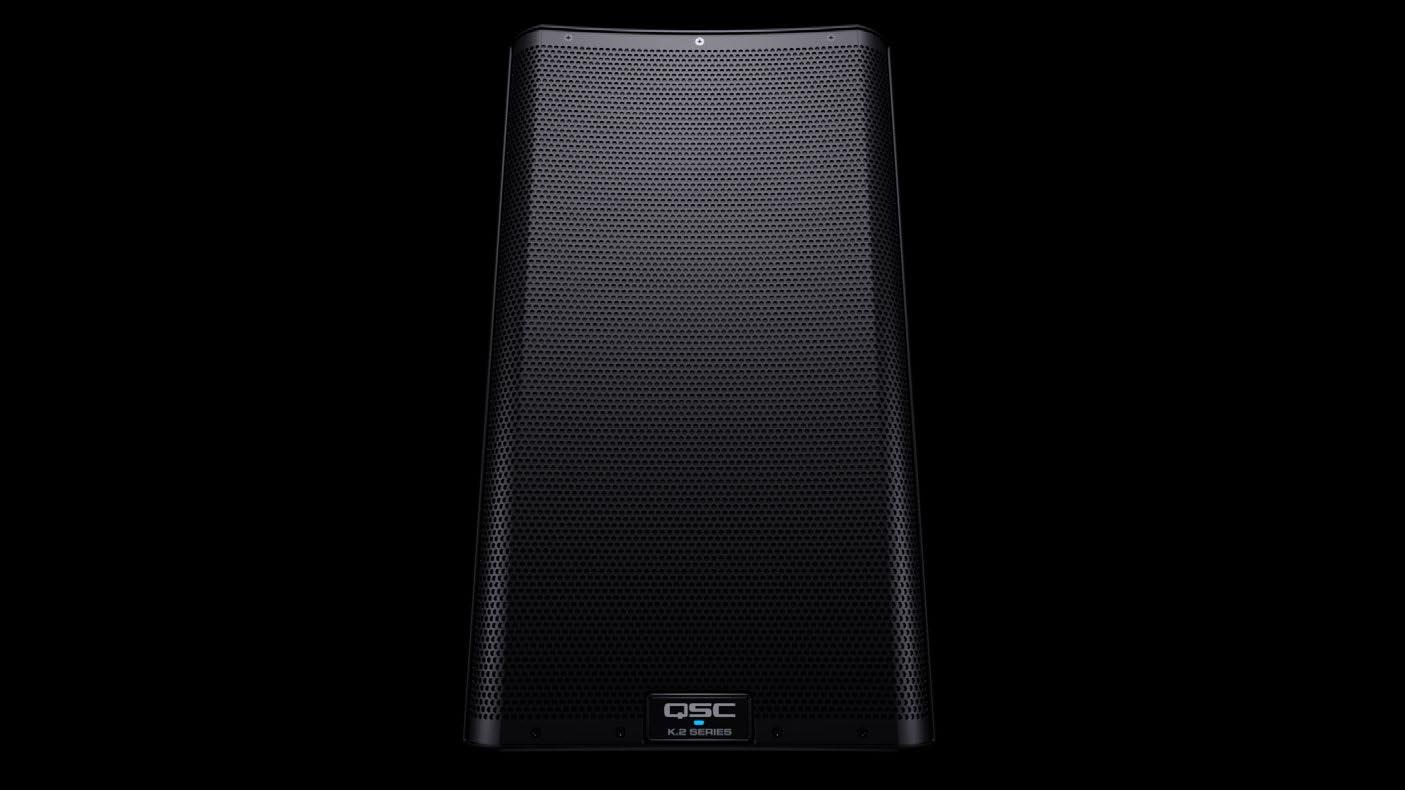
Even after a decade since their introduction, the K Family of loudspeakers, subwoofers and line arrays continues to be the standard for performance, quality, reliability and real, lasting value. With well over a million sold (and counting), it’s the world’s most beloved loudspeaker line.
Atlantic City, N.J. – DJX ’24 is set for Aug. 5-8 at the Hard Rock Hotel & Casino. Produced by DJ LIFE magazine and Hazan Media Group, DJX will present: the DJ industry’s largest exhibit hall featuring the latest industry technologies and accessories; 30-plus seminar, panel and keynote sessions tackling the hottest industry topics and presenting inspirational ideas; and sponsored evening events featuring top DJ talent.
On the seminar/panel/keynote front, DJX will present sessions appropriate to the mobile, club and studio portions of the market and will discuss tech, business and general inspiration. At press time, new sessions include:
Keynote Q&A: The Disco Fries

Since 2009, DJ/producer duo The Disco Fries have been cranking out remixes, original productions and star-studded collaborations that have lit up clubland. After meeting at Boston’s prestigious Berklee College of Music, Nick Ditri and Danny



Boselovic fused their very different tastes and interests into a hitmaking production unit and a globetrotting DJ team.
They’ve earned #1 radio hits (like “U Make Me”) and charttopping singles (like “Concrete Heart” with Vassy). They’ve produced tracks for Tiësto and collaborated with top EDM talents like Ferry Corsten, LODATO, Bingo Players, and Tommie Sunshine. In addition to other entrepreneurial pursuits, they introduced “Finish My Track,” an innovative online production service.
They attended their first DJX in 2008 and now they’re returning to AC to give back to the DJ community and inspire those looking to move on up. So, in an intimate Q&A session with DJ LIFE Editor Jim Tremayne, The Disco Fries will tell their tale and answer any and all questions whether it’s about production, DJing, new technologies or business matters.
For the very latest on DJX, please visit www.djxshow.com





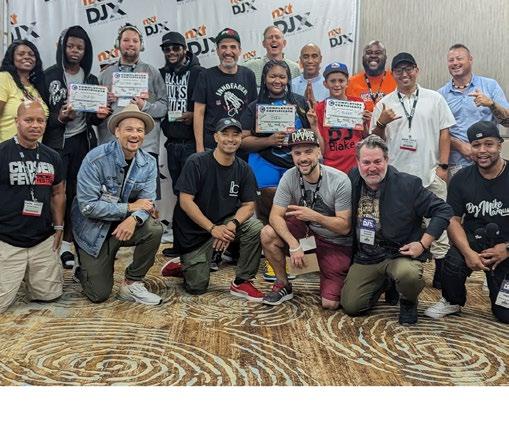


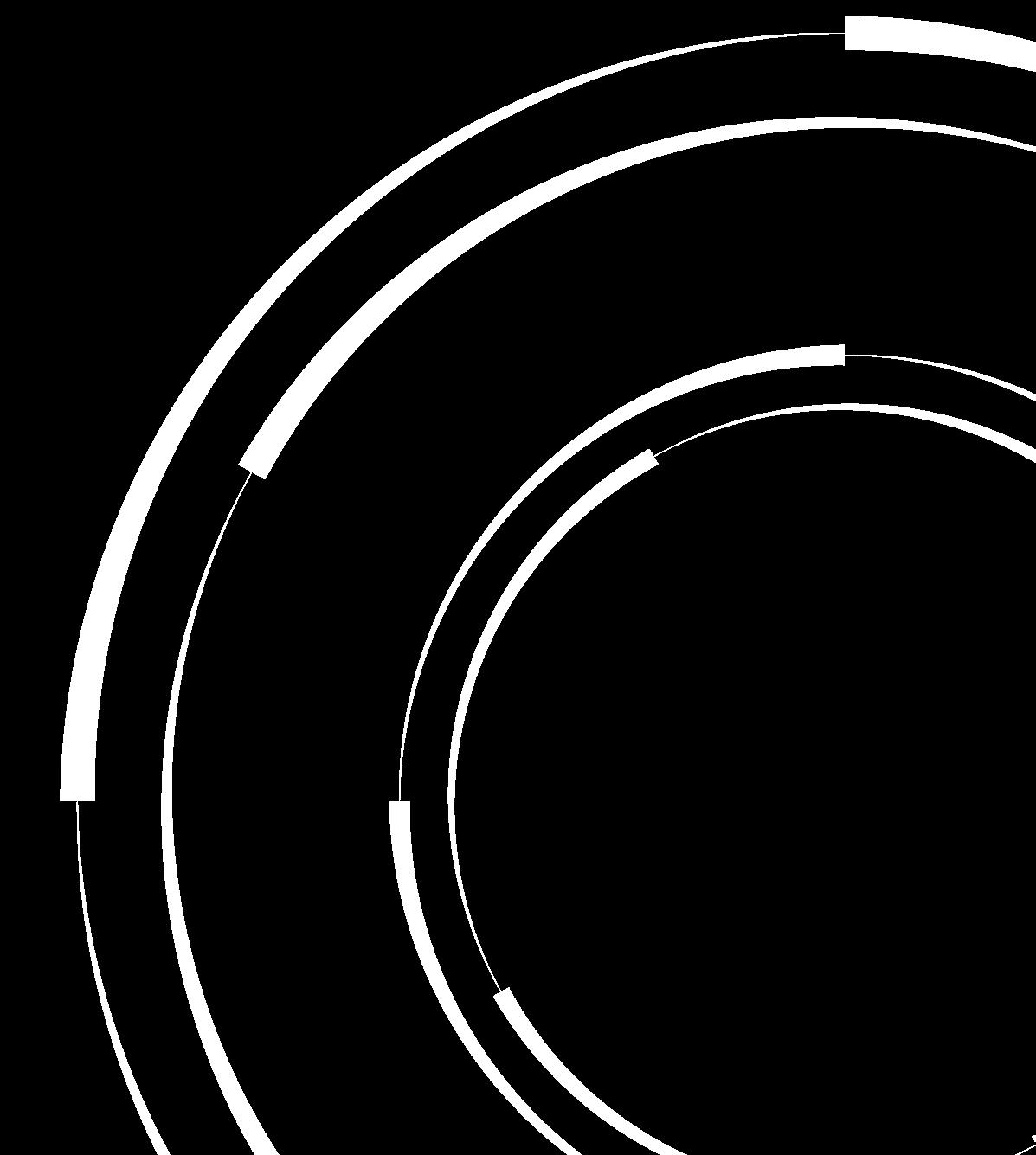
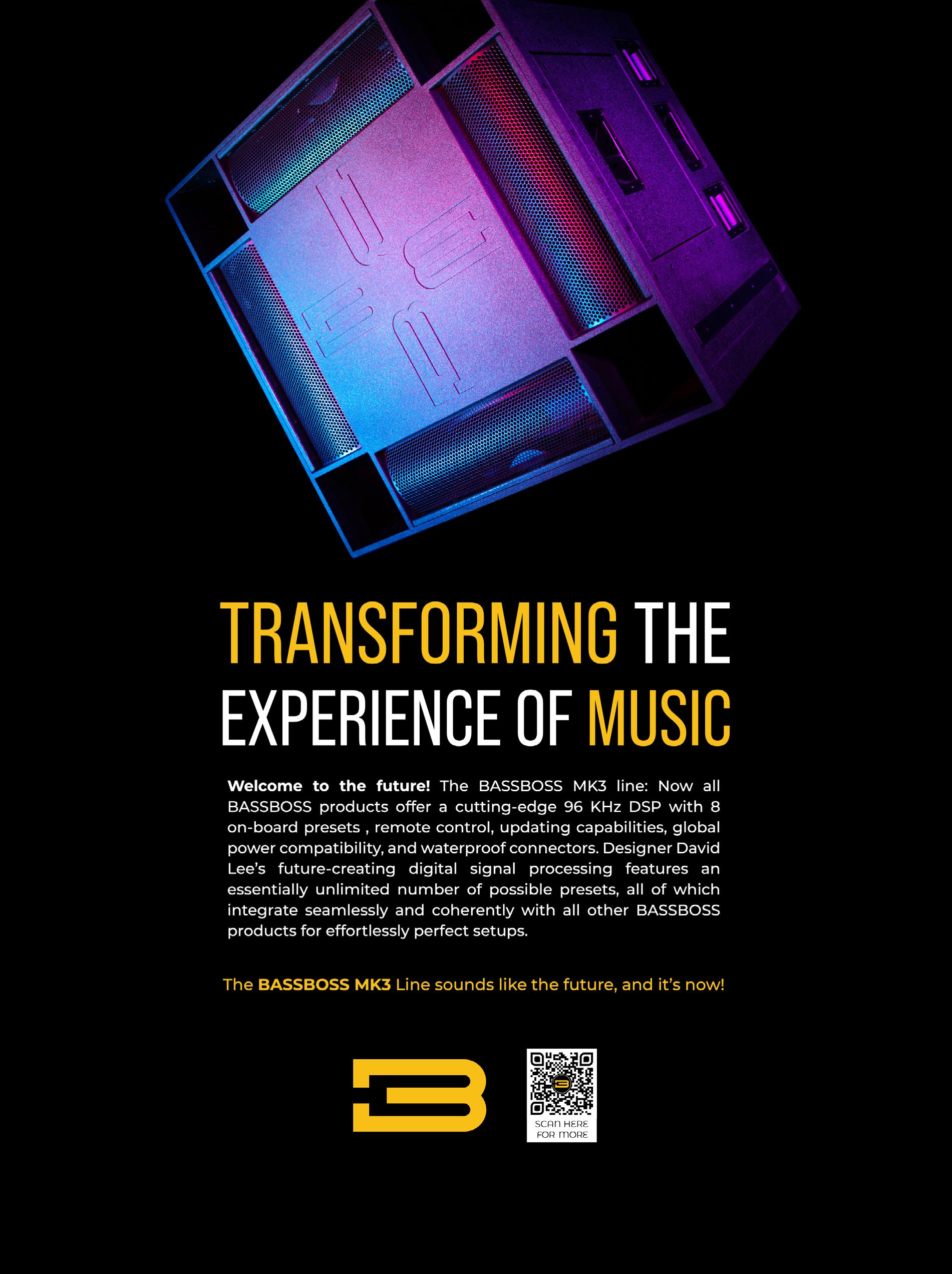
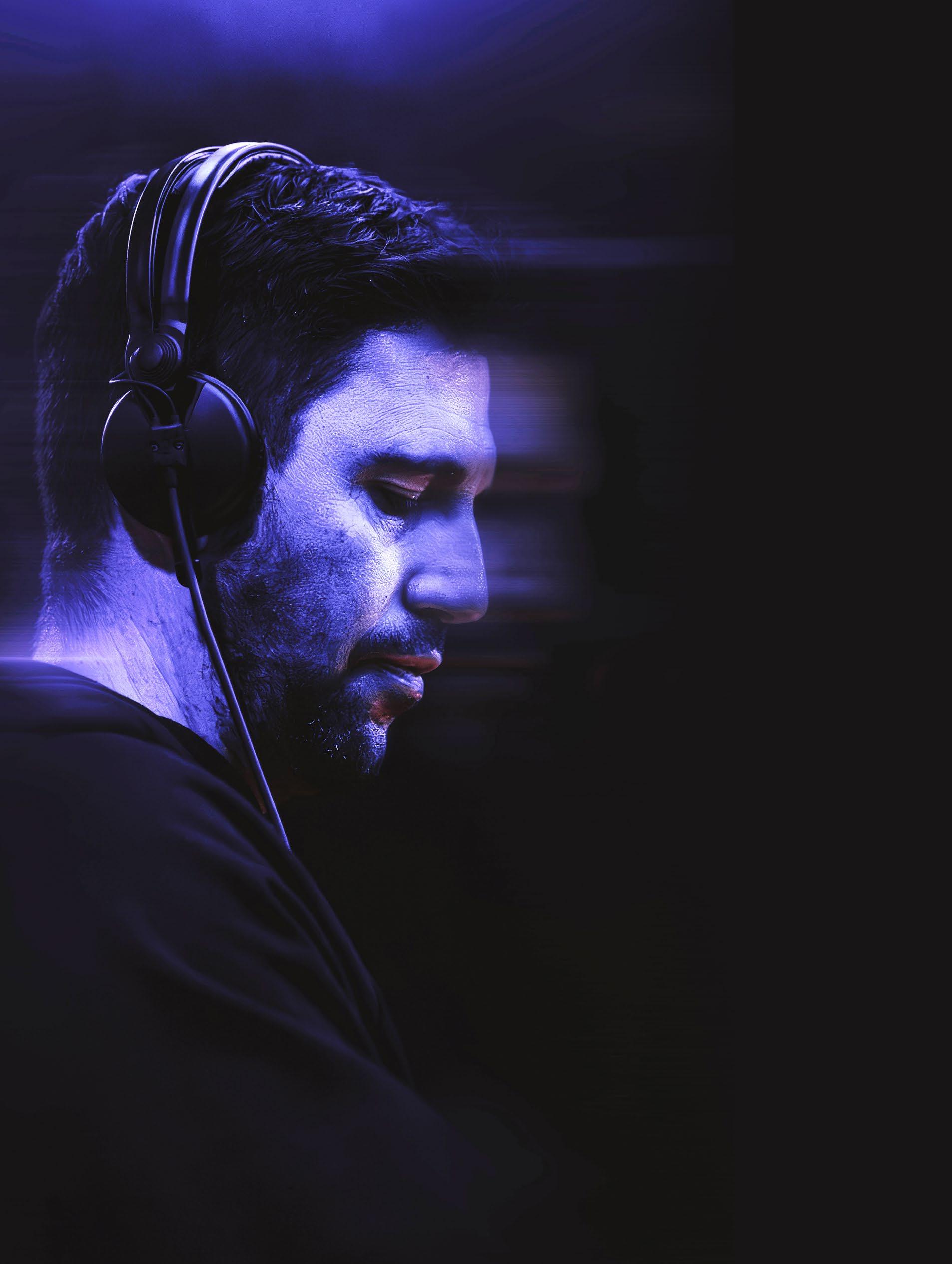
Dimitri Vegas has become a name synonymous with dance music, and that’s especially true when it’s alongside his brother, Michael Thivaios.
As one of the leading DJ/producer duos on EDM scene, Dimitri Vegas & Like Mike have not only built an extensive discography and cofounded the hitmaking Smash The House label, but they’ve headlined some of the biggest music festivals around the world. As a duo, they made their debut 15 years ago at Belgium’s world-famous Tomorrowland in 2009 – and the rest is history.
Now, Dimitri Vegas is taking a short break from the duo and making some artistic waves on his own. His new single, “Good For You,” out now through the House of House imprint, is a feelgood collaboration with Chapter & Verse and the Grammy Award-winning duo Goodboys.
On the decision to release as a solo artist,
Dimitri Vegas reveals that he looks at it as two sides of the same coin, where both are equally electrifying. Going solo, he says, allows the duo to “dive deep into our personal creative ocean, while our festival-inspired sound adds extra layer of dynamism when we’re together.”
Upon our sit-down with Dimitri Vegas, he fills us in on his exploration of dance music, stand-out career moments, DJ set-up and studio preferences, his early memories as a DJ/producer, the success of Dimitri Vegas & Like Mike, and what the future holds for his solo endeavors.
DJ LIFE: How and when did you first begin exploring electronic music? Were you classically trained?
Dimitri Vegas: I was never classically trained, but I connected with a wide range of music from a super early age… so, everything from pop and disco to early hip hop and then later dance music. I was about 13-years old, and I was at a summer-camp/holiday thing in Belgium, and I met some kids who were into DJing at that point. I saw them playing with vinyls for the first time, and I was like, “That’s cool – I want to do that!”
From there, I started DJing and collecting vinyl in my teens and then left home early to pursue working in several European holiday resorts, DJing, before landing in Ibiza. My brother Mike later joined me out there. After I got home a few years later, we built up our studio and it all kind of snowballed from there.
DJ LIFE: When did you first know that you wanted to pursue a full-time career in music?
Dimitri Vegas: From about 12-years old onwards, I think I always knew I wanted to be involved in music in some capacity. But I guess it wasn’t until I landed my first proper gig DJing in Europe as a holiday rep that it really hit me: I could do this full-time. As years went on and eventually my brother Mike and I teamed up, the drive just grew stronger.
DJ LIFE: Can you share one of your earliest or standout memories from a DJ set or live show?
Dimitri Vegas: There’s been so many, but, of course, it’s hard to beat the experience of playing Tomorrowland [in Boom, Belgium]. Making our debut for the festival back in 2009 and our first mainstage play in 2010 are moments I will never forget. The festival has evolved so much since those early days. But even back then, the magic of Tomorrowland was palpable. I don’t think I’ve ever been so nervous and excited at the same in my entire life. What an incredible feeling it was.
DJ LIFE: What’s your current DJ set-up? What was your first DJ gear?
Dimitri Vegas: Right now, we use a Pioneer DJ CDJ-3000 and DJM-900 setup. My first set-up? A far cry from what I’m using now. It was a pair of battered, belt-drive turntables, and a cheap mixer that was more duct tape than tech. But hey, it was the start of something epic, right?
DJ LIFE: When it comes to music production and your studio, what’s your preferred studio set-up – programs, plug-ins, etc.?
Dimitri Vegas: My go-to is Apple Logic Pro and Sony ACID Pro. As for plug-ins – [LennarDigital] Sylenth1, [Native Instruments] Massive, reFX Nexus and [Reveal Sound] Spire are my trusted VSTs. I prefer to work with samples, so my workflow in ACID is super-fast, since I’ve been using that for over 20 years.
DJ LIFE: Your new single, “Good For You” with Chapter & Verse and Goodboys, is out now. How did this song come together and what can you share with us about it?
Dimitri Vegas: We wanted to blend a throwback vibe with a fresh twist, and once we had that topline, we knew we had fire. The single is simply the result of pure chemistry and a shared passion for that feel-good, festival-crushing sound that summer is all about.
DJ LIFE: It’s still early in 2024 – what’s on the horizon for you this year?
Dimitri Vegas: This year’s about pushing the envelope, exploring new soundscapes, and bringing people together after a crazy couple of years. There’ll be full progress on the album, and also a big solo-surprise for Tomorrowland. I am super-excited with what is in the planning for 2024!
DJ LIFE: What are some of the biggest differences be-
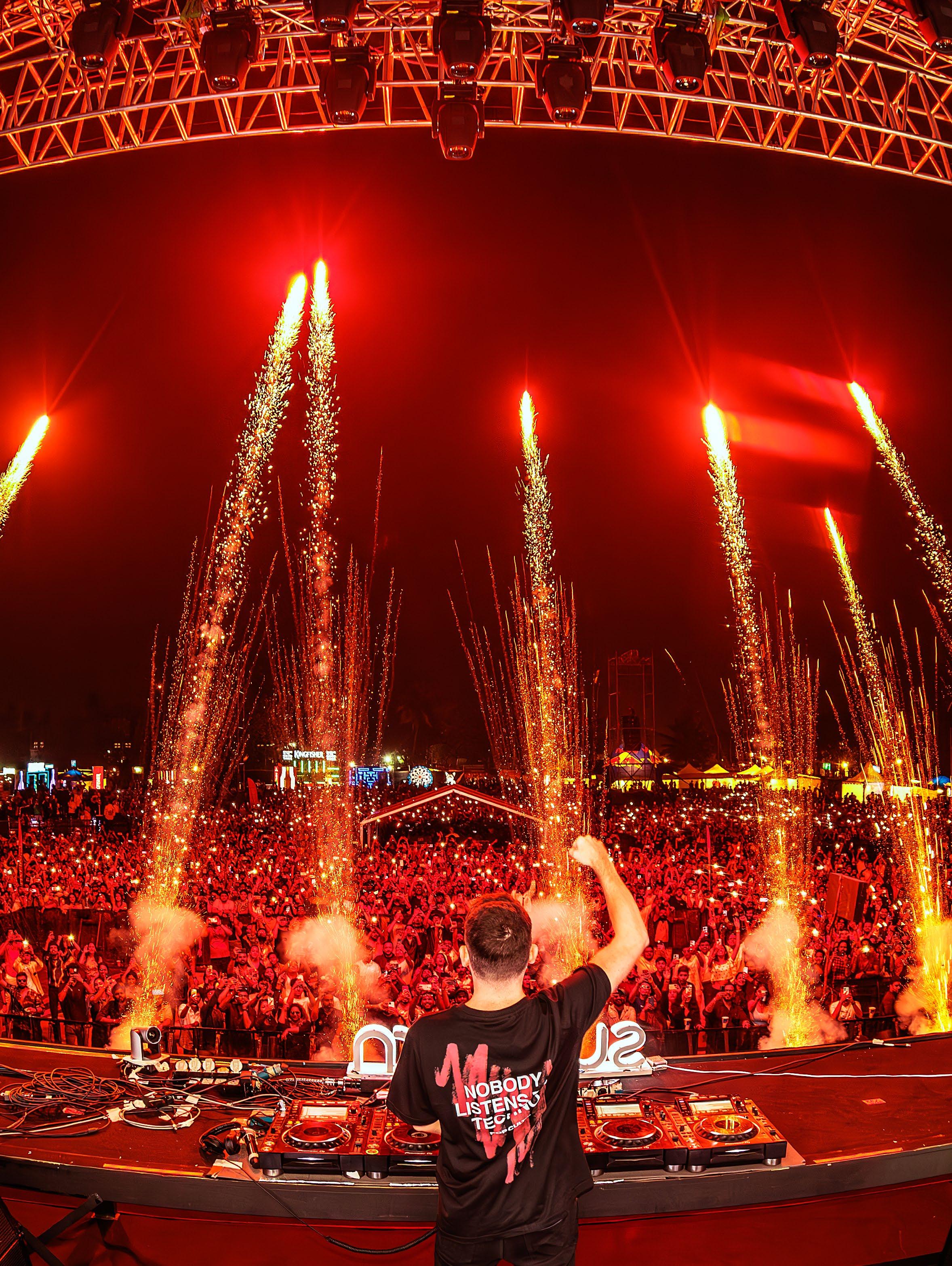
tween working as a solo artist rather than as Dimitri Vegas & Like Mike?
Dimitri Vegas: Going solo lets us dive deep into our personal creative ocean, while our festival-inspired sound adds extra layer of dynamism when we’re together. It’s two sides of the same coin, and both are equally electrifying.
DJ LIFE: Can you offer any insight to up-and-coming DJs and producers?
Dimitri Vegas: Stay relentless. The path is never straight, but the twists and turns are where you find your sound. Network, craft your skill, and, honestly, just throw yourself into every opportunity and never give up. Persistence is key and the No. 1 skill in my opinion.
DJ LIFE: Is there any advice you wished you had gotten when you were first starting out that might have helped you in the long run?
Dimitri Vegas: I do regret not taking music classes as a kid. Of course, back then a DJ wasn’t a producer per se, and it was more about the records you played than the songs you made. But today especially, it would have been a huge extra asset to have had that musical training.
DJ LIFE: Where do you see yourself or hope to be five years from now?
Dimitri Vegas: Hmm… five years from now? Well, I’ll still be the guy making the crowd go wild, maybe with some new tech, new sounds, but the same old passion. Who knows? Hopefully, even with my own blockbuster movie under my belt.
– Mark Mancino
It’s been nearly a decade since he released his first commercial track, but for Kevin Durante, there’s no time like now for another debut.
After a career of releasing singles and EPs on a variety of esteemed labels like Higher Ground/Mad Decent, Armada and Openers, Durante never released a full-length, although he admits that it’s always been an artistic dream of his. Accordingly, he’s has spent the last couple years culling together tracks for Enter , an impressive, first fulllength. Set for April release on Anjunadeep, the 13-song effort is filled with diverse, but appropriately deep and groovy dancefloor sounds.
A winning mix of shimmering melodies, tough techy rhythms, pulsing vocal-house tracks, and euphoric oldschool electronica flavors, Enter is one of the better electronic full-lengths of the early year. Two singles lead the way – the gleefully Underworld-ish “Hot Night” featuring HANA and the more groovy, but no less sublime “Holding On” featuring Nathan Nicolson.
Expect to hear Durante playing plenty of Enter during his set at the Anjunadeep’s party at Oasis on March 23 during Miami Music Week. We caught up with the Los Angeles-based Durante, 31, to discuss his journey and his latest debut.
DJ LIFE: Musically, what were your first influences? What made you want to pursue music?
Durante: My mom played a lot of New Order and The Cure around the house growing up. There’s pictures of me banging pots and pans together like a drum set when I was only 2. I was always fascinated by music and how it could make me feel. I remember staring at speakers and imagining a little band inside making all of the great noise. Music and sound is something I’ve always been captivated by my entire life. It wasn’t until later that I was able to channel my love of music into something more. Over time, the progression feels very natural.
DJ LIFE: What were the first DJ or electronic artists that you appreciated?
Durante: The Chemical Brothers, Aphex Twin, Cobblestone Jazz, and Cirez D.
DJ LIFE: Were you a clubber or a raver? What was the scene like where you grew up?
Durante: I was a resident opener for the raver-friendly weekly at a bar near my university in Gainesville, Fla. The scene was very accepting, and I loved being able to learn to open up a room here properly. I’ll always remember my 21st birthday when the owner of the club threw me this big party with balloons all over. Good times.
DJ LIFE: Did you learn any traditional instruments?
Durante: I started taking piano lessons at the age of 7. I stuck with it for a while, but fell off once I started learning production on a computer.
DJ LIFE: I read somewhere that Duke Ellington was a big influence on your musical approach. How does that influence show up in your musical output?
Durante: Duke Ellington’s band is amazing at keeping the
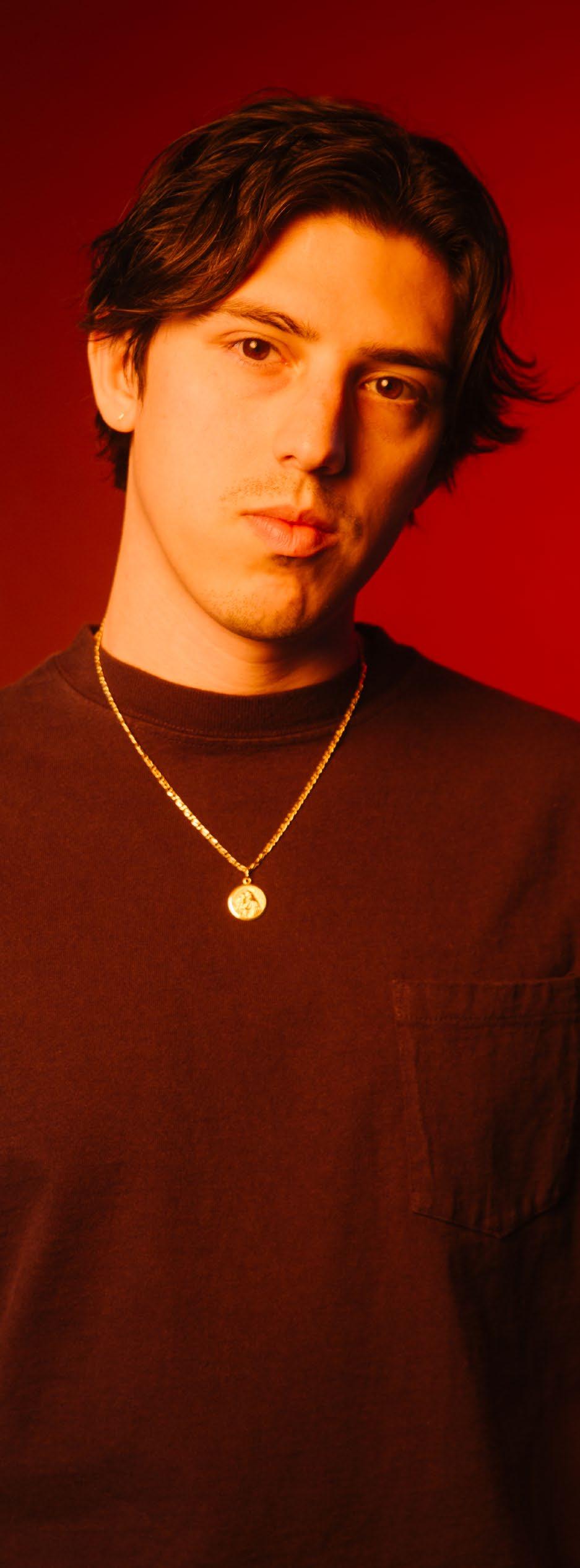
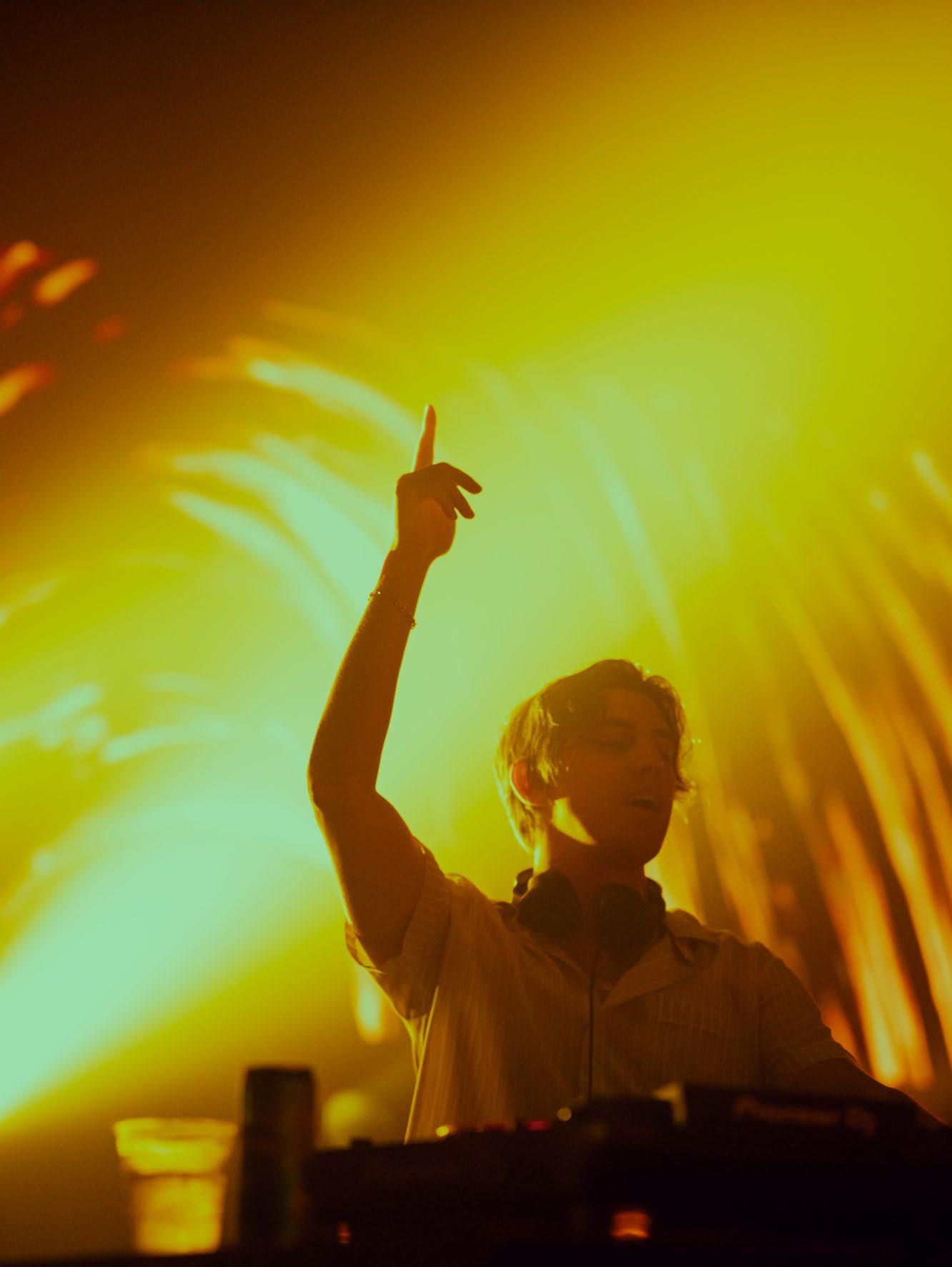
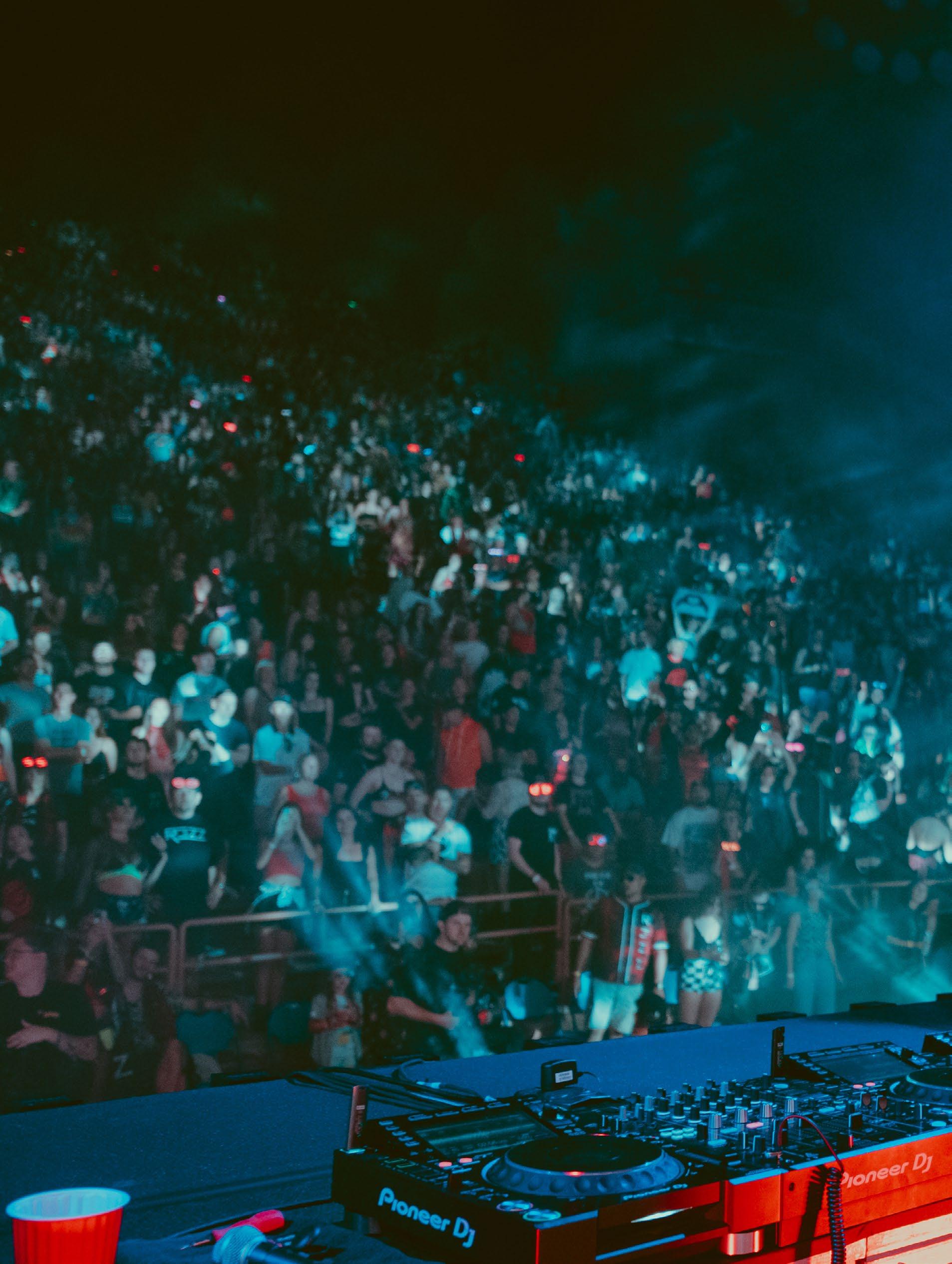
EVEN WITH ANOTHER BIG YEAR ON THE HORIZON, REZZ INSISTS THAT LESS IS MORE IN ’24
From her early days as a high-school-dance DJ to headlining major tours and playing festival mainstages, REZZ has come a long way and can now be counted among the electronic-music elite.
Born Isabelle Rezazadeh, the 28-year-old DJ/producer began releasing music in 2015 and boasts a discography that includes five EPs and (very soon) four full-length albums on labels like deadmau5’s Mau5trap and Skrillex’s Owsla. She’s built an ardent fanbase with an ominous, eerie downtempo sound that really has no peer in the scene.
And now with the launch of her new label, HypnoVizion, REZZ is eager to showcase not only her own creations – like her 2023 departure EP, IT’S NOT A PHASE – but also up-and-coming talent and established artists. So far in 2024 alone, REZZ and her label have released a pair of crunching collabs – “Black Ice” with Subtronics and “DYSPHORIA” with Holly.
And soon on the horizon is Can You See Me, REZZ’s fourth full-length album. Known to many dance music lovers for her spiraling light-up goggles, REZZ is enthusiastically gearing up for a big 2024, but one that is more measured than in times past. As she says about the coming year, less is more. Taking time out of her busy schedule, REZZ connected with DJ LIFE between her tour dates and putting the finishing touches on the album. Here’s what she had to say about what she has in store for her 2024…
REZZ: For 2024, it’s going to be focused on the concept of less is more. It’ll be bigger events, more rare, but a lot more thought and sort of themed. The shows that we’re going to be doing will be album-themed. The album is called Can You See Me, so we’re going to be doing some major dates – some medium-sized plays, but also some larger plays. We’ll be doing Can You See Me live at Red Rocks, [as well as] Miami, Phoenix, and [probably] theme my Brooklyn Mirage show as Can You See Me, as well.
DJ LIFE: How far along are you with this album?
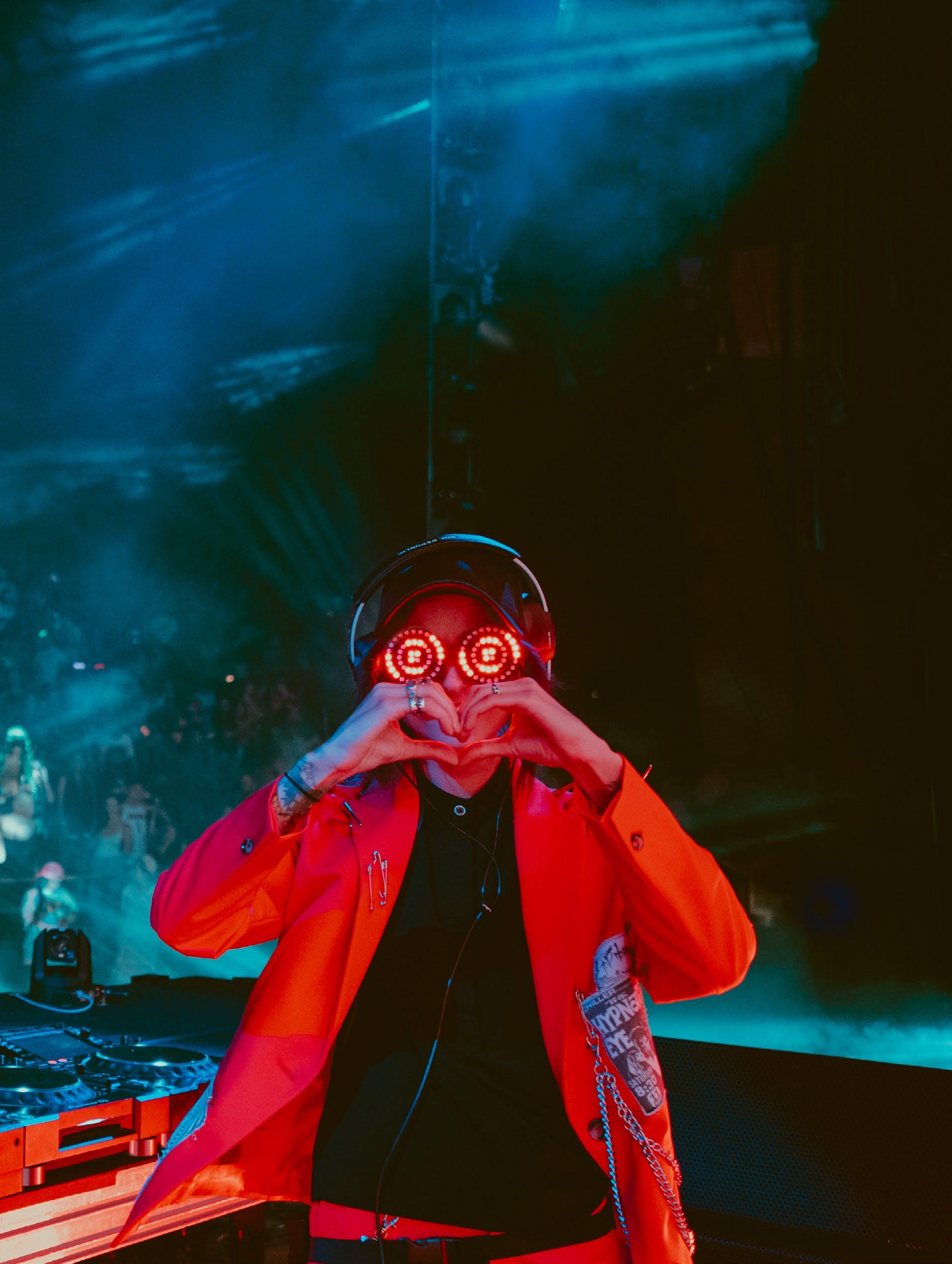
DJ LIFE: With new songs released, an upcoming album, a new label, and show announcements, 2024 is looking like quite a year for you…
REZZ: With the new album, I’m wrapping up the final two songs and it’s going to be a 10-track album. Originally, it was going to be eight tracks; but, at the last minute, I’m actually finishing up two more today. This is without question the best album I’ve ever made. Nothing even compares, in my opinion, but I don’t know if that’s just me being biased and filled with serotonin and dopamine. I’ve just been working and cranking these tracks out so fast. In terms of capitalizing on electronicdance-music elements, bass music, and just everything that I love about electronic dance music... there are barely [any] vocals on it and it’s a lot of instrumental, heavy stuff. Every single track is meant to be heard in a live setting.
DJ LIFE: How does it differ from your previous releases?
REZZ: Spiral, which came out in 2022, was more or less that I had just made a bunch of songs and I was like, “This is an album!” That’s usually how I go about it. I make music, I make more music, I put it together, and then that is my next EP or my album. I usually go into it pretty aimless in terms of sound; I make what feels natural. In 2023, I released my IT’S NOT A PHASE EP, because I just naturally started making stuff that sounded like it had a different vibe to it than my usual stuff. So, I complied those songs together and called that an EP. But with this one, things were

slightly different because as soon as I released my last EP, I felt this unbelievable need and urge – and I cannot stress how immediately clear the vision was – that I needed to make a ton of trippy, heavy, bass music that was going to go off in a live setting.
Why? Because on my IT’S NOT A PHASE project, it was the polar opposite of that. None of those tracks were meant to be played live – they were meant to just be listened to in a way that was sort of like, “Hey, look at this new style I can make, just for fun.” Whereas now, I miss making music that I can play live. I want to play this shit, I want people to hear it, and I want it to smash in a live setting. I have made some tracks in my past that fit this Can You See Me era; however, I never really went in on it or thought that this was going to be my next sound or next thing that I want to do. I knew about seven months ago that this was exactly what was going to happen; I knew I was going to make this album. What can you tell us about your recent collabs and your creative process on them?
It definitely depends on the song, but especially with these tracks. They all started where it was either I had an idea – a drop idea, a melody leading into a drop – that I would send and ask what they thought about it, or asked them to add to it, and then we complete it. But then sometimes someone sends me an idea first and asks me if I can add to it.
Any examples?
With “Black Ice,” Subtronics sent me the idea first, and I was like, “Oh yeah, for sure.” I literally opened the project up in my studio and finished it within six hours. Every situation is a little bit different, so it depends, you know? At the end of the day, someone sends someone an idea, the other contributes to it, and then we just wrap it up. The best-case scenario is that it’s usually very fast – somebody sends something, and then somebody sends something back ASAP. That is literally my favorite type of collaboration ever because it just shows the initial spark of inspiration and drive to complete the track is there – it just gets done!
DJ LIFE: Is there a downside to it?
My least-favorite collabs are the ones that drag out because someone is overthinking something. I am not an overthinker when it comes to music, and I’m very much, “This is the way it is, or this is the way it needs to be.” To me in my head, things always feel very black and white [laughs]. Some people are different, and I respect that, too, because I think that’s what happens when you have such a big brain for production and there’s so many different options for things, thousands of different ways to work on one song.
For me, I work very minimally, and I try not to use too much equipment or too many resources. A lot of my collaborators have really appreciated that with me because that in itself is sort of a quality. It was a super-smooth process on these collabs, and all of these tracks have gotten done so quickly. I basically started making these tracks six, seven months ago in a new studio that I’ve just had built in my backyard, so I’m pretty much in here every single day.
DJ LIFE: What’s your studio set-up?
REZZ: It’s funny because it’s technically a shed [laughs]. The guys that I had build it – it’s actually a shed-building company – I told them exactly what I needed, almost to serve as an office space. I chose the all-black exterior and made it super-ominous. Inside, I made the walls white because I wanted all red lighting – so, the whole thing is lit up in here… it’s very red and very ominous. There are decorations everywhere, like creepy decorations – and that’s just like the atmosphere.
DJ LIFE: What about the gear?
REZZ: I use monitors that are 8.5-inch JBLs. I use a MacBook with a monitor above it – a screen that definitely isn’t needed, but it’s nice – and then I use a Focusrite sound card, but I don’t use it all the time. I’m usually a sitting-on-my-couch-with-my-laptop-and-headphones kind of person. But now that I’m in the studio – and I’ve gotten a really comfortable chair – I’m able to sit here for like seven, eight hours at a time and not have it be a problem.
DJ LIFE: What else? Headphones? DAW?
REZZ: The most important part of all is that I use Sol Republic headphones. These headphones are super-dated, but Sol Republic is simply the brand that I started with back when I was 19. They’re the only thing I’m used to using, so I know the ins and outs of them. I know what the music is supposed to sound like with them. I could sit there with my laptop, headphones, and Ableton Live and be totally cool with it. In terms of my JBL monitors, I use them as a secondary reference for when I want to hear the music loud in my studio. They actually remind me of my Sol Republic headphones because they’re a bit heavier on the bass, so it kind of feels nice to listen to music loud on them.
DJ LIFE: As far as DJing, what’s current set-up? What was it like when you first started out?
REZZ: When it comes to DJing, I use [Pioneer DJ] CDJ-3000s now with a [Pioneer DJ] DJM-900 mixer, which is pretty standard for most people. I just use my USBs on the 3000s and DJM-900. Actually, [Native Instruments] Traktor was the first platform I used. There was a little MIDI machine I started out with, but I believe that I was also Traktor-related. I used to bring the Traktor
controller to shows with my laptop.
DJ LIFE: What were your early days of DJing like?
REZZ: The first set I ever played in front of an audience was my high-school Halloween dance. I was dating somebody at the time who was a DJ aspiring to play places. So, I kind of got into it because of that and thought it looked really fun. At that time, I was already really obsessed with dance and electronic music – I just fell in love with it. I was also introduced to the really cool electronic music early on. I got into Justice and deadmau5 pretty early, and definitely looked up to real “artists” from an early age. I think that helped to develop my taste for a more obscure and eerie side of electronic music, rather than the mainstream or big-room stuff, which I wasn’t really into.
DJ LIFE: So how did the high-school dance go?
REZZ: I had to practically beg my principal to let me play at the dance, and he let me do it. I wasn’t really the best student – I wasn’t terrible, but I wasn’t the best – so, it was kind of surprising that they let it slide. The reason at the end of the day is because they didn’t wanna spend money on a DJ [laughs]. So, it was pretty much like, “Well, Isabelle will do it.” I remember getting off stage that day and all of the [students] were like, “That was the best dance ever!” I walked into my mom’s car, and I was just peaking from it, thinking, “Oh my God… holy shit!” I felt really moved and just absolutely lit up from the experience.
DJ LIFE: Is this when you realized that DJing would be your life’s path?
REZZ: No, this was still something I thought would be a hobby for me and something that was really fun, but I wasn’t considering this would be my career yet. At that point, I was getting random gigs, I was playing for free or anywhere that would pay me $100. I would take a bus to Downtown Toronto, sleep on random people’s couches, and play these underground raves. After that, I remember a lot of sketchy things happened in nightlife and I was exposed to some raunchy shit for a then-16-year-old, so I wasn’t sure if this was really for me. By the time I turned 17, I wasn’t really DJing as much, but I graduated high school and had all this time off.
DJ LIFE: What changed for you?
REZZ: That’s when I started going to a lot of music festivals and events, just for fun, as an attendee. I had also sparked interest in producing music, and my friend Connor helped me put Ableton Live onto my computer. I saw deadmau5 live at HARD Day of the Dead in 2013 – at this point, I was 18 years old. I felt so inspired that I went home to immediately work on a track that I had been working on for a couple of months.
DJ LIFE: What style of track was that one?
REZZ: It was very techno. I think it was at 126 BPM. I did grow up liking techno quite a bit. When I made that song, I didn’t do anything for a month or so, but after I got home from HARD Day of the Dead, I went back on my computer to make tons of shit to see what would happen. Then, I immediately started making 80-, 85-, 90-BPM tracks, where it’s like slow and trippy.
DJ LIFE: The REZZ sound…
REZZ: I literally became so addicted and obsessed that I would not hang out with people or talk to people. Even when I went out, say somebody would try to hang out or flirt with me, I would say, “Absolutely not, no way, I’m working on music, bye.” That was when I absolutely fell in love with producing dance music, and at that point it made me realize that I did really want to pursue DJing again, but I want to DJ my
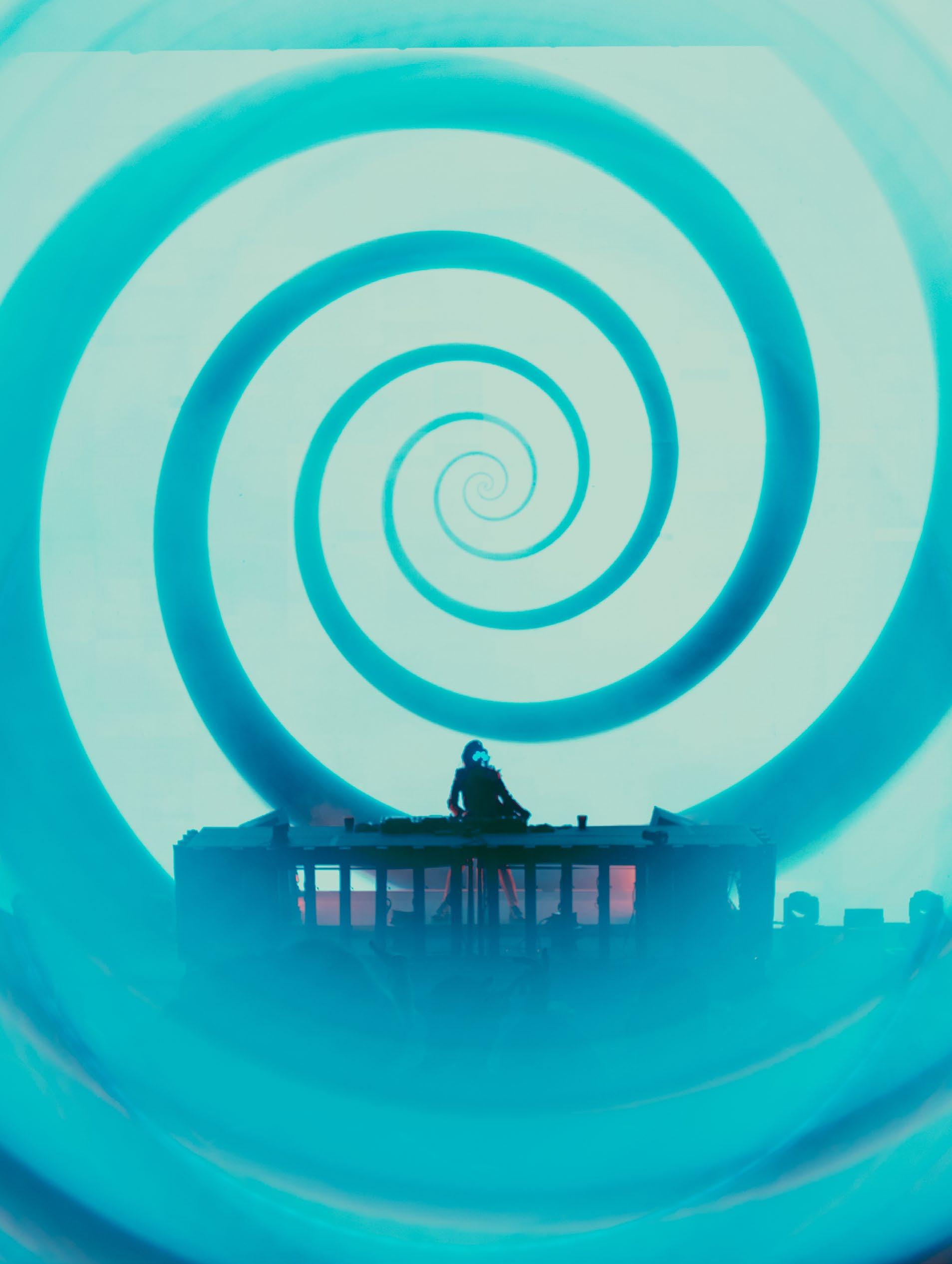
 Jonathan Cyga
Jonathan Cyga

I’m just a little too insane, too much of a perfectionist.
DJ LIFE: You see it as an artist-friendly label?
REZZ: I definitely want the artists to have their own freedom. I love the idea of HypnoVizion evolving into a multigenre label. Of course, I want to maintain and generally darker aura because that’s what I connect with. I don’t really like to listen to music that’ll make you happy or uplifting. I prefer that darker and grungy feel, so I want the label to emulate that. I also want artists who resonate with this eerie, creepy music – I want that kind of stuff on HypnoVizion. It doesn’t even have to be in proper electronic-dance-music format. It can also be in punk tones and all sorts of different genres – as long as it’s giving a creepier or eerier vibe.
DJ LIFE: And that’s on the live side, too?
own music. I didn’t want to be the stereotypical DJ that mixed it up at every concert and play differently for each crowd – like dubstep one night, techno another night, etc. That was not something I wanted to do because I’m not that kind of curator. I’ve learned that and it just made me realize I want to make and then play my own music. I wanted to not only curate the music, but the entire environment. If I wasn’t able to do that, I don’t know if I’d care to be the DJ.
DJ LIFE: What other 2024 events have you excited?
REZZ: Definitely going to do some HypnoVizion events and have the HypnoVizion artists supporting the shows that I’m playing. Basically, I wanted to create a home for sound and music like this. Some of the artists that I’m super into or inspired by sometimes feel like they don’t have a place to release their music. The major labels don’t want it, other labels don’t want it because it’s focused on trance, or house, or techno. So, I want my label to feel like a perfect home for the specific artists that make music that’s somewhat down the same lane as the music that I make.
DJ LIFE: From the artist’s standpoint, what’s your view on social media now?
REZZ: There are a few back-to-back sets that I’ll be playing this year. I don’t know if I can reveal them just yet, but one that was just recently announced is a back-to-back set with deadmau5 at Tomorrowland [in Belgium as REZZMAU5]. I’ve kind of learned my lesson over the last few years – and I’m also very fortunate to have the choice – to slow down on my touring schedule. And that’s exactly what I’m doing in 2024… where my schedule is less is more. More key, important plays, but also not where I’m like killing myself on the road [laughs].
DJ LIFE: How do you maintain a good work/life balance?
REZZ: I can definitely see why some artists don’t want to be online as much because it’s kind of a scary place. You’re opening yourself up to be perceived by so many people with so many different opinions. I’ve seemed to have had a pretty pleasant experience on social media. Sure, I’ve had a few instances where people might “shit on me” or whatever, but for the most part, I see the love, positivity, and that most people have been impacted by what I do. I try to pay attention really only to those people, so in those cases I like to be pretty accessible to them. At the end of the day – me as a person – I’m not that mysterious. People sometimes take it so seriously. They want to be like Daft Punk and not go on social media. But for me, as much as that sounds kind of nice [laughs], that doesn’t feel authentic to me.
REZZ: There’s a really good balance that I’ve learned over the last year or so. I can’t really force myself to take every opportunity that comes to me anymore because that just doesn’t work for me and the longevity of my career. Even with the quality of my music, everything is just better when I’m able to have time to think and process what I really want my show to be like and what I want my music to sound like. For me, 2024 is really going to speak to that, in my opinion. You’ll see that I become a little more rare, but the shows themselves are going to be so much more thought-out.
DJ LIFE: Tell us about the new HypnoVizion label…
DJ LIFE: Any advice for aspiring DJ/producers?
REZZ: With creating music, a lot of people will hop on trends because that’s what’s popping. I think it’s very obvious what’s popping right now – that’s drum-n-bass and techno. When I see a trend happening, I run the other way and do the complete opposite [laughs]. It’s great to be inspired by someone, but don’t copy somebody else’s sound.
DJ LIFE: Anything else?
REZZ: The label is also going to take the same approach. I really want to choose quality over quantity for this label. I want to make sure that all the artists we sign and for whom we release their music, I want to genuinely back it… I want to like it. There have been a few times where my management has sent me some stuff they think is cool, but I don’t like it that much. I’m definitely very involved, and I feel like that’s probably going to remain the case because I think
REZZ: Also, if you know for sure that you want to do this as a career, it’s so important to be very patient and loving towards your passion. Everybody experiences writer’s block. There are going to be good days and bad days. Some days you’ll make music that you love, some days you’ll make music you don’t like, and some days you might not make any at all. But always remember to be respectful to the fact that you have a passion. Know when to take risks and when to push harder on that gas pedal… Make music that you want to make and do not even consider what anybody else is thinking. You’ll find that most artists that people admire and look up to, they’re so respected because the music they make is what they like – it’s what they think is cool.


Miami, Fla. – FriendShip – DJ Destructo’s annual, six-day, music cruise – saw the Norwegian Joy liner navigate a round-trip journey from the Port of Miami to Harvest Caye, Belize, while featuring some of our favorite DJs and performers.
Running this past Jan. 6-11 and spanning nearly 2,000 nautical miles, FriendShip offered surprises like a reunion set from Dog Blood (Skrillex and Boys Noize), their first since 2019, a b2b set from Chris Lake and Chris Lorenzo, plus performances from faves like Justin Martin, Bob Moses, Dr. Fresch, Rusko, Todd Edwards, DJ Craze, G-Rex and, of course, the event founder, Destructo (aka Gary Richards). It all looked like this:

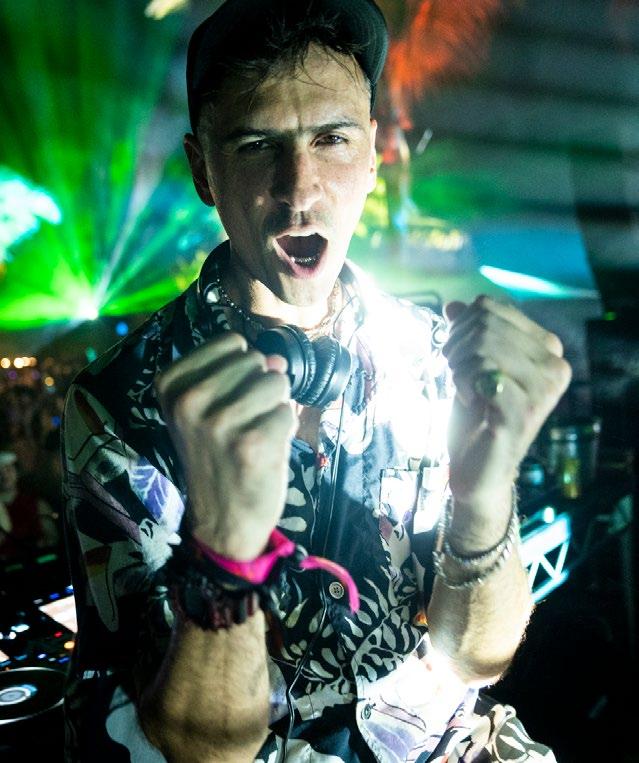
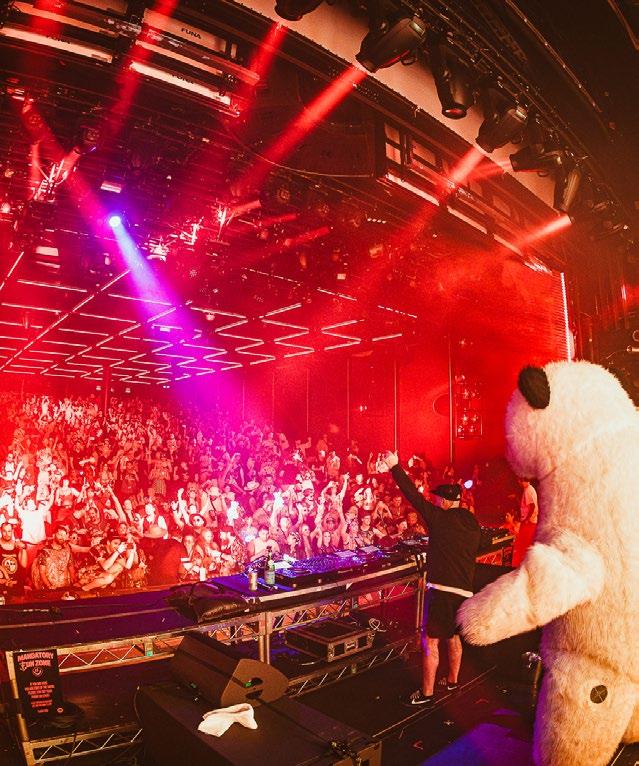 Photos by Rukes.com, Erike Voake & Oh Dag Yo
Ruff Stuff: Justin Martin & big furry things. Oh Dag Yo
Belize Bound: Norwegian Joy at Harvest Caye. Rukes.com
Go Hard: Boys Noize in the midnight hour.
Erik Voake
Photos by Rukes.com, Erike Voake & Oh Dag Yo
Ruff Stuff: Justin Martin & big furry things. Oh Dag Yo
Belize Bound: Norwegian Joy at Harvest Caye. Rukes.com
Go Hard: Boys Noize in the midnight hour.
Erik Voake
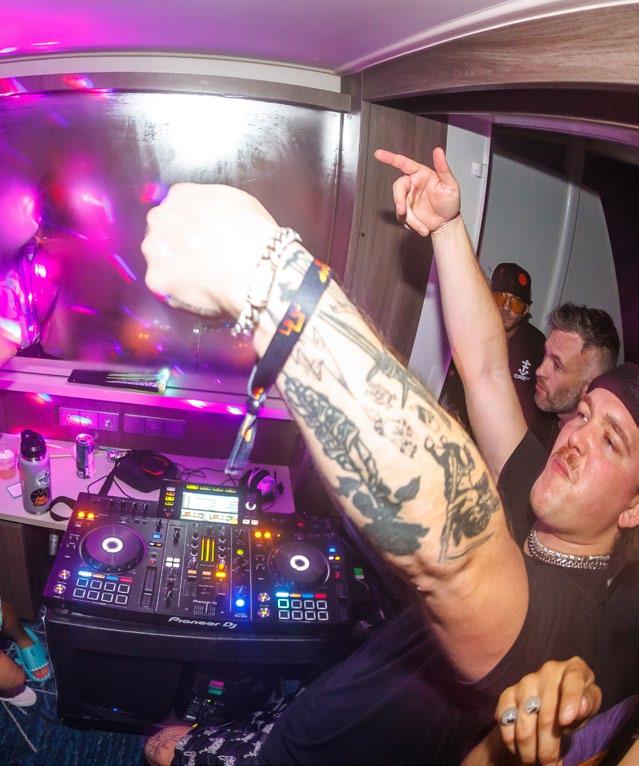
Close Confines: G-Rex unleashed. Rukes.com
Seeing Red: Another on-deck DJ experience. Rukes.com

A.M. Audio: Destructo’s Sunrise Sermon set. Oh Dag Yo

Stolen Moments: Chilling in Belize. Erik Voake
On Deck: Mr. Carmack & DJ Craze. Rukes.com

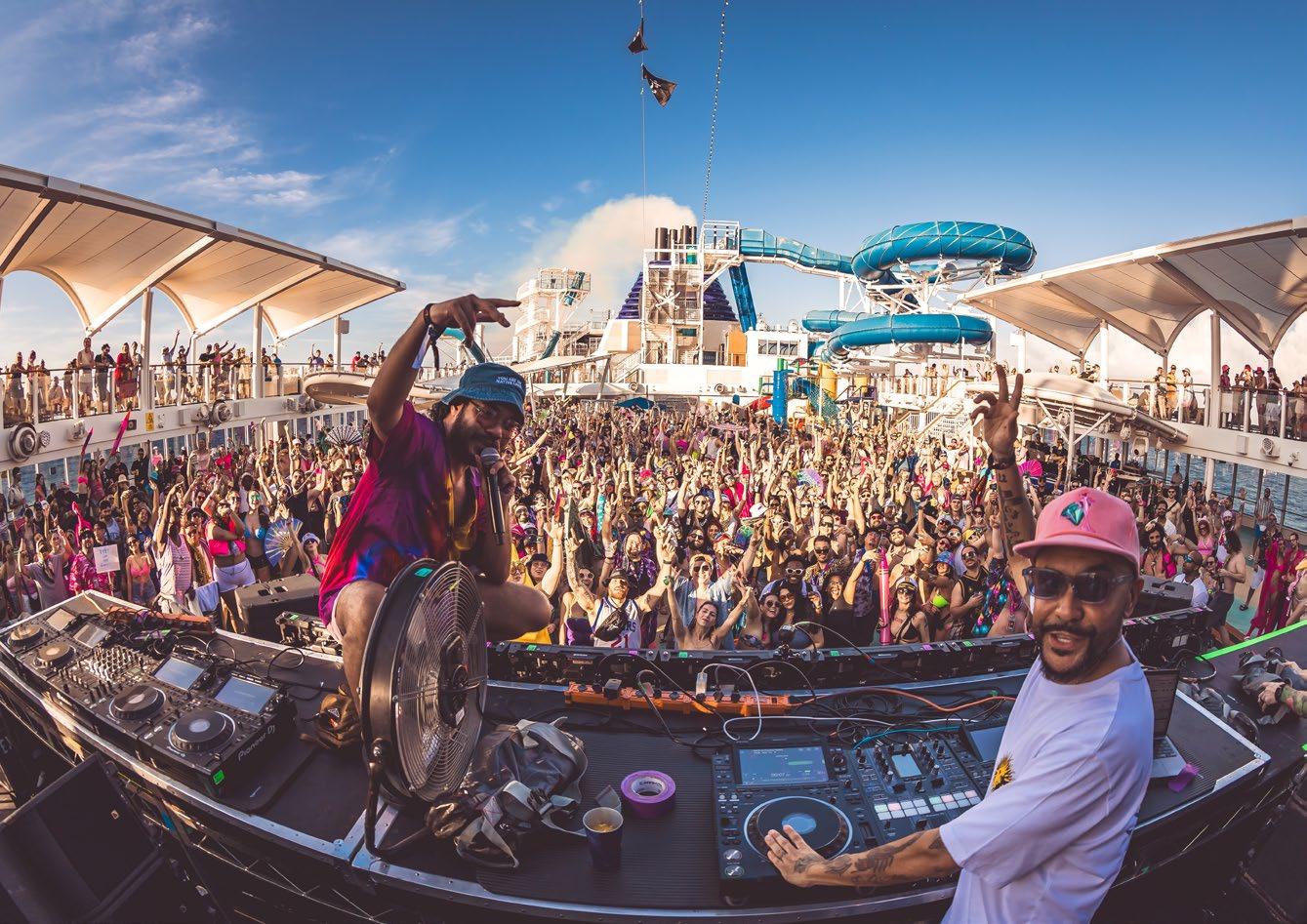
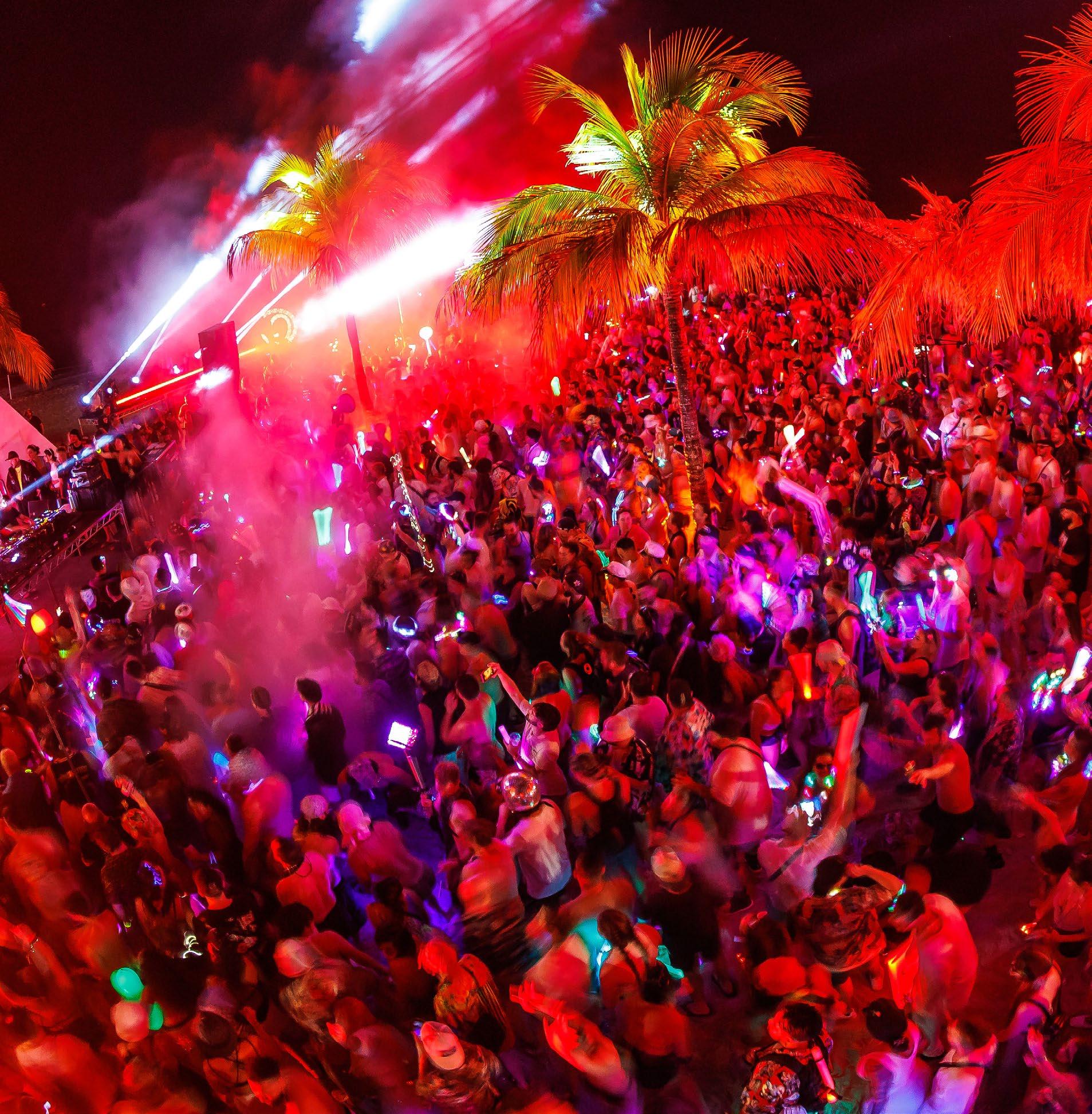






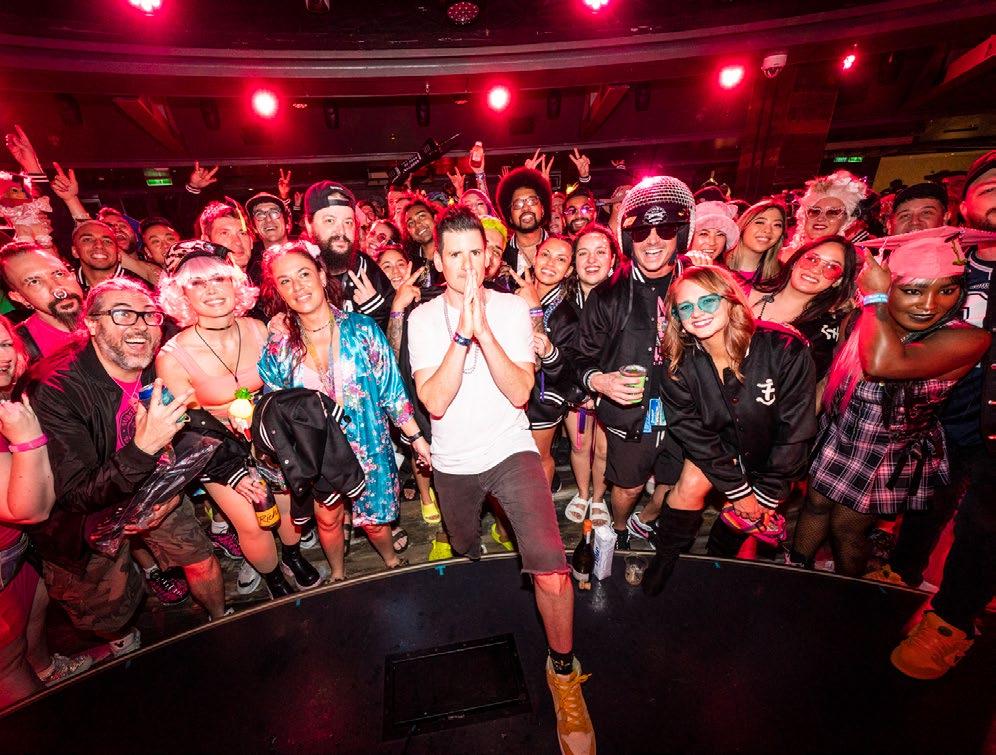
See
 By Jim Tremayne
By Jim Tremayne
Anaheim, Calif. – After three years of nontraditional events – one virtual, two held in spring months – the NAMM Show got back on its annual winter schedule when it returned to the Anaheim Convention Center this past Jan. 25-28.
According to organizers, the 2024 NAMM Show drew more than 62,000 people from over 125 different countries and regions to view products from more than 1,600 exhibitors. As usual, the show gathered much of the music-retail industry to see the latest and greatest product debuts, demonstrations, and showcases in a variety of DJrelated categories, including playback, studio, pro audio, lighting, content creation, and accessories. Of course, DJ LIFE was there to take it all in and report on the latest DJ-related developments. Here they are:
DJ Sector: From the AlphaTheta/Pioneer DJ booth, AlphaTheta released two new products with mobile DJs in mind. They include the OMNIS-DUO, a battery-powered, all-in-one controller, which enables DJs to play for up to five hours without plugging into the mains, and the WAVE-EIGHT battery-powered speaker, which features SonicLink ultra-low-latency technology and allows DJs to link up to eight units. By using WAVE-EIGHT’s included transmitter, DJs can match the two systems together and play cable-free in power-source-challenged environments.
Mixware brand Headliner debuted the R4, a 4-channel analog rotary mixer with ALPS potentiometers, robust metal enclosure, and stained-wood side panels, and the Gigastand USB+, a fully adjustable laptop stand with built-in USB hub.
At the American Music & Sound booth,

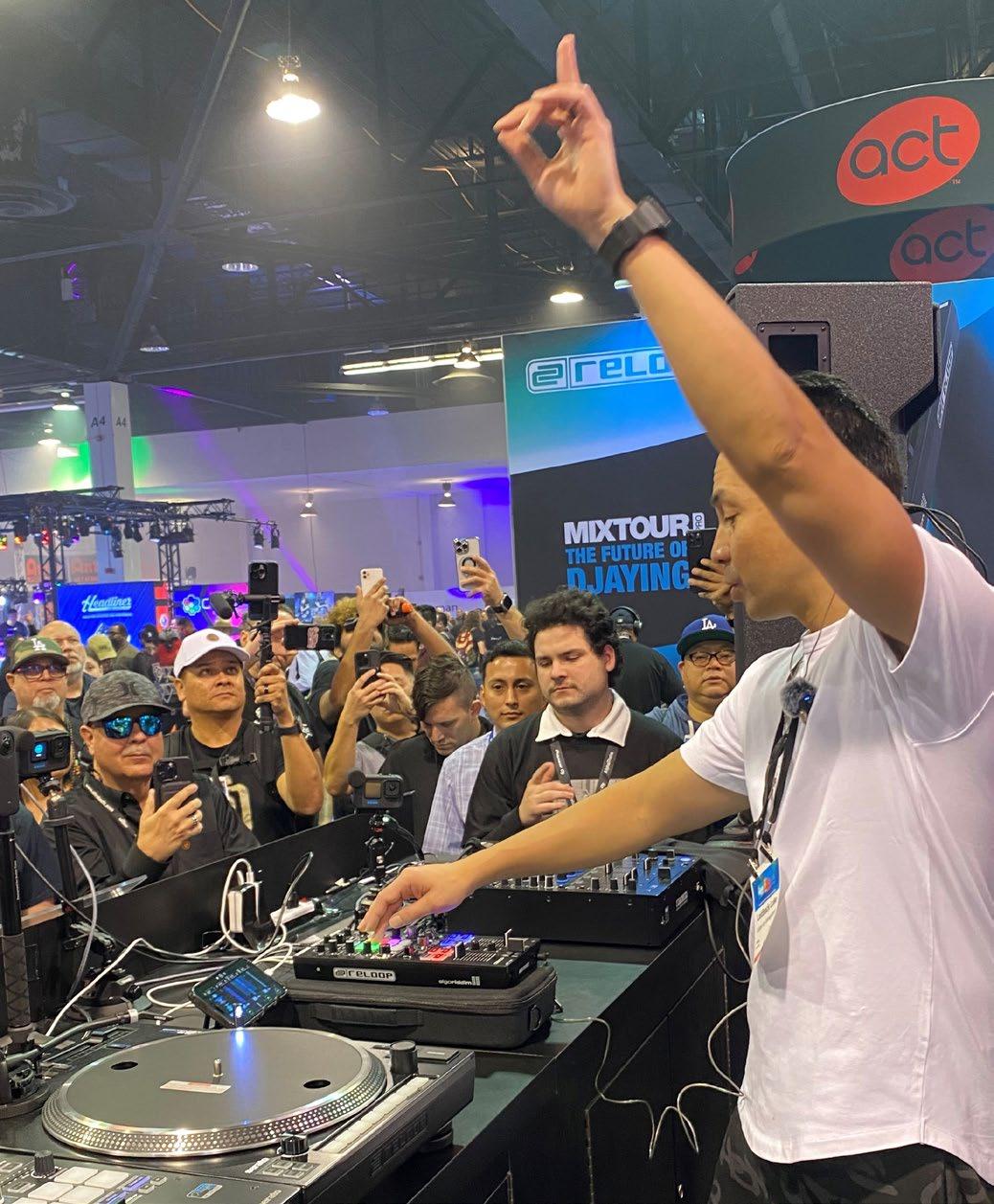
Hercules debuted its DJControl Inpulse T7 Premium Edition controller, a gold-plated version of the company’s Inpulse T7. Coming with Serato DJ Lite and DJUCED software, the unit offers a feature-packed bundle that includes a motorized DJ controller, premium faders module, scratch slip mats and a travel bag.
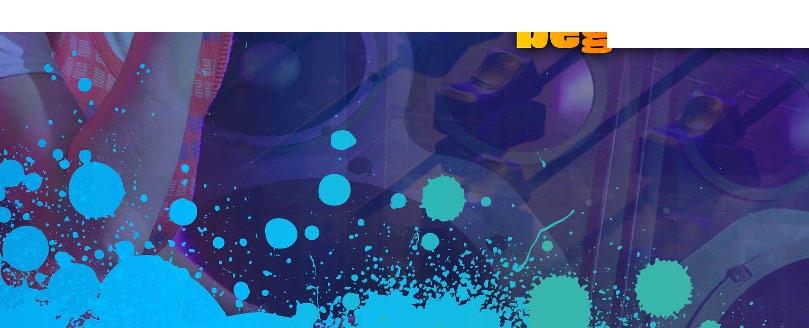
Also, at the AM&S booth, Germany’s Reloop featured the Mixtour Pro, a four-deck, all-in-one DJ controller for Algoriddim’s djay Pro software that was developed with DJ/producer Laidback Luke, who wowed show attendees with an instructive DJ set. Additionally, Reloop presented performances from several other top DJs, including QBert, Senate DJs, The Fresh Crew, and DJ Dynamix.
Accessories & Content-Creation: Longtime supplier Odyssey showcased several new cases, racks, tables, and DJ booths, including the DJ Wërk Station 4T, the Battle Bridge System and the Pre Wire Combo Rack.
Audio-Technica had several new items. They included: the ATHM50xSTS and ATH-M50xSTS-USB StreamSet streaming headsets; AT2020USB-XP Cardioid Condenser USB Microphone for content creators; AT2040USB Hypercardioid Dynamic USB Microphone, which connects directly into a content creator’s computer; the ATH-M50xIB Professional
Reloop Booth: Laidback Luke & the Mixtour Pro.Monitor Headphones, a limitededition ice-blue color version of A-T’s ATH-M50x model; and the ATW-3255 3000 Series Wireless In-Ear Monitor System for performers.
Mackie had several debuts set for NAMM ’24. They included: the DLZ Creator XS, a slimmed-down version of the DLZ Creator all-in-one content-creation studio for podcasters and streamers; the ProFXv3+ series of compact mixers, whose three models include USB recording modes, upgraded FX and Bluetooth; MobileMix, a fully featured small audio mixer that brings sound to DSLR cameras, PA systems, and smartphone streaming set-ups; and MainStream, a complete live-streaming interface.
Pro Audio: Electro-Voice debuted the EVERSE 12, a battery-powered, 12-inch, two-way loudspeaker that features a max SPL rating of 126 dB. With its 12-plus hours of battery life, the unit is perfect for mobile-DJ applications. At the Adam Hall Group booth, LD Systems debuted the MAUI 11 and MAUI 28 G3 MIX models from the MAUI G3 Series compact column PA system.
In addition to celebrating its 25th anniversary and showing its range of loudspeakers that include the BB15MK3 15-inch sub and the SV9-MK3 9-inch speaker, BASSBOSS debuted two new systems. They included the CCM12-MK3 compact coaxial monitor and the Makara-MK3 double
21-inch powered subwoofer that shares the footprint, depth, and impact of BASSBOSS’ Kraken, but offers increased portability and versatility.
Unveiling two additions to its ARA Series of line-array loudspeakers, DAS Audio debuted the ARA-P12.74 and ARA-P28.74 active, compact, point-source systems. DAS also debuted a pair of EVENT Series line-array units – the EVENT-28A and the EVENT-118A, its companion subwoofer. Celebrating its 75th anniversary, RCF showed its ART 7 MK5 powered, portable loudspeaker series, plus the NLX14-A from the NLX Active Column Speaker Series, and the NX 932-A and NX 945-A from the expanded NX Series of active, portable loudspeakers.
AVANTE Audio , an ADJ-related brand, showed two new additions to its Imperio Pro line-array series – the Imperio Pro IMP328 3-way active line-array module and the Imperio Pro IMP218 active dual 18-inch subwoofer. Peavey showed its PVXp Bluetooth Series of portable loudspeakers.
QSC showcased its L Class Active Line Array System and the QSC SysNav remote software for iOS and Windows. At the American Music & Sound booth,
Rotary Mixer: Headliner’s analog R4 unit.
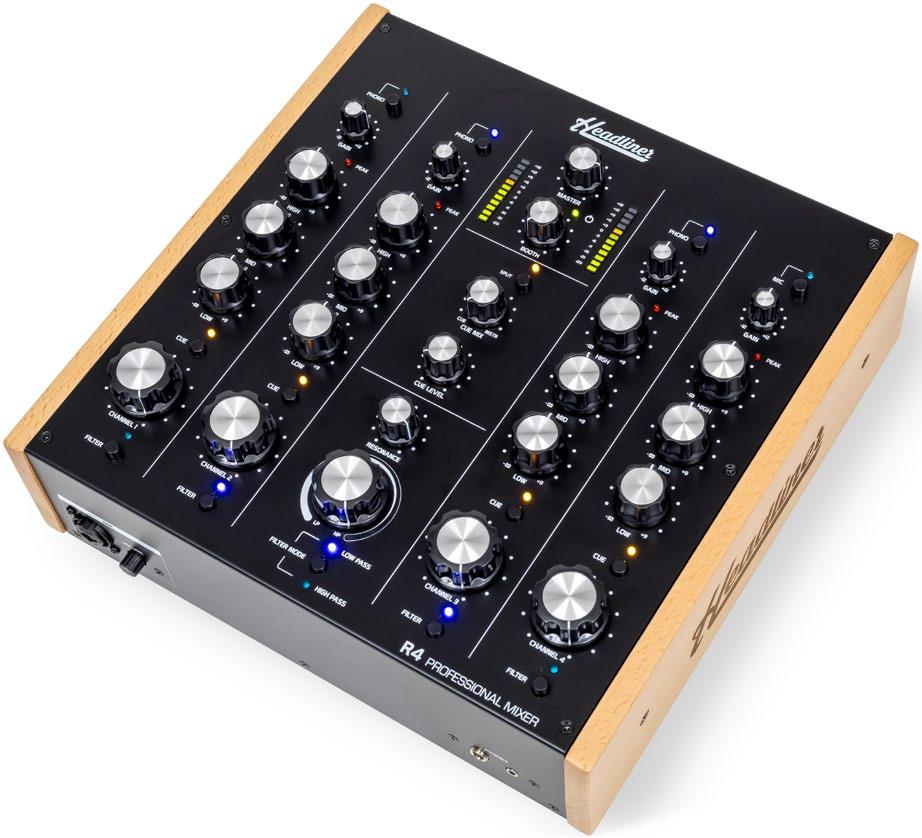
Battery-Powered: AlphaTheta’s OMNIS-DUO controller.

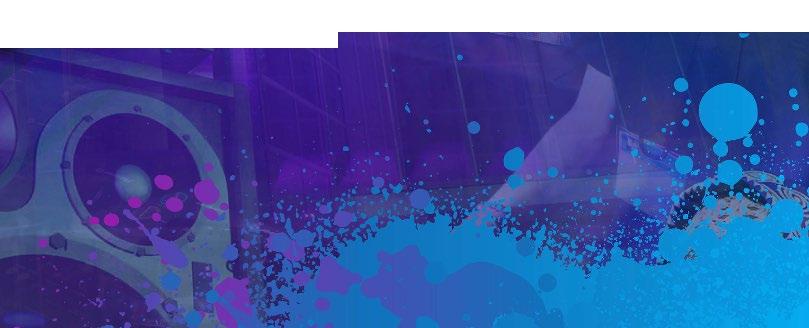
Ashly Audio showcased its new AquaControl software for networked amps and processors.
Yorkville Sound debuted its SA218S dual, 18-inch subwoofer, the EXM Mobile Tower powered PA with subwoofer, and the YXL10 SP powered subwoofer. Related company ART Pro Audio debuted its Solo Series of singlechannel rackmount recording units, which include the Solo Studio, Solo MPA, and Solo VLZ. Germany’s d&b audiotechnik unveiled the D90 amplifier, plus the DS100M Signal Engine with Milan networking.
EAW showcased its LA Series of portable, 2-way, active loudspeakers – they include the 12-inch LA121 and LA123 units and the 15-inch LA151 and LA153 units. Additionally, EAW showed its KF210 2-way line array. PK Sound , distributed Stateside by ACT Entertainment , introduced the T8 robotic line source element and the accompanying T18 intelligent subwoofer. Sensaphonics demoed its dB

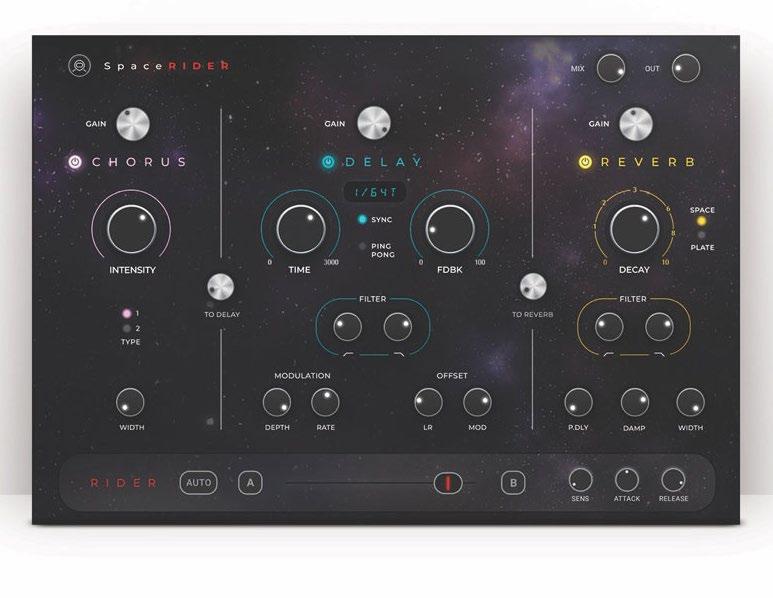
Check Pro in-ear sound-level analyzer.
Lighting: Light maker ADJ debuted the Vizi Beam CMY automated beam luminaire, the ElectraPix series of limeinfused hex LED wireless bars and par, the next-generation Aria XS wireless DMX system, and two IP-rated additions to the Jolt Series of multifunction LED strobe/wash fixtures – the Jolt Bar FXIP and the Jot Panel FXIP.
Related company, Eliminator Lighting debuted eight products. They included: Stryker Max wash-zoom fixture; Stryker Spot moving-head spot; Mega Wash 24 wash light; Mega Hex L Par LED par fixture; EM30 mirror ball; HD-MB40 rotator unit; Ikon Profile Plus gobo projector; and SC8 II Pad System controller.
At the Mixware booth, ColorKey launched eight new products. They included: PartyBar Mobile 150 and Party-

StreamSet: Audio-Technica’s latest for content creators.
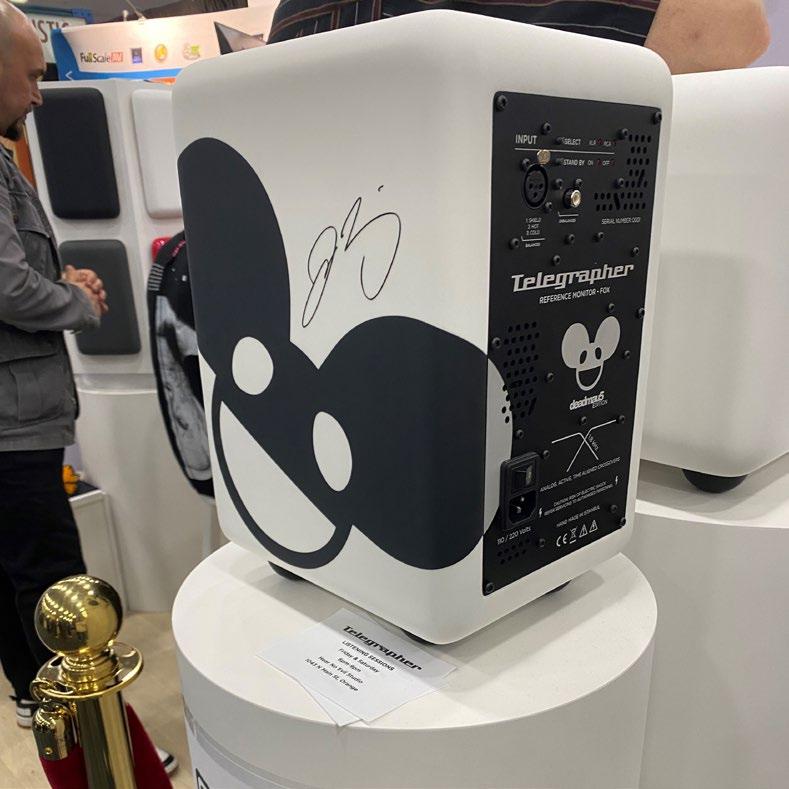
 Makara-MK3: BASSBOSS’ double 21-inch active sub.
On the Way: Telegrapher’s deadmau5branded monitor.
Space Rider: Waves’ multi-effect plug-in.
Makara-MK3: BASSBOSS’ double 21-inch active sub.
On the Way: Telegrapher’s deadmau5branded monitor.
Space Rider: Waves’ multi-effect plug-in.
Bar Mobile 250 all-in-one, wireless, battery-powered lighting solutions; the PartyBar Pro 1000 effects unit; Wireless Footswitch Controller for PartyBar Mobile and PartyBar Pro; Droid FX multi-effect, moving-head unit; Mover Beam 100 compact LED moving-head fixture; Flight Case Trolley; and Hardshell Case for AirPar HEX 4 uplight.
JMAZ Lighting showed its Regulator lighting controller, Command Center Event Façade Booth Adjustable Frame DJ Booth, and Osiris Outdoor 3.9 LED Video Walls. USA Top Lighting showcased its Wireless LED Dancefloor. Distributed by ACT Entertainment , Visual Products debuted its Purple Cloud Remote Management Software for its smart lighting control systems.
Rasha Professional showcased several new products, including the Acquos battery-powered waterproof par fixture, the Cloud Master effect machine, and the Wedlock dual light source, battery-operated outdoor fixture.
Studio: Israel’s Waves offered several NAMM debuts for studio and live apps. They included: Space Rider plugin, a versatile reverb/delay/chorus multi-effect suite; Silk Vocal, a smart EQ and Dynamics plug-in for recording vocals; the AI-powered Waves Online Mastering service; Feedback Hunter plug-in, a tool that enables live-sound engineers to achieve maximum gain before feedback and optimize stage monitors and PA systems; IONIC 16, a 16-in/12-out SoundGrid stagebox; and the MixMirror app, which offers full iOS tablet remote control for the Waves eMotion LV1 Live Mixer and Waves SuperRack.
England’s Focusrite , distributed Stateside by American Music & Sound, showcased its Scarlett 4th Gen range of audio interfaces, which included the Solo, 2i2, 4i4, Solo Studio, and 2i2 Studio units. Yamaha debuted the Montage M synthesizer and the FGDP-50 and FGDP-30 Finger Drum Pads.
The Sennheiser Group was busy with showcases of products from its various brands. Sennheiser debuted the HD 490 PRO reference studio headphones and showed its Evolution Wireless Digital family of wireless microphones. Neumann exhibited its updated MT 48 audio interface. Dear Reality introduced dearVR PRO 2 immersive spatializer plug-in.
Celebrating its centennial, beyerdynamic debuted the DT 770 PRO X Limited Edition, a version of the classic DT 7770 PRO studio headphones with detachable cables and components. Berlin’s Bitwig showcased its new update Bitwig Studio 5.1. The company also collaborated with u-he to present CLAP, the new plug-in standard that the two companies co-developed.
NUGEN Audio showcased three of its latest utility plugins for studio apps. They include: AB Assist 2, which allows engineers to compare two or more pieces of material; Jotter, a timestamped annotation tool; and Aligner, which helps to perfectly phase align audio with the touch of a button. Genelec showcased its new UNIO audio monitoring platform and the 8381A point source main monitor.
Solid State Logic showcased a variety of new studio products. They included: the SSL Recording Pack, which features an SMC 80 mic and shock mount, SHP 80 headphones, and an XLR cable bundled with either an SSL 2 or SSL 2+ audio interface; PUREDRIVE QUAD and OCTO

multi-channel mic preamp/interfaces; ORIGIN 16 in-line analog console; and three new audio-creation products –THE BUS +, FUSION, and BiG SiX.

Imaginando launched its BAM (Beat Maker and Music Maker) music software – a complete synth, groovebox and clip-based sequencing solution. U.K. loudspeaker manufacturer PMC showcased its range of professional monitors. In its 9.1.4 Dolby Atmos demo room, it included PMC8-2 XBD, ci65, and ci45 monitors. Turkish company Telegrapher made its NAMM debut with three new, allanalog, studio monitors: the Gorilla 3 midfield monitor, the Fox 2-way nearfield monitor, and the Elephant subwoofer. The company also unveiled a special deadmau5-branded range of studio monitors it hopes to release within the year.
The 2025 NAMM Show will return to the Anaheim Convention Center January 25-28. For the latest on the NAMM Show, please visit www.namm.org
DJ Carousel: Ladies get busy at Technics/Stokyo booth.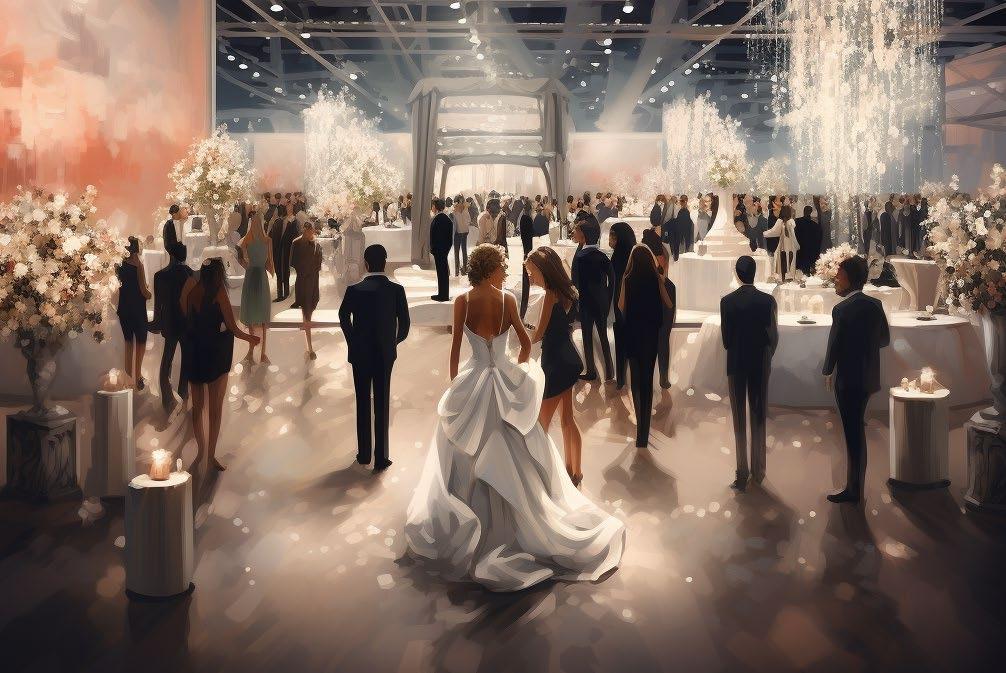
When you, as a mobile-entertainment company, participate in a wedding show, it is an investment in your business. Of course, all investments come with risks.
In my market of Cleveland, Ohio, the shows worth going to typically cost four figures. Depending on the size, price point and health of your company, you may elect to participate in just one show… or many. Either way, you want to make it count. Whether you are just entertaining, participating in your first show, or you’re a veteran looking to make some changes to your booth, I’ve outlined some tips on maximizing your return on investment.
Before I registered as a vendor in my first bridal show, I was curious about them. I had gone to a few, and checked out the competition and the show traffic. At that time when I was looking at other booths, I didn’t know what was “good” or “bad” from a set-up perspective. Each one was as unique as the companies operating them.
In my walks around the arenas, I’d see everything from a DJ set-up and playing with colleagues handing out flyers and ushering people on to DJs pulling people “into” their space for meaningful conversations. There were also large multiops with no DJs present and, instead, a salesforce set up with point-of-sale systems. Knowing what I know now, 10 years later, I would venture to say none of what I saw is arguably “best practice,” and the ideal booth configuration is actually somewhere in between.
In my opinion and from my experience, the following are the Top-10 mistakes you can make when participating in a wedding show or setting up a booth:
1. Not knowing your client or the area.
If you don’t want to perform at rustic barn weddings, you shouldn’t be going to the rustic-themed show. If the city isn’t your thing, there are probably some shows that attract mostly inner-city weddings, so you’d want to avoid these as well. Simply put, just because a show exists does not mean you have to be there. Oftentimes (at least in our market), there are multiple shows running on the same date. I always like to look at the other vendors who’ll be present. If these are ven-
dors I typically work alongside (or want to work with), that is the show I will focus our resources on.
Additionally, many veteran show producers have an idea of geographic area and approximate budgets of their couples, which should align with your company. Lastly, it’s worth noting that if a show strongly gives preference to a particular DJ or company, who is not you, then I would strongly recommend avoiding that show. In my early days of doing shows, I have literally been hidden in the back and told to turn any sound in my booth off as couples are ushered to the show’s “preferred DJ” – not cool. Do your research ahead of time before committing.
While some would argue with me on this point (in favor of networking with new people), participating in shows where you know the other vendors gives you a competitive advantage. If you’re familiar with many of the venues the couples will be celebrating in, you can talk about what you have done in their venue to bring the conversation to life. You can also help point couples to other vendors you know who are physically present there who may be a good fit. These vendors will often return the favor if you have a relationship with them.
2. Not matching your company appropriately to the show.
If you’re a single-op, just getting started as a small multiop, or new to shows in general, it’s probably not worth doing the expensive multiple-day/multiple-thousandcouples bridal extravaganza. That is unless you a) have the availability, b) have ample staff for your booth and, c) can handle the lead list quickly and efficiently afterward. In my experience, when you’re lost in the mix of 20 or so DJs and have thousands of couples pouring through, it may not be the best use of your resources, especially if most of your peak dates are already full.
3. Having a booth that is too DJ-gear-centric.
You’ve heard it at the DJ Expos. You’ve heard it in socialmedia posts. I’m here to tell you this again: Nobody cares about your gear, except for other DJs. All prospective couples care about is what your gear can do for them. Can people hear toasts? Does it look clean? Is it reliable? These are all things that can be communicated verbally or on a flyer. Not only does lugging out a full set-up take up a lot of room in your booth, but it could blend in with everyone else’s and potentially even cause problems, if it is not as high-end as a competitor’s or not in line with what you would typically bring out for your standard package.
4. Having a booth that does not emphasize “we are DJs.”
This may seem contrary to my last point, but this is derived from an actual mistake I made a few years ago. A show producer upgraded me to a double booth, so I wanted to capitalize on this extra real estate (and not have something that looked small and underwhelming), as well as create a “draw.” Accordingly, I decided to bring all our photobooths out. While the signage at the booth read “DJ,” and the video screens all had reels of packed dancefloors, the reality is that, from a distance, what most people saw were photobooths. Consequently, when reviewing the comments on my lead list, many couples had entered “interested in the magic mirror” or similar.
We attracted many couples who already had secured DJs for their events and simply were curious about the mirror booth and, as a result, we likely did not spend enough time with the couples who genuinely needed DJs – i.e., couples we wanted to book. The takeaway from this would be: Draw out your booth and look at a picture, or step way back after you set it up. What do you see? If you can’t determine the booth belongs to a DJ within a few seconds without specifically reading anything, you need to make some modifications. This also brings me to my next point.
5. Assuming people read (or listen, for that matter).
For a newly engaged couple, going to a wedding show is a little bit like attempting to drink from a firehose. If I had a bingo card filled with DJ terms and sales points, and I went around to talk to other DJs, I can almost guarantee I could get a bingo in one lap around an arena. Everyone is going to spout out things like “packed dancefloor,” or “we can do ceremony and reception,” or “we play all the things,” or “top-notch entertainment.”
There’s a fine line between having someone’s attention and having them begin to check out. Once they leave, unless there was something very memorable about your booth, all they will have is whatever materials they took. Make sure they are visual, easily digestible, succinct, and bulleted. I used to be guilty of having marketing materials with walls of text – working with a DJ mentor, as well as a marketer, helped solve that problem.
6. Not doing or not having something memorable.
I like to build my display up high. I find that it calls attention to the booth. Once I get people to stop by, in conversation I will show them a few things, which they may find thought-provoking – perhaps pictures in their venue, or relating to a wedding vibe similar to theirs. One of my competitors has a much simpler display, but this company tiles their entire table with all their awards from Wedding Wire, The Knot etc. This is a good format, too – it also calls attention to his booth and causes people to stop, have a conversation. It helps make him memorable.
There is a larger company north of us that participates in some of the same shows that also builds up high and comes up with an edgy marketing slogan. Oftentimes, they’ll print it on stickers that people want and tag on social media. This generates a lot of traction for that particular company. What is your hook? What is making people stop? What is making your company memorable?
7. Not reliably collecting visitor data (and/or not doing something with it in a timely fashion).
While most show promoters will provide a lead list – and it’s smart to use this list in a campaign – the most important thing you can do in your booth is capture your “warm leads,” or the couples who you had conversations with and are interested in talking more. Some companies, collect this on paper, some electronically. I recommend bringing both – capture electronically, and use paper as backup should you have a problem with internet or the technology. At minimum, you want names and a way to get in touch.
I also like to capture venue and wedding date, if known, as well as time entered the booth (with come comments or notes), as this helps jog my memory on the conversa-
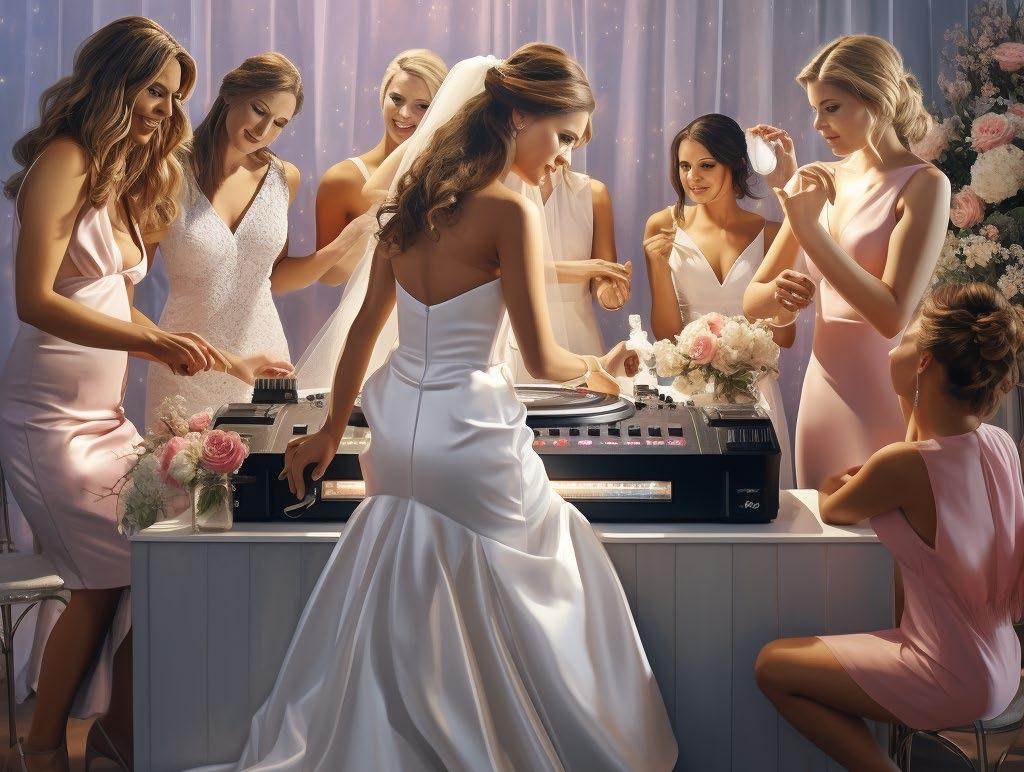
tion after and helps me prioritize any follow-up. For example, I might reach out to couples at venues we are preferred at first and not reach out to couples where we are fully booked on their date.
When capturing leads, I recommend using a dedicated web form or CRM (like Salesforce, HubSpot or Zoho). I do not recommend using “event-planner” type software. I have attempted this with one of the popular web-based DJ-planning products before and (in my opinion) did not find it to be reliable for this purpose, or as flexible as I would like it to be for data manipulation later on.
8. Wasting time on show-mandated giveaways.
Many shows require that each participating vendor provides a door prize of value, oftentimes specifying a minimum value, like $100. I can’t emphasize enough how much I despise when show producers do this. While they claim it will drive traffic to your booth and increase conversations, in all reality the only entity benefitting from this is the show, as they can advertise hundreds or thousands of dollars in free giveaways at no cost to them.
While some would disagree, I would argue that the traffic being driven from the motivation for free stuff is the wrong traffic. In the past, we have had people stop and chat because they felt “obligated” to before they registered for our giveaway, only to tell us they have a DJ... but “would keep us in mind, if they know of anyone else who needs one.” The reality behind this is that they just wanted the free stuff and probably won’t remember you long after the show. We’ve also had people that came and wasted our time just to talk specifically about the giveaway. (What is it? What does it include? When does it expire?)
To a show producer, this only costs face value (say, $100) and helps drive them traffic; the reality is that there are additional hidden costs associated. There’s the potential cost of the couples looking for your service, but they walked by the booth because you were busy. There’s the hourly rate of your sales staff, who now may even follow up with them if information was collected.
Shows with this requirement often won’t allow a discount on your services to be used. My mentor gave me a great solution to this – get professional gift cards to your company made. With these, you’re going to attract people who are interested in what you have to offer – that’s the right traffic. That said, this solution still won’t suffice to meet the re-
quirements of some producers. In these cases, what I recommend doing is getting something self-explanatory (something people aren’t going to want to chat about), not exciting and something that can be ordered in bulk at a discount price, yet appraised at the higher value.
What I personally use is “Wedding Day Emergency Kits.” I move the prize and the drawing basket away from my booth (or off to the side as far as possible), and label it clearly so people who are there for the free stuff see it, know what it is, and don’t take up our time over the giveaways. I would make an exception to this if I had something that was hashtag-worthy and would generate social-media attention beyond the show.
9. Having a booth that is too closed off or messy.
If you want to have meaningful conversations, you want the booth to look open and inviting. Personally, how I do this is mounting what I can get off the ground, usually using box truss. I also ditch the venue supplied 8-foot banquethall tables and bring in our own cocktail tables so people can stand around them, rather than sit. The banquet-hallstyle tables just take up way too much space (and encourage sitting/uninviting posture).
Outside of opening up the booth, you want it to be welllit, bright, attractive and easy to move around. Don’t bring carpeted racks or boxes, old stuff, or leave bags all over the place. While many companies use roll-up banners, I typically use one or more TVs, as I can update the signage for each show without having to involve a printer.
10. Not having the booth amply staffed for the show.
This is another painful point brought to you by experience. I’ve participated in a few shows where my staff was sick and unable to attend shows and/or out on gigs. Consequently, I noticed my follow-up and booking rate was lower on these shows than shows where we had sufficient staff. Likely, this was because as I was in conversations with a couple at the booth, so other couples may have grabbed material and simply went on to a competitor they could make a meaningful and memorable connection with at that show.
What I learned from this is that you don’t necessarily need to have a company representative there with you. If you’re in a pinch with staff, you can brief a “brand ambassador” of sorts to warm leads and pass them off to you. This way, they can get relevant details, encourage registration, and make some small talk to buy you time then pass the couple off to you with what you need to know to have a meaningful conversation. I’d recommend this person collecting venue, date, vibe, and anything special the couple is looking for or doing before the handoff.
As we start off the New Year, many of us are participating in one or more shows. At a high level, your goal should be to have your booth set up as somewhat of a sales funnel, which allows you to provide a good first impression, while accurately relaying what you do, exchange some basic information, make as many connections as you can efficiently and either move on to close a sale or establish a plan for follow-up communication. Here’s to a busy 2024!
Ryan Von Ahn is the owner of By Request DJs in Akron, Ohio. He’s also part of the Author Collective from National Disc Jockeys
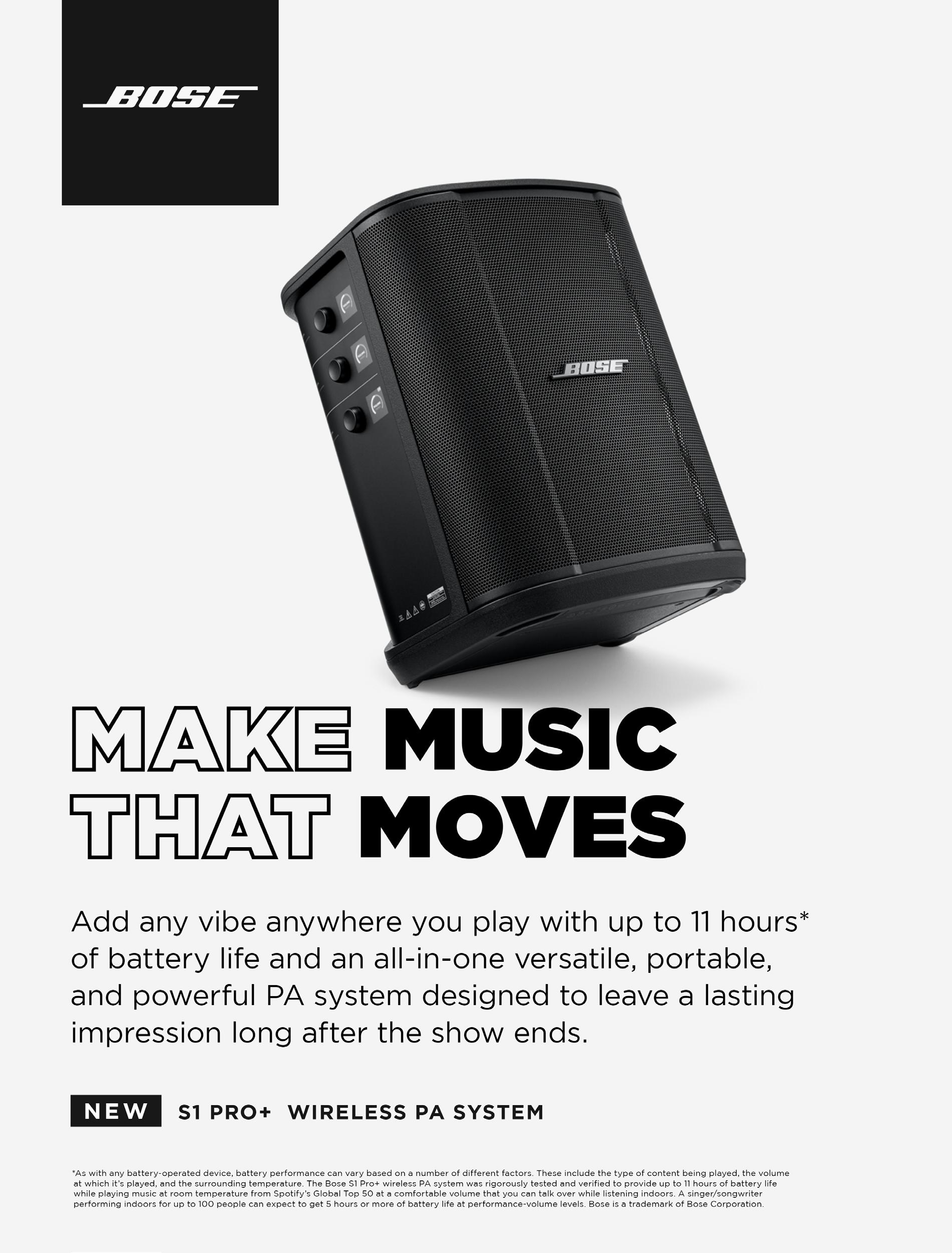
Miami, Fla. – In celebrating 20 years on the seas, the 2024 Groove Cruise drew nearly 5,000 attendees to the Norwegian Encore liner this past Jan. 24-28 for a round-trip voyage to the Great Stirrup Cay in the Bahamas. Presenting 96 hours of non-stop music on 11 stages, Groove Cruise featured over 100 DJs and performers, including some of the industry’s biggest. They included: Diplo, Tië sto, John Summit, Markus Schulz, LP Giobbi, Gene Farris and many more. It all looked like this:

 Rock the Boat: John Summit packs ’em in. @divisuals
Rock the Boat: John Summit packs ’em in. @divisuals

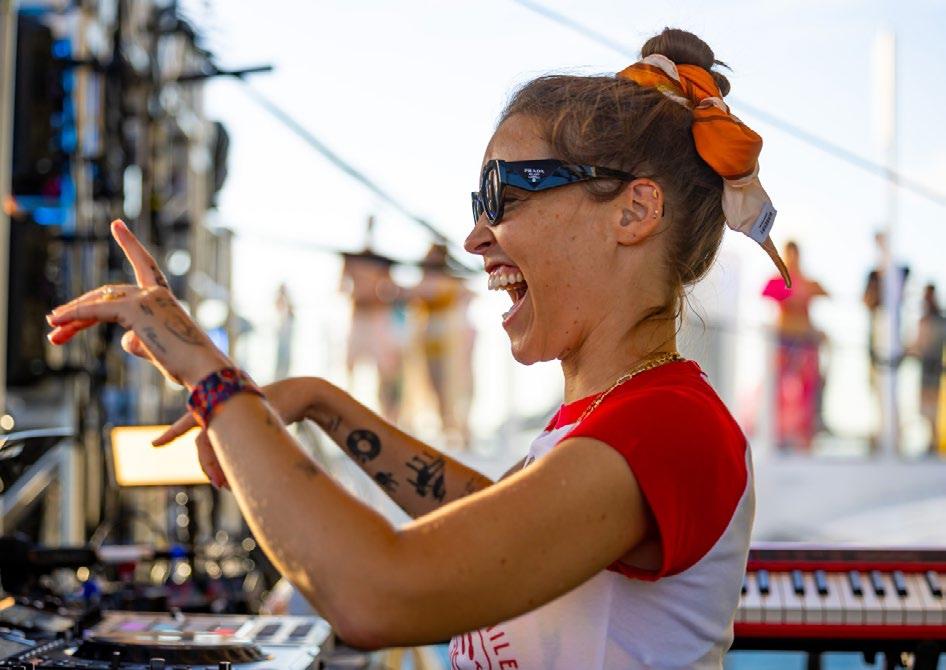

 Femme House: LP Giobbi gets going. Rudgr.com
Hats Off: Tiësto at Great Stirrup Cay. Rudgr.com
From Above: Markus Schulz in the round.
Femme House: LP Giobbi gets going. Rudgr.com
Hats Off: Tiësto at Great Stirrup Cay. Rudgr.com
From Above: Markus Schulz in the round.


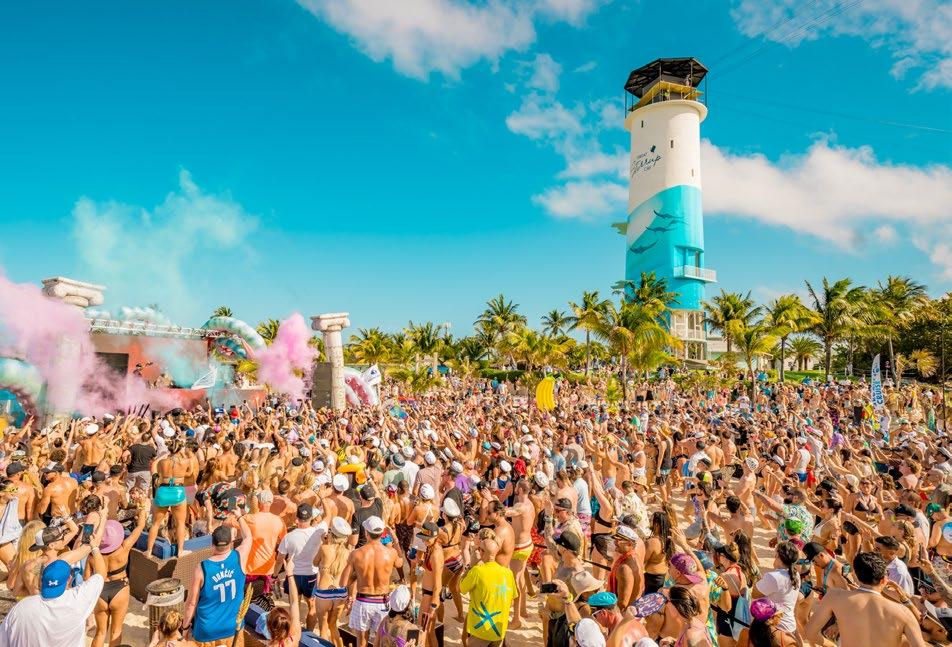
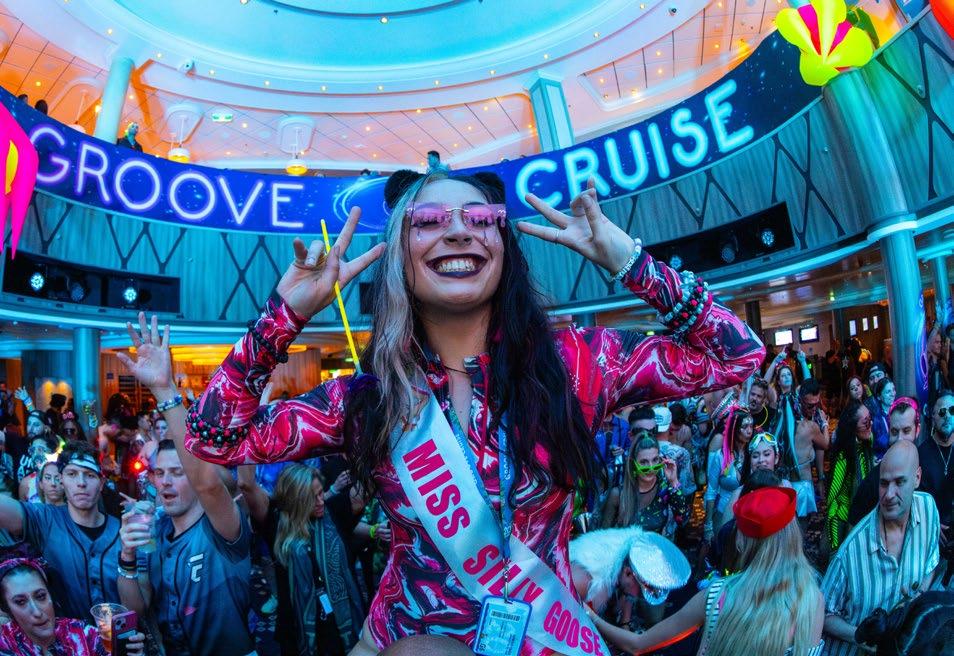
 Drone Shot: Party people in the Bahamas. Rukes.com
The Theater: Gene Farris delivers the goods. Rudgr.com
Activities Aplenty: Fans get wild onboard. Rudgr.com
Day Party: Great Stirrup Cay scene. @divisuals
Blackjack Table: DJs lay it on the line. Rukes.com
Drone Shot: Party people in the Bahamas. Rukes.com
The Theater: Gene Farris delivers the goods. Rudgr.com
Activities Aplenty: Fans get wild onboard. Rudgr.com
Day Party: Great Stirrup Cay scene. @divisuals
Blackjack Table: DJs lay it on the line. Rukes.com

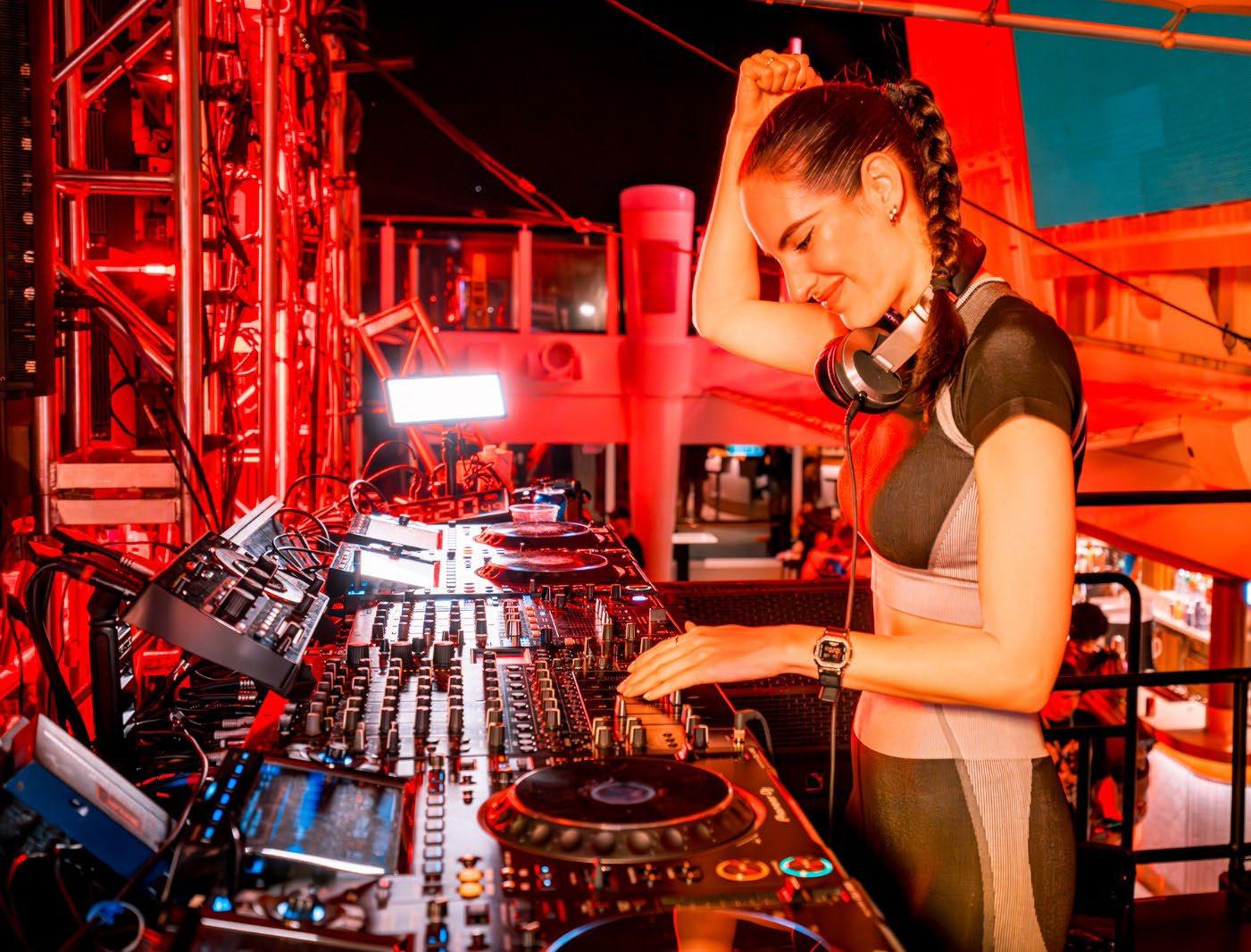
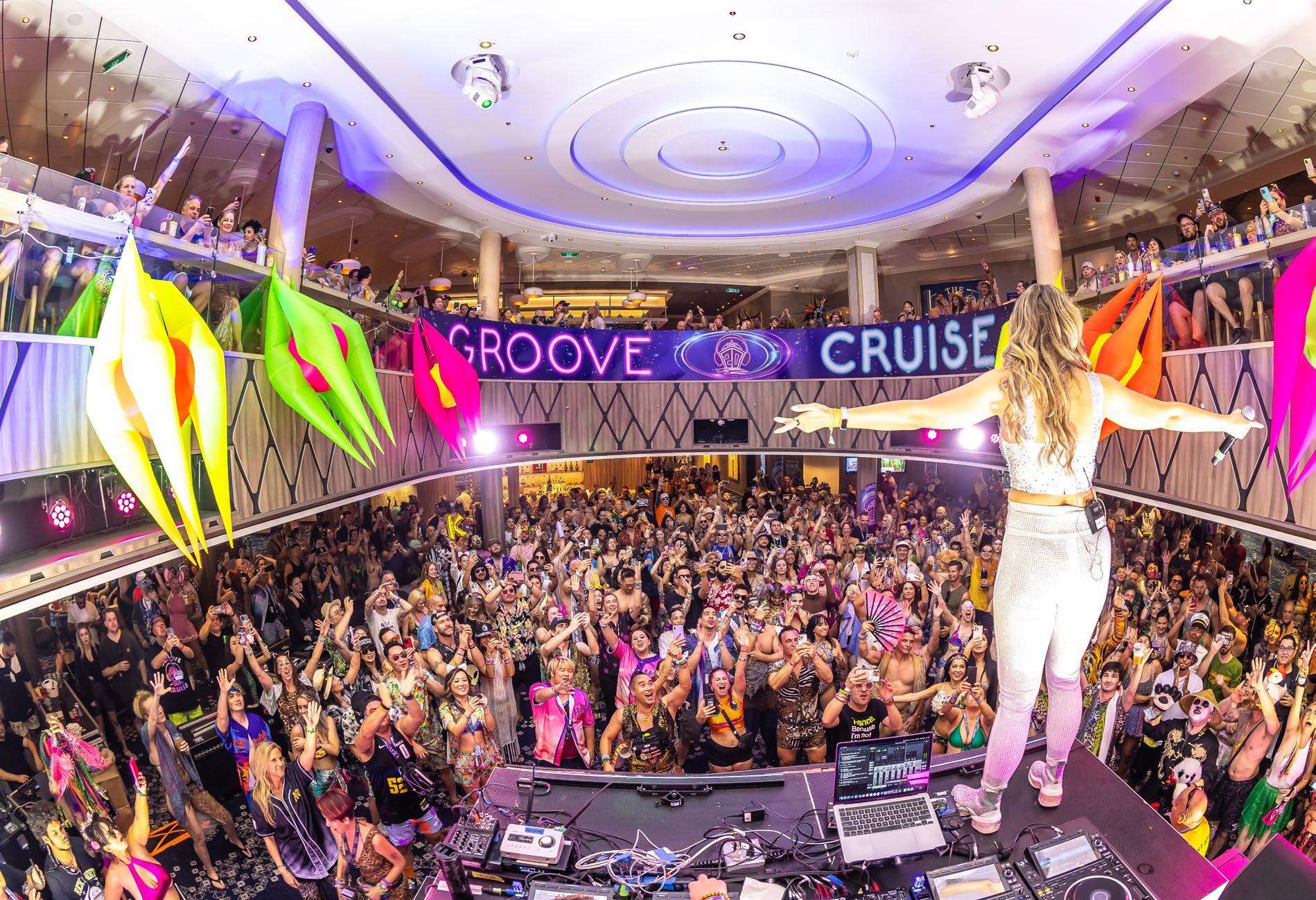 Resonate: Lilly Palmer ups the energy. @divisuals
Goodnight! Casmalia thanks the crowd. Rukes.com
Resonate: Lilly Palmer ups the energy. @divisuals
Goodnight! Casmalia thanks the crowd. Rukes.com
New York City – It’s 25-degrees on a late-January night in Manhattan’s Greenwich Village, but the kids are lined down Bleecker Street to enter the club. Tonight at Le Poisson Rouge, it’s the wildly popular Gimme Gimme Disco party, so the freezing-ass weather be damned. The kids are getting their groove on, no matter what.
Inside, the dancefloor is already pulsing, and DJ Craig Belesi (aka CBJtheDream) is lifting it higher with his range of disco, funk, and R&B hits from back in the day – Donna Summer, The Gap Band and, of course, ABBA. The playlist is plenty familiar, but skillfully presented to create soaring peaks and soft landings. At the right moments, Belesi jumps out from his DJ rig to the edge of the stage and exhorts the partiers with singalongs. Accordingly, the party rages into the night – another successful LPR night for GGD, a party that has steadily grown to a respectable stature in American clubland. According to its promoter, Burwood Media, GGD played over 450 shows in 2023 and looks to expand further. And from the looks of it, ain’t no stopping ’em now. We connected with GGD’s Craig Belesi, 34, to get the DJ’s angle on the phenomenon.
DJ LIFE: How many GGD dates do you do and where?
Belesi: Oh, too many to count at this point. I’ve played everywhere from New York City clubs like LPR to Big Night Live in Boston and the Summer Cruise Series in Boston Harbor. We do shows in cities all across the U.S., and I’ve done shows in places like Toronto, Detroit, Hampton Beach, and Milwaukee, just to name a few. It’s an amazing way to see the nightlife in different cities. GGD has even started to go across the pond to play London and hopefully is doing more European dates soon!
DJ LIFE: For GGD, is the entire musical program pre-ordained?


Belesi: I think it’s our job as DJs to bring the party. At its core, our job is to play music and read the room and give the crowd an amazing night to remember. So, the only thing that’s “pre-ordained” is which tracks I know work and which ones I know do not. I have playlists that I have been building over the years at GGD, plus my own remixes that I use for the shows. I usually go out there and see my crowd and build off their energy. It’s very “well, if this track worked, then these tracks work,” and I’m usually thinking five songs ahead. Then there are some times during a set that I just enter “flow state” and just go purely off feel and instinct. I think that’s a special part of DJing. I try to never play the same set twice. You can’t say that about other live music.
DJ LIFE: How do you get to that state?
Belesi: I has something to do with how I was taught to practice: Take one track as a starting point and have someone else name a song off the top of their head and try to get there as fast as possible without creating this horrifying jarring transition. Nothing worse than feeling like the DJ got a huge tip from someone and is hard transi-

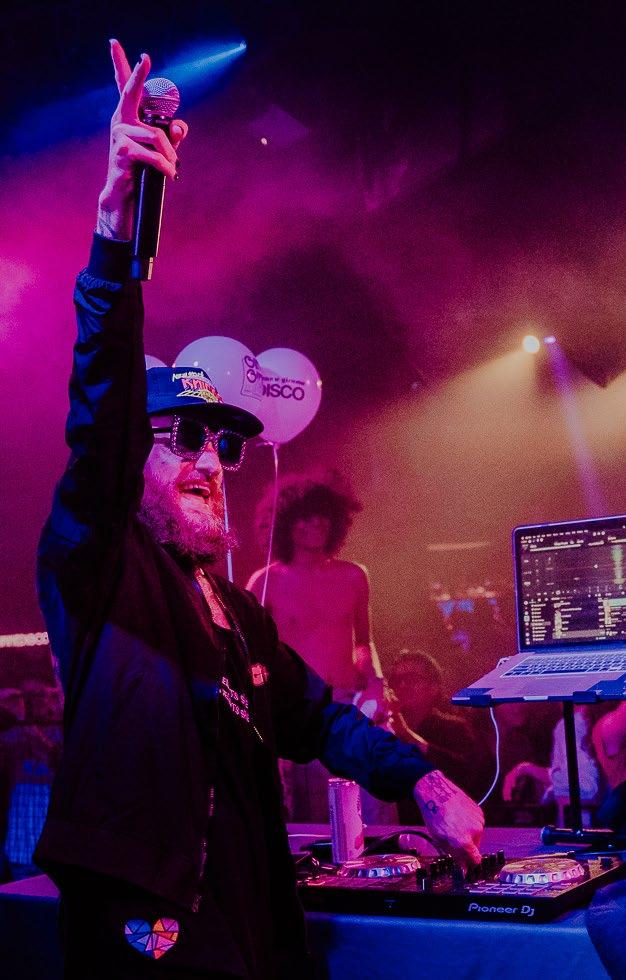
tioning from KREAM to Barry Manilow.
DJ LIFE: The GGD parties are pretty much loaded with fun. Everyone’s singing along and everyone’s happy. Why do you think this formula works so well?
Belesi: I think there are a lot of reasons. One, it’s fun to go out, sing and dance with your friends or random people you just met. It’s like those underground techno shows I talked about before, that collective energy exchange. It’s community. Two, I think that our generation and the generation after us never really got to experience the club and disco scene in the way we saw in movies and TV and what our parents and older friends told us about – Studio 54 in the ’70s/’80s, Pasha in the 2000s. This era now is so much about the presence of social media, stock
New York City – In 2015, Gimme Gimme Disco cofounder Ethan Maccoby began his journey into the impresario world with Burwood Media partner Alex Badanes when they kicked off Emo Night Brooklyn, a series of DJled parties rocking emo, screamo and pop-punk tunes. Three years later, they landed on the ultrasuccessful GGD concept. Since then, they’ve unveiled another pair of fanfriendly, singalong events – Broadway Rave (popular show tunes) and Taylor’s Version (Taylor Swift). Undoubtedly, they’ve landed on working concept.
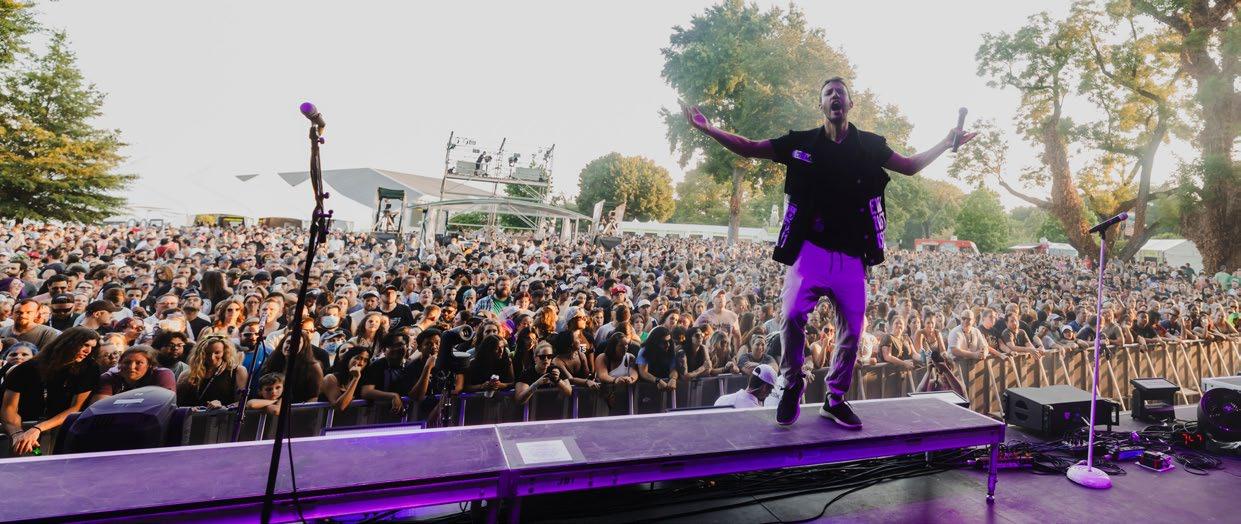
“Our mission,” says Maccoby, “has always been to bring people together from all different backgrounds over a shared love of music to give them the best night of their lives.”
After GGD’s party at Manhattan’s Le Poisson Rouge club, we caught up with Maccoby, 33, to discuss his path and more.

DJ LIFE: GGD is such a simple idea, but one that, these days, is seemingly fool-proof. But, before disco broke big in the mid-’70s, it wasn’t that way. It began as an underground scene.
Maccoby: Disco dance parties started in NYC in 1970, as a way to bring people together to celebrate who they were in intimate, typically, invite-only spaces. At that time, a lot of traditional clubs were still visibly racially segregated and it wasn’t until 1973 that homosexuality was declassified as a mental illness in NYC. Back then, as it does now, disco music acted as a way to escape and connect in a way that wasn’t as accessible for a lot of people.
DJ LIFE: Why does the disco era and its music survive?
Maccoby: Because, from the very beginning, it was about telling true stories about the human condition. Whether about love, heartbreak, or freedom, it’s an accessible genre that brings people from all demographics together. It’s positive, upbeat, and perfect for singing along and dancing. It’s almost impossible to hear a disco song and not smile and start grooving. We are heavily influenced by music our parents love, which, I think, is part of why so many younger attendees are drawn to GGD and know the songs. Big Hollywood movies like “Mamma Mia!” have also made disco so accessible to younger generations – ABBA seems almost like a gateway artist for many attendees.
DJ LIFE: How many GGD events did you do in 2023?
Maccoby: We did about 450-plus Gimme Gimme Disco shows in 2023, and over 1,100 total shows for Burwood Media across all of our genres.
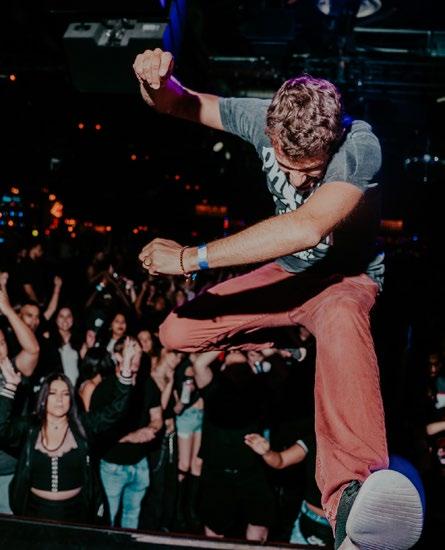
DJ LIFE: How do you pick and vet your DJs for GGD?
Maccoby: It started with Alex and I as the only DJs for all events. As we quickly grew, we started recruiting a few friends that had both great stage presence and musical intuition. We’ve grown this network of DJs mostly by referrals from current DJs and venues we work with – and also fans that have attended our shows. Before we hire a DJ, we will often have multiple calls with them and set them up with a training to shadow one of our current DJs at a show. This gives us a good feel for who is going to be a good fit.
DJ LIFE: How much of the music is picked by GGD?
Maccoby: We do provide our DJs with a sample setlist to give some direction, but our DJs ultimately have full control over the playlist on the night. Music that is played is definitely dependent on the crowd, the location, demographics, and vibe.
DJ LIFE: What makes a good GGD DJ?
Maccoby: A good GGD DJ has an amazing crowd presence, putting on a performance while also creating beautiful transitions. They know how to read the room – when to play a hit or a deep cut, a slower song or an upbeat one, and how to infuse good energy into a crowd. Something that is unique about GGD is we are not just a DJ in a booth playing hits while people dance – it’s a show. We are onstage and it’s a performance with different production elements. People tell us again and again that going to Gimme Gimme Disco gave them one of the best nights of their lives.

portfolios, working to work, pure capital gains and commodification of “side hustles,” and I think turning that off for three-plus hours and just letting loose is just fun and freeing. Those nights are what we all remember, right? Not the work shift you put in, or the email you sent, or the “atta boy” from a manager after a shift... The memories we create with the people we love. And I’m honored to be a part of that.
DJ LIFE: What software and controllers do you use and why?
Belesi: I approach this in a lot of ways. I love Algoriddim djay Pro. Its user interface is fantastic and I always found myself returning to it no matter what other programs I used. I have the app on my phone to try things out as I’m going about my day, so I don’t have to remember it when I get in front of my deck. It’s such a great program and I cannot recommend it enough. I have the Reloop MIXON 4 for easy iOS integration and travel, and I’m still using that controller to this day. I also use CDJs and the Pioneer XDJ-XS. They’re club-standard for a reason.
DJ LIFE: Do you bring your own gear to the GGD gigs?
Belesi: I always bring my own gear to GGD shows. I’m a bit of a control freak after I’ve done club gigs that guaranteed working CDJs and I was handed a CDJ with a half-working jog wheel
and a mixer with two busted knobs. Partygoers don’t blame the venue, they blame you as the DJ. I don’t like leaving that in someone else’s hands.
DJ LIFE: You began as a traditional musician, playing a variety of instruments, traveling with bands. What got you into DJing?
Belesi: After many bands, tours in vans, and Walmart-parking-lot hotels later, here I am, another metal/hardcore guy that became a DJ – the universe provides when you let it [laughs]. I’ve always had a fascination with the DJ scene. My friend, DJ Danny Lynch, would take me to underground techno shows and there was this amazing energy – all these people just moving and experiencing the night together. I was hooked. Then, once the pandemic hit, I started to produce my own music as a way of dealing with grief. Once things started opening up, I found the Brooklyn Monarch and all these fantastic electronic shows that were being booked by The Ornate Project and Kevin Reynoso, and just started to really fall in love with it. Especially coming out of a pandemic, that community was just fantastic to be a part of.
DJ LIFE: How’d you get started DJing shows?
Belesi: Gimme Gimme Disco was my first experience with actually DJing live in front of people, not just in a bedroom. I was hired as a photographer and I worked a ton with Josh Batista. You can see him all over the country doing GGD – what a talent. I was with him in Nashville when he was doing a GGD at Brooklyn Bowl, and the sold-out crowd was going crazy for him. But once he would walk back from front stage to the get the next track ready, you could feel the energy wane. They wanted him front and center. We looked at each other, and I said to him, “Call out the tracks, and I’ll cue them up.” He smiled at me and said, “Let’s do it.” Rest of the show went gangbusters. After that, we always paired up and I became obsessed with the art, although I was still technically a photographer for them. I would just pitch in and help out Josh where I could. Then Jason Parent from Sound Talent Group saw me with Josh, and I was brought in as a DJ for GGD.
DJ LIFE: Of course, you are one of many DJs working the GGD parties. In your mind, what makes a great DJ – at GGD and beyond?
Belesi: I’ve always viewed DJing as a collaborative art between the crowd and the DJ. It’s my job to curate the evening and I take that responsibility very seriously and give it the respect that it deserves, and the crowd gives you energy back. At its core that’s what DJing is. I love taking people on a journey.



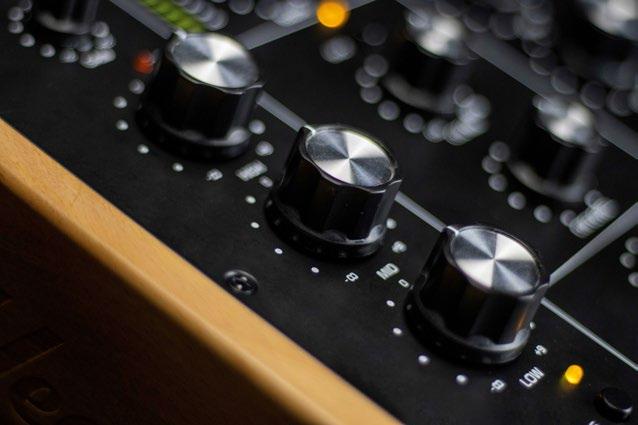 By Wesley King
By Wesley King
When my editor asked me if I wanted to review the new R2 rotary DJ mixer from Headliner (a sub-brand of DJ gear distributor Mixware), my answer was a quick, unreserved “yes.”
Why? Primarily because I guess you could call me, “rotary curious” after years of hearing about these unusual beasts, but never having had the chance to actually use one.
Most DJs who use conventional DJ mixers choose one of the myriad models from various manufacturers, the vast majority of which have conventional faders to control the level of individual channels, as well as for crossfading. We all know the look and the function; they have a rectangular knob, and move forward and backward (or side to side, as the case may be) in a straight line. A rotary mixer, on the other hand, employs a rotating potentiometer for these functions, the type used for EQ controls on mixers of all types — not to mention volume controls, tuners, and more, on old-school TV sets, stereo systems, radios, and whatever else.
The earliest mixers for club DJ use reflected the design of other electronics of the era, like those I just mentioned. Their old-school, retro look and unusual approach (by today’s standards, anyway) still constitute a favored choice for many DJs across a range of styles. However, they have become a decidedly a niche market in the DJ space; they enjoy a reputation for high quality and reliability, with a price point that goes right along with those attributes.
The Headliner R2 is clearly designed to shake up the rotary DJ mixer market a bit, given it has a price point that’s startlingly low — just under
$400, in fact — making it a reasonably affordable entry point for the “rotary curious” like me.
The Headliner R2, as the name suggests, is a 2-channel mixer, one that’s remarkably compact, and quite honestly, handsome as well. It has a beautiful, black metal chassis consisting of a bottom plate, and a single formed piece that wraps from the front, across the top, and around the back. The removable wooden side panels are beautifully finished and add a nice aesthetic touch. For people (like me) who are accustomed to a more customary, faderbased mixer, its clean appearance is simultaneously a bit foreign, quite retro, and very inviting.
On the back panel, the R2 provides separate master and booth outs, each in RCA and XLR. The inputs, on the other hand, are limited to a pair of RCA connectors each for phono and line, one set for each of the two channels. (An RCA pair for recording outs is also provided.) You’ll also find a DC power jack on the back; the R2 uses an external power supply.
On the front panel, you’ll find a mic input (combo quarter and XLR) with a level control, and headphone jacks in both of the two common sizes.
The top panel is a simple affair, honestly; there are a total of 16 rotary knobs in four different sizes (depending on their function), plus various buttons that control filtering, cueing, and selection of phono or line for a given input. Each channel has a main level knob, three EQ knobs, and a gain control. Down the middle, you’ll find a filter control (combined LF and HF), a resonance knob for it, cue level and mix knobs, and the booth and master out levels. That’s
“R2 PROVIDES A NICE ENTRY POINT TO THE ROTARY EXPERIENCE AND ITS COMPACT SIZE AND LIGHT WEIGHT MAKE IT APPEALING FOR GIGGING AND MOBILE USE. AND AT JUST UNDER $400, IT’S AFFORDABLE, TOO.”
really it, apart from a pair of LED segmented VU meters (left and right) for the output; channel VUs are not provided.
To try out the R2, I sat it between a pair of big-name decks, plugged in the USB sticks with my music library for testing, and got right to work.
The basics are easy enough to understand for any DJ, especially one, like me, whose style and preferences dictate that a crossfader is a little more than waste of space. Mixing with the Headliner R2, then, works the same way it does for me on a more conventional mixer, just using a rotating pot (potentiometer) instead of a sliding one (i.e., a fader), adjusting the channel levels side-by-side as desired to get the job done. Frankly, piece of cake.
The 3-band isolator EQ feels like has the crossover points nicely defined, and provides full cut counterclockwise, and +9db clockwise. As others have observed, the center-detent position of the EQ knobs doesn’t leave the painted line on the knobs pointed precisely true north (so to speak); some knobs are, some aren’t. That’s purely cosmetic, of course, but what isn’t is that the detent itself on one of the knobs on my test unit didn’t really crisply find its spot like the other five did, an inconsistency I’d have preferred not to experience. That single issue aside, the rotary controls in general had a nice, uniform control and response across the board, perhaps owing to the use of widely respected ALPS potentiometers.
While the R2 was a real pleasure to use, and it sounded great in my testing environment, there was one particular issue: the implementation of the filter. Like many DJs, I do like to use both high-pass and low-pass filters in certain situations, but the implementation on the R2 is a bit wanting, solely because enabling or disabling the filter on a channel is not transparent. First, there’s often a slight audible pop when the switch is engaged or disengaged, but moreover, the effect of the filter itself is evident even when it’s engaged with the filter knob itself against its stop; in other words, it’s partially engaged even with the knob fully rotated. Unfortunately, that means I see no choice but to leave the filter disengaged full-time.
Beyond that, using the Headliner R2 was certainly a different experience than a conventional mixer, but one that I found myself really enjoying after sitting in my home studio with my test rig, and mixing a short set. Now that I’m no longer “rotary curious” but “rotary introduced,” am I chomping at the bit to go rotary? I’m not completely sure, but I know the Headliner R2 will be a good platform for more hands-on exploration of the subject.
The one or two nits I mentioned aside, the Headliner R2 strikes me as a solid, nicely made rotary mixer that comes at an appealing price. It provides a nice entry point to the rotary experience — one I found myself really liking — and its compact size (12.6- x 8.6- x 4.2-inches) and light weight (under 6 pounds) make it appealing for gigging and mobile use. And at just under $400, it’s affordable, too. This may be Headliner’s first DJ mixer, but I’m guessing that it won’t likely be its last.
 By
By
It sort of boggles my mind that later this year, I’ll celebrate two decades as a user of Ableton Live, the innovative DAW (digital audio workstation) software that originally debuted in 2001.
A lot has happened between the product’s market entry (and when I started using it in 2004), and today – notably, the release of hardware tightly integrated with, and designed to help make the most of Live. It all started in 2009 with a collaboration between Ableton and Akai Professional, resulting in the APC40.
Since then, the basic concept of the APC40 has been extended and reimagined in various ways and at various times. For one, Ableton started producing its own hardware, the Push series, the first of which (introduced in 2013) was itself designed in collaboration with Akai Professional (an inMusic brand). Both companies have continued to innovate; just recently, in fact, Ableton introduced its latest Push controller, the Push 3.
But Akai Professional has itself continued to improve and expand the APC family with a mix of controllers much like the original APC40 in form, along with keyboard controllers as well. The company’s latest offering in the series is the APC64, introduced late last year. After getting my hands on one, I’ve been spending time with it in my studio alongside Live.
At its core, the APC64 features the typical grid of backlit pads. In the case of the APC64, there are (as you might have guessed) 64 of them, all RGB-illuminated and offering velocity sensitivity and polyphonic aftertouch. This 8x8 pad matrix, as you’d expect, pulls double duty; you can play notes or chords, and trigger percussion samples in Live’s Drum Racks, as well as trigger clips in Live’s Session View.
On the left and right sides of the unit, there are eight assignable touch-strip faders with nine RGB LEDs for each one that indicate relative level. They can be used for various

functions, from controlling volume or pan, to controlling effects or macros. Rather like the pads, I might have preferred actual faders for better accuracy and control, but the advantage of the strips is a top surface almost completely devoid of “stuff” that projects upward, a plus for portability, and likely durability as well.
More than 50 additional buttons surrounding the main grid provide a wide array of functions for the APC64 itself, as well as for controlling Live. The extensive use of illumination and color on these buttons, and throughout, provides clear visual feedback as you navigate the unit in your own production workflow.
Interestingly, the APC64 also offers an internal eighttrack, 32-step sequencer that can be used standalone. The primary use case seems to be to provide control of external sound devices outside of the DAW environment through either MIDI, or through the eight on-board CV/ gate outputs. This delivers the flexibility to control just about any external sound-generating device you want to throw at it, from modern synths to vintage drum machines to your favorite Eurorack modules. Once you’ve come up with the perfect sequence to get your project started, it can be transferred to Live for use within the DAW.
Those MIDI connections, by the way? You get two outs, and one in, and they use 1/8-inch connectors on the backplane of the unit; adapter cables for standard MIDI 5-pin DIN are included.
In addition to all the buttons and pads and touch strips, the unit also includes a tiny color LCD display on the top panel with an adjacent knob for basic navigation and configuration. Given its extraordinarily small size and
somewhat cumbersome interface, however, I found it to be pretty much the only disappointment of the APC64’s design. (Perhaps my expectations were skewed by the Push 2 controller I’ve had in my home studio for years now, leaving me wishing for a bigger screen and more capability.)
One benefit of the APC64 is that it doesn’t require any sort of external power supply, and the inconvenient “wall-wart” bricks that it usually entails. Instead, it runs fully off USB power alone, provided through the unit’s USB-C connector.
Lastly, the APC64 comes bundled with Ableton Live Lite to help get new users started. There’s an easy upgrade path to paid versions of the software, of course.
In Use
Hands-on, as I expected, I found the APC64 to be exceptionally easy to use. Like any new controller, there’s a learning curve to understand how to set up the device properly, and it takes time to develop the muscle memory to use it effectively as part of a production or performance workflow. In that regard, the APC64 is no easier, nor more difficult, than other options on the market. To Akai Professional’s credit, they provide on their website a series of tutorial videos under the “APC Academy” banner that make everything much easier to understand.
Perhaps my only criticism is that the APC64’s pads strike me as a bit of a compromise in terms of usability when it comes to getting the sort of note velocities I’m after, and as a result, the subtlety of expression can suffer a bit.
(I admittedly prefer a standard music keyboard.) With my fingers, anyway, the hits are invariably too hard, or too soft, and only occasionally where I really want them.
In this regard, however, the APC64 is no different than other similarly designed controllers; I’ve struggled with this on the Push 2 as well. I’d also suggest that it’s more important to get the right notes down, as velocities and other subtleties can always be adjusted in the DAW after the fact.
I suppose the inevitable question is whether the APC64 is the optimal choice for those seeking an Ableton-Live-specific controller, especially against other options including Ableton’s own new Push 3. The answer is that it’s a bit of an appleto-oranges comparison. The APC64 offers a lot of bang for a pretty modest buck; with a street price of just under $400, it’ll provide both a solid platform for musical experimentation and a great way to drive home just how impractical a computer mouse is for certain operations in a DAW.
Ableton’s Push 3, on the other hand, comes in two flavors that start at more than twice the cost. Obviously, you get a lot for the extra spend, but whether you need (or can justify) those capabilities is an entirely separate question.
Conclusions
Akai Professional’s new APC64 is a solid addition to any Ableton Live user’s studio or performance environment. With a solid feature set, plenty of options for creative musical experimentation, the ability to make Live easier to use across myriad workflows, and great portability — all at an affordable price — it seems like a rather obvious choice for any serious Ableton Live user.

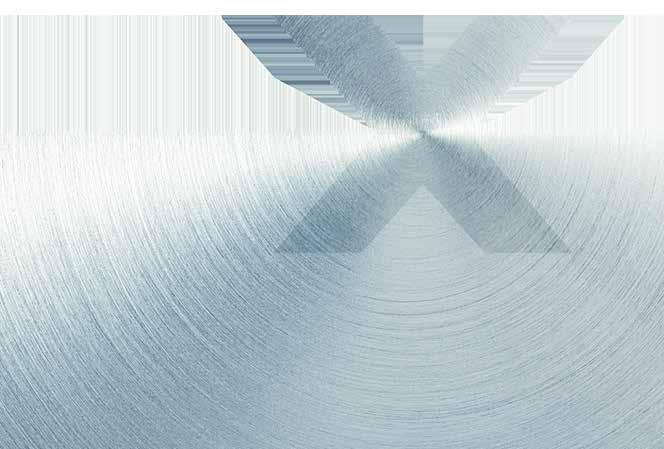
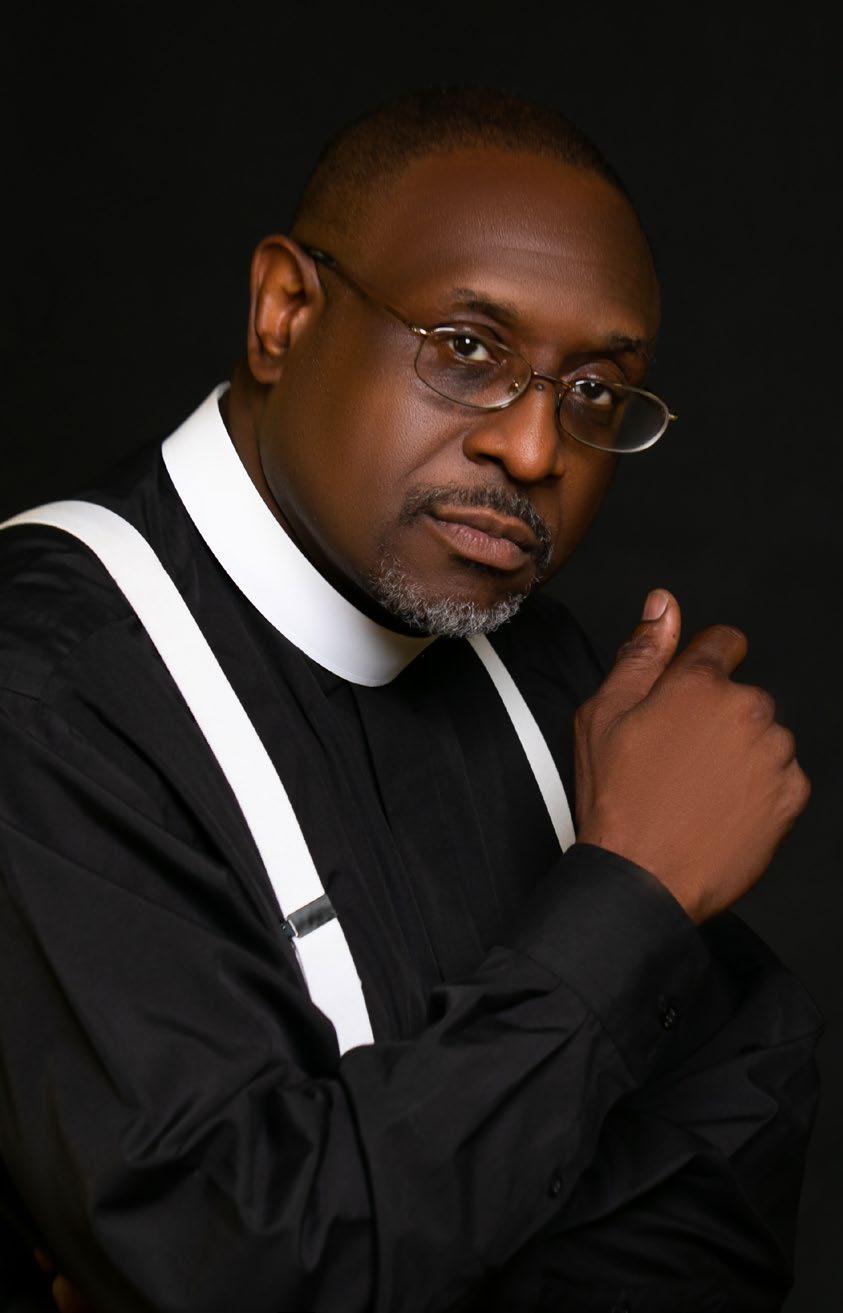
Brooklyn, N.Y. – Nearly a half-century ago, gospel music was all about choirs and quartets. Today, the music has embraced other genres — most notably house, jazz, and calypso. Brooklyn-based DJ Duane Knight (aka Dr. D) deserves some credit for the genre’s expansion, as he’s been playing the music in all its forms in churches, during mobile events, on boat cruises and, for the past 29 years, on the radio.
In fact, he’s recently been granted some serious industry props. He’s been inducted into The Gospel Hip Hop/ Christian Hip Hop Hall of Fame and he’s been nominated for The National Black Radio Hall of Fame.
When he’s not DJing or mentoring younger jocks, he works as a professional photographer, and next year he’ll achieve two musical milestones: He’ll celebrate 30 years on the radio and 50 years as The Father of the Gospel DJ Movement. We talked to Duane Knight/Dr. D to get some background on the blessed beats.
DJ LIFE: So, next year will be 50 years since you first got behind the wheels of steel. Tell us about how you got started.
Duane Knight: I got my first turntables from a store called Lafayette in Brooklyn, I think that was the prelude to Radio Shack. They were direct belt-driven, so we had to improvise and put a piece of wax paper underneath the record so that we could pull it back and stuff like that.
DJ LIFE: Were you scratching?
Knight: We didn’t do much of scratching, but we did mix, especially myself… because out of the six guys in our gospel group, everybody had their own talents. Three of
them sang very well, and I was the one who introduced the DJ aspect because I was surrounded by DJs. My next-door neighbor was a DJ, my sister’s boyfriend was a DJ. One of my favorite DJs, I don’t remember his name, but he used to DJ in a blue coffin. A blue coffin. he used to come out to the park and his gear was in a blue coffin. It was phenomenal.
DJ LIFE: What kind of tunes were you spinning in the early days?
Knight: One of my favorites was Rance Allen – he just passed away maybe like five years ago. He had this smooth gospel sound. And we were playing jazz from Allen & Allen, and a gospel-reggae group called Christafari
DJ LIFE: You started spinning in churches in Brooklyn. What were the gigs like?
Knight: Our church was on Bedford and Madison. It’s still there. We started in Brooklyn and we just expanded, as churches started calling on us because, at that time, if they hired a DJ, they would have to bring the music, give it to the DJ, and then somebody would have to stand there and tell them what to play. The DJs didn’t know gospel music. Then people started calling us for gospel skating parties. We played almost every roller-skating rink in New York City. We did Empire. We were famous for Empire. We started it at Empire in Brooklyn. It was the mecca, Empire Roller Dome. We’d go out to Skate Key, U.S. Skates in Long Island, Eclipse, there’s a list of them.
DJ LIFE: Outside church events, where else have you played?
Knight: I’ve played all types of events, from weddings, those skating parties, boat rides, conventions – just like all DJs. I spun at Six Flags Great Adventure’s Soul Brothers Gospel Jam and Central Park SummerStage’s Gospel Night.
DJ LIFE: What’s your gear looking like these days?
Knight: For gigs, I use the Numark Mixtrack Platinum FX controller, VirtualDJ software, AKG headphones, Samson QH4 4-channel headphone amp, Electro-Voice ELX112P active 12-inch speakers, Beats Audio software/HP laptop, Harbinger LV12 analog mixer for travel, Gator Frameworks Gator speaker stands, Odyssey cases, a Sennheiser EW100 wireless system, and a VocoPro UHF-5804 4-channel, rechargeable wireless mics. Other gear includes Allen & Heath ZED-10 mixer for home-studio internet mixing and Harbinger Vari V2308 powered speakers for homestudio monitors
DJ LIFE: You’re still spinning on the radio?
Knight: Station 90.3 FM, WHCR — Harlem city radio, in City College in Harlem. I’m going on 29 years now. My
time slot has always been the same –1 a.m to 4 a.m. on Monday morning.
DJ LIFE: What music are you playing on the radio?
Knight: It’s a mixture of music I play. The second two hours is a total gospel-house set — Kenny Bobien, he’s considered the king of gospel-house music. We play someone like Dawn Tallman – she’s the queen of gospel energy. We play remixes that people have done for some gospel songs. One of my good friends is DJ Rich Williams, he’s a master at remixing gospel music to that gospel-house beat. We play Paula Brion. There’s a lot of artists. Alan Kay is great to play now. The first hour is comprised of the music that I started out doing. So we have the Kirk Franklins. We have the Fred Hammonds. We have the gospel hip hop. We have The King’s Men — they’re out in Chicago.
DJ LIFE: In your view, how have the young people changed in the last 50 years?
Knight: Young people have always been receptive to new styles of mu-
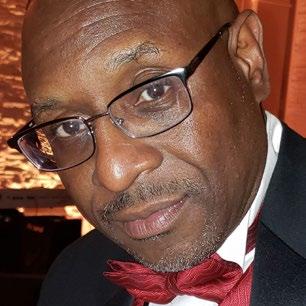
“Home” by Tracy Hamlin [Kenny Carpenter Wiz Revised Mix] (Quantize Recordings, 2014)
“Movin’ On” by Kenny Bobien [Gianluca Pighi Remix] (Makin’ Moves, 2016)
“Heaven” by Aaron K. Gray & Cierra Hill [Mark Francis 201 Vocal Mix] (Quantize Recordings, 2021)
“Good Night” by Niko De Luka & Brown Sugar feat. Dawn Tallman [Andrey Exx Remix] (Vamos Music, 2019)
“By Faith” by CeCe Rogers feat. Junior White (USB Records, 2015)
sic. So that’s why, in the beginning, we catered to them because they wanted the contemporary sound, and they wanted the gospel music to sound the same way. So when the radio started coming out on the R&B side, mainstream, they wanted that in the gospel side – they wanted the jazz, the calypso, and they wanted holy hip hop.
DJ LIFE: And that changed the music?
Knight: There’s been a good change because the gospel industry has been more receptive to the music out there now. On the radio, they play the hip hop. They play more upbeat, contemporary, because in the beginning, when I started out, when we started out as a group, they would just play choirs, and quartet. Those are two genres that they basically played on Sunday morning was choirs and quartet. So now, you got all these other genres of gospel music that they weren’t playing. They’re more open to it now – thanks be to God!


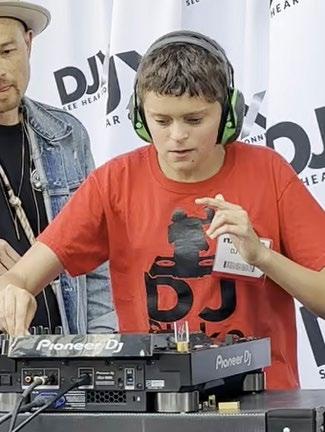





 By Ken Cosco
By Ken Cosco
When it comes to the entertainment industry, too many people who are just starting out worry about the wrong things. A great DJ or mobile entertainer must wow their crowds, but they must not overlook their own personal finances. Here are just a few points worth considering when merging a successful career with their personal-financial goals:
Introduction. Business owners often focus heavily on managing their businesses, sometimes neglecting their personalfinancial health. However, personal finance plays a pivotal role in ensuring long-term stability and success. Challenges such as fluctuating income, tax complexities, and retirement planning require strategic attention. Pitfalls can include buying equipment because it looks cool without asking the question, “How will this item make me more money?” Another common problem is entertaining for promotion. “Promo Dollars” won’t pay the rent, the electric bill, or your insurance. If you plan on playing for a discount or for free, expect more people to come asking for the same deal. Show your worth and learn how to say, “No!”
Separating Personal & Business Finances. Mingling personal and business finances can lead to confusion and financial instability. Establish separate bank accounts, credit cards, and accounting systems. This separation simplifies tax preparation, ensures accurate financial reporting, and protects personal assets. When at all possible, make sure to only use credit cards when you know you can pay them off in full at the end of each month. That $1,000 controller will cost you
as much as $1,300 in a year if you don’t pay that credit card off in full at the end of the first month.
Budgeting & Cash-Flow Management. Budgeting isn’t just for businesses; it’s equally vital for personal finances. Determine monthly expenses, set aside funds for savings, investments, and unforeseen expenses. Implement cashflow-management strategies like maintaining liquidity and monitoring cash reserves. A simple challenge is to take a percentage of each check and put it into another account that doesn’t mix with your everyday bills.
Retirement Planning. Business owners must navigate retirement planning differently from salaried individuals. Explore retirement account options such as SEP-IRAs, Solo 401(k)s, and traditional IRAs. Consider factors like contribution limits, tax advantages, and investment choices tailored to your retirement goals. For everyone that is at least 10 years from retirement, I strongly suggest a Roth IRA should be the first avenue for retirement planning.
Tax Planning & Compliance. Understanding tax implications is crucial. Familiarize yourself with business deductions, credits, and compliance requirements. Consult with tax professionals to optimize deductions, manage quarterly payments, and stay updated on regulatory changes. Record keeping is key. Log your business miles on your personal car. Remember even if you traveled to a hardware store to buy an extension cord for your system – that
is a business deduction.
Emergency Funds & Insurance. Establishing an emergency fund safeguards against unforeseen business setbacks or personal emergencies. Additionally, prioritize insurance coverage including health, life, disability, and business-specific policies. These measures provide financial security and mitigate risks. Especially with an entertainment business, seasonality can and will hit your financial bottom line. If you are prepared with an emergency fund, you will be able to withstand those swings.
Investment Strategies. Diversify investments beyond your business. Explore diverse asset classes such as stocks, bonds, real estate, and mutual funds. Evaluate risk tolerance, investment horizon, and financial goals to devise a balanced investment portfolio. Getting professional help when you are first starting out is advised. I recommend looking for someone that is established and is a fiduciary (i.e., a person that puts their clients’ interests ahead of their own).
Debt Management. Effective debt management entails understanding and prioritizing debts. Consolidate high-interest debts, negotiate favorable terms, and develop a repayment strategy. Differentiate between business and personal debts, addressing each appropriately to maintain financial health. Also, you need to know the difference between “good debt” and “bad debt.” Good debt can be deducted
from your taxes (e.g., mortgage interest or a portion of your car payment when that vehicle is used for business). The most common type of bad debt is credit-card debt.
Estate Planning. Estate planning transcends business succession. Draft wills, establish trusts, and designate beneficiaries to ensure smooth asset transfer. Consult legal professionals proficient in estate planning to navigate complexities and protect assets for future generations. This is especially important if you have a spouse, children, or those that might depend on you.
Personal finance remains integral to business owners’ overall financial landscape. Embrace proactive financial management, prioritize strategic planning, and seek professional guidance when necessary. By aligning personal and business finances, entrepreneurs can achieve financial security and long-term prosperity. It can be scary to start, but all journeys begin with the first step. Tackling these challenges one step at a time will make your future brighter. In future articles, I will dive into some of the steps I took that you might want to consider.
Disclaimer: I am not a certified financial planner. I am just giving advice that has helped me over the years. I am not claiming that you will have the same success I will have. No one is perfect with financial decisions. I am not assuming any financial responsibility for your decisions.
Ken Cosco is the Chief Entertainment Officer of A Touch Of Class DJ’s in Marlborough, Mass.



AlphaTheta has introduced the WAVE-EIGHT 8-inch portable DJ speaker with ultra-low latency wireless connection, professional sound quality, built-in battery, and waterproof design. The speaker pairs with AlphaTheta’s new OMNIS-DUO controller to create a unique portable DJ system. The WAVE-EIGHT helps users in any portable situation. With its SonicLink ultra-low-latency wireless technology, users can set up quickly and easily, then DJ without cables. Users can combine multiple WAVE-EIGHT speakers wirelessly to suit the party and venue size, with easy-to-understand sound modes available at the flick of a switch. With an 8-hour battery life, the IPX4-rated, waterproof WAVE-EIGHT has built-in casters and an extendable handle, making it easy to transport, set up, and play in any conditions.
AlphaTheta Corporation 2050 W 190th St #109 Torrance, CA 90504 (424) 488-0480 www.alphatheta.com

Native Instruments brand iZotope has announced the release of iZotope VEA, a new AI-powered Voice Enhancement Assistant for podcasters and content creators. VEA features AI technology that listens first, then enhances audio so creators can feel more confident with their voice and deliver better sounding content. VEA increases clarity, sets more consistent levels, and reduces background noise on any voice recording. For people that are new to audio production, VEA features three simple controls that are intelligently set by iZotope’s AI technology. Those that are more familiar with editing vocal recordings will find a new way to finish productions quickly by consolidating their effects chains and saving on CPU.
Native Instruments North America 6725 Sunset Boulevard, 5th FL Los Angeles, CA 90028 (866) 556-6487 www.native-instruments.com

Analog Cases has released its range of UNISON Cases for DJ controllers, custom-fitted for nine different devices. Crafted with ultralightweight aluminum materials, UNISON Cases come complete with a customized dense-foam insert that is die-cut to the precise dimensions of the DJ controller it’s designed to accommodate. A padded handle and storage space for cables complete the sleek design that showcases the unique black-on-black aesthetic of the brand. UNISON Cases are available for the following products: Denon DJ Prime GO; Hercules DJControl Inpulse 500; Numark Mixstream Pro Go; Pioneer DJ DDJ-800; Pioneer DJ DDJ-1000; Pioneer DJ DDJ-FLX4; Pioneer DJ DDJ-FLX6; Pioneer DJ DDJ-SR2/DDJ-SR; and Roland DJ-202.
Analog Cases 2707 N. San Fernando Rd Los Angeles, CA 90065 (213) 268-5361 www.analogcases.com

ADJ has introduced the WMS2 high-resolution LED video panel. With a front serviceable design, this vibrant video display solution can be mounted directly to a wall with a seamless edge-to-edge finish either horizontally or vertically, making it ideal for a wide variety of applications, including digital signage and entertainment venues. With a pixel pitch of just 2.6mm, resulting in a pixel density of 147,456/m2, the WMS2 offers excellent definition even from a close viewing distance. It features an arrangement of RGB SMD1515 color mixing LEDs and generates a brightness of 800 NITS. A Novastar A8s-N receiving card is built-in allowing the WMS2 to be displayed horizontally or vertically when wall mounting. The panel offers a wide viewing angle of 160-degrees (horizontal) by 140-degrees (vertical) and has a refresh rate of 3840Hz.
ADJ 6122 S. Eastern Ave Los Angeles, CA 90040 (323) 316-9722 www.adj.com

PreSonus Audio Electronics have released the Eris Pro range of studio monitors. Durable, versatile and Bluetooth-compatible, the range delivers clear, accurate, studio-quality sound anywhere the user wants it. In addition to the Eris Pro Sub 10, the Eris Pro models include Eris Pro 4, Eris Pro 6, and Eris Pro 8, all of which employ a single point-source coaxial design for clear and accurate sound reproduction.
The 80-watt Eris Pro 4 has a 4.5-inch low-frequency driver and 99 dB peak SPL. The 140-watt Eris Pro 6 has a 6.5-inch low-frequency driver and 106 dB peak SPL. The 140-watt Eris Pro 8 has an 8-inch low-frequency driver and 108 dB peak SPL. The 170-watt Eris Pro Sub 10 has a 10-inch low-frequency driver and 113 dB peak SPL.
PreSonus 18011 Grand Bay Court Baton Rouge, LA 70809 (800) 856-9801 www.presonus.com
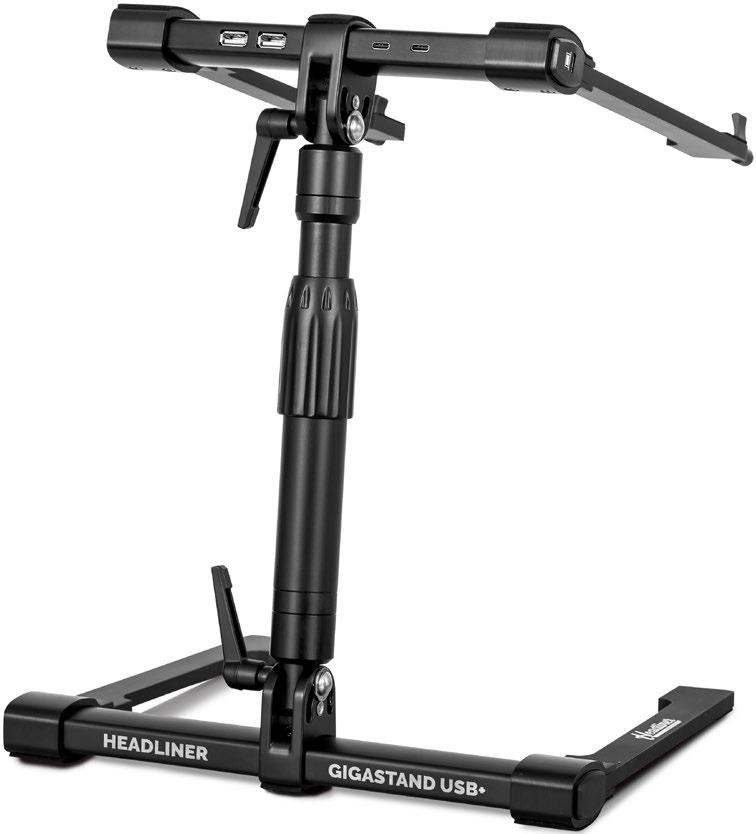

Headliner, a Mixware brand, has released the Gigastand USB+, a two-in-one laptop stand/ high-speed USB hub for DJs, traditional musicians, performers and creators. The unit boasts full adjustability, allowing users to configure it in C or Z positions and fold it flat with ease using the intuitive ratchet lever system. Every joint is designed to be effortlessly loosened and tightened, enabling users to find the perfect angle for their setup. The telescoping neck offers a 360-degree rotation and reaches a maximum height of 16 inches, catering to diverse workspaces and preferences. The standout feature is its integrated high-speed USB hub. With two USB-C ports, two USB-A ports for peripherals, and one USB-C port for computer connection, this device simplifies your workstation by eliminating the need for additional hubs. It’s fully USB powered, so it does not require carrying around an additional power supply.
Headliner/Mixware 11070 Fleetwood St., Unit F Sun Valley, CA 91352 (818) 578-4030 www.mixware.net

IK Multimedia has released iRig Stream Mic USB, a new Mac/PC condenser microphone and stereo audio interface that lets podcasters and musicians easily combine voice and audio for streaming and recording. A more accessible version of the iRig Stream Mic Pro combination condenser microphone and stereo audio interface, the new iRig Stream Mic USB includes a new streamlined cardioid condenser microphone microphone that offers Mac, PC, iPad and iPhone 15 users a single, ultra-compact and refined solution for music and content creation and streaming. With its Integrated Audio Interface, media players, keyboards, mixers, turntables, soundboards and more can be connected via a high-grade stereo 3.5 mm audio input right on the mic. With its monitoring mix control, users can blend the direct or recorded audio via the headphone output, keeping their entire setup in one elegant, compact solution that travels well and fits on any desktop.
IK Multimedia 590 Sawgrass Corporate Pkwy Sunrise, FL 33325 (954) 846-9101 www.ikmultimedia.com
Roland has introduced BRIDGE CAST X, a powerful desktop interface and connection hub that allows streamers to simplify their setups and improve their content with Roland’s pro AV features. Multiple USBC, HDMI, and audio ports provide simultaneous connectivity for computers and other devices, eliminating the need to repatch for different streaming scenarios. BRIDGE CAST X also includes an XLR mic input, assignable control pads, and support for thousands of royalty-free backing music titles via the BGM CAST service on Roland Cloud. Six assignable control pads are on hand to enhance streams, providing quick triggering of sound effects, background music, OBS commands, and more. The companion BRIDGE CAST app unlocks deeper features, including mic and audio processing, voice transformer settings, EQ presets, and more. It’s also possible to re-assign hardware controls and save/recall configurations for different games and streaming audiences.
Roland 5100 S. Eastern Ave. Los Angeles, CA 90040-2938 (323) 890-3700 www.roland.com
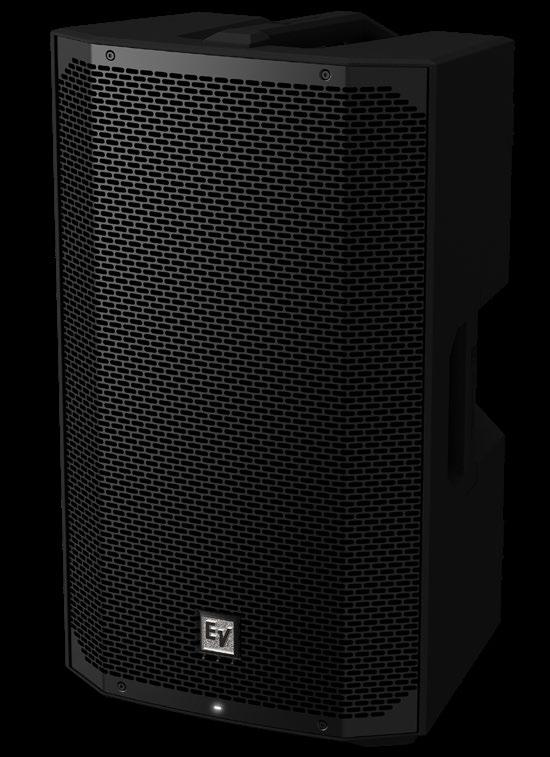
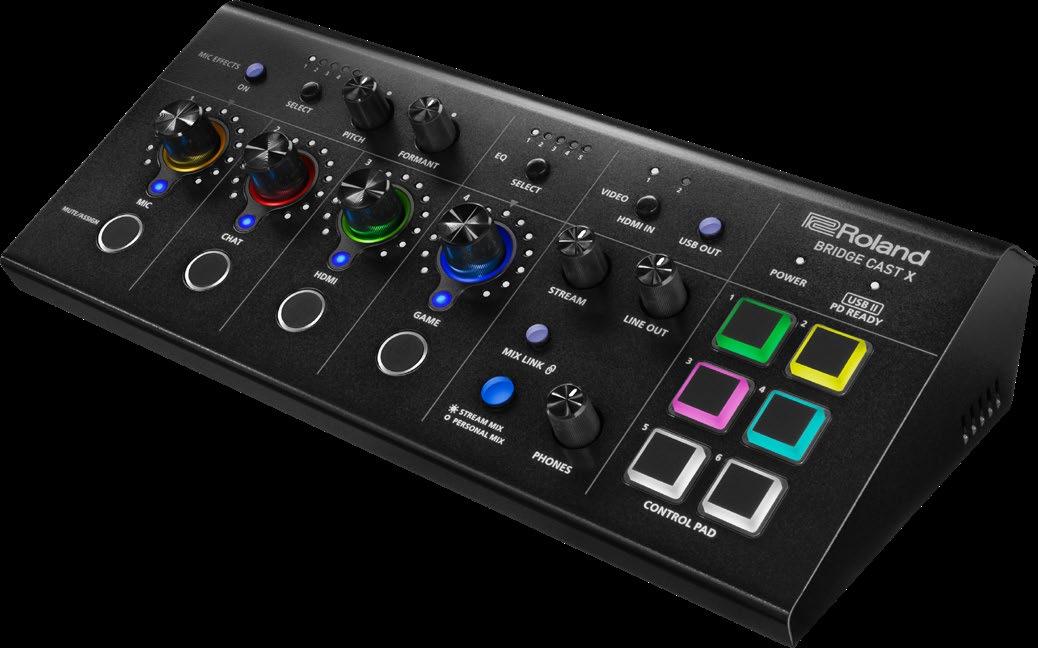
Electro-Voice has released the EVERSE 12, a battery-powered, 12-inch, 2-way loudspeaker. EVERSE 12 boasts a maximum SPL rating of 126 dB, low-frequency response reaching deep down to 45 Hz and wide 100- x 60-degree coverage. With a compact, lightweight and weatherized design, EVERSE 12 has a 12-plus hour battery life. Its all-in-one feature set includes QuickSmart Mobile app and Bluetooth true wireless stereo for control and streaming, an onboard mixer, and studio-quality effects. The components are “Powered by Dynacord” – driven by a high-efficiency 400 W Class-D amplifier and DSP module developed in collaboration with the engineering team at EV’s sibling brand Dynacord. Pro features include mode/location/subwoofer presets, 48 V phantom power, feedback suppression and audio ducking, ensuring a truly selfcontained setup from input to output.
Electro-Voice 12000 Portland Ave Burnsville, MN 55337 (800) 289-0096 www.electrovoice.com


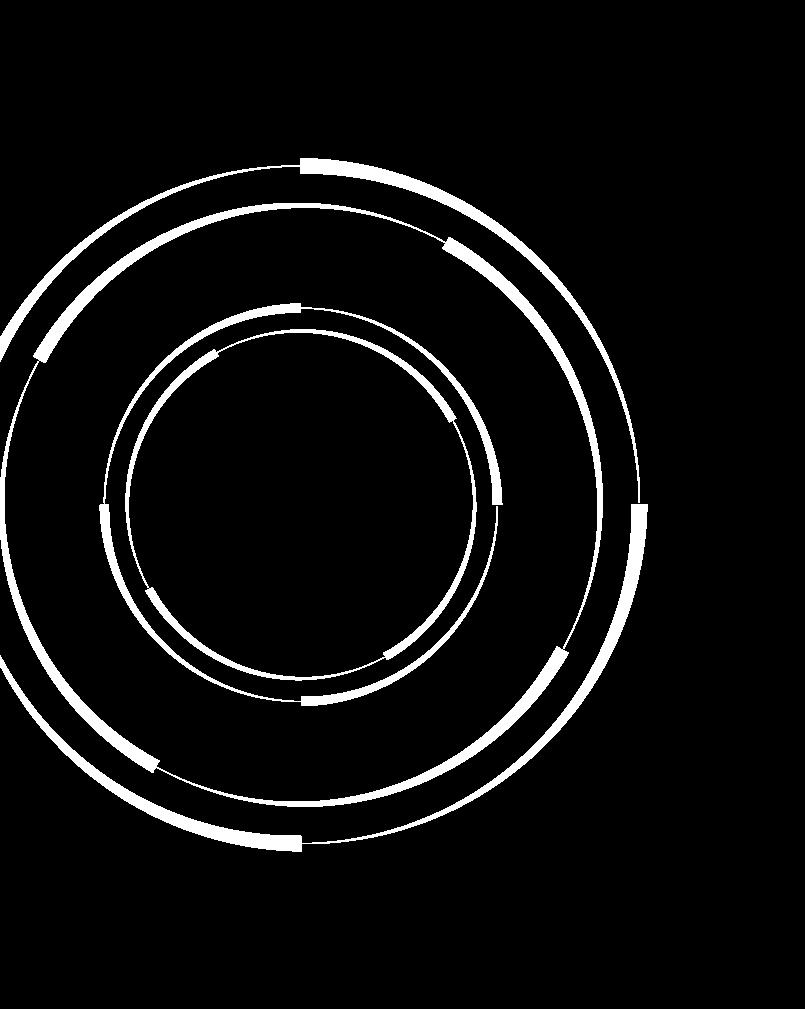

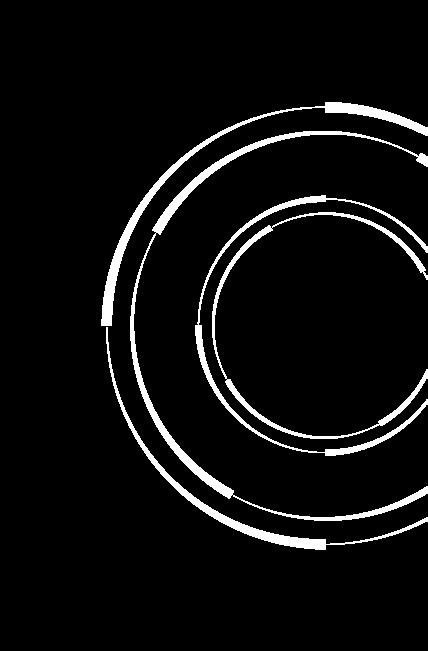





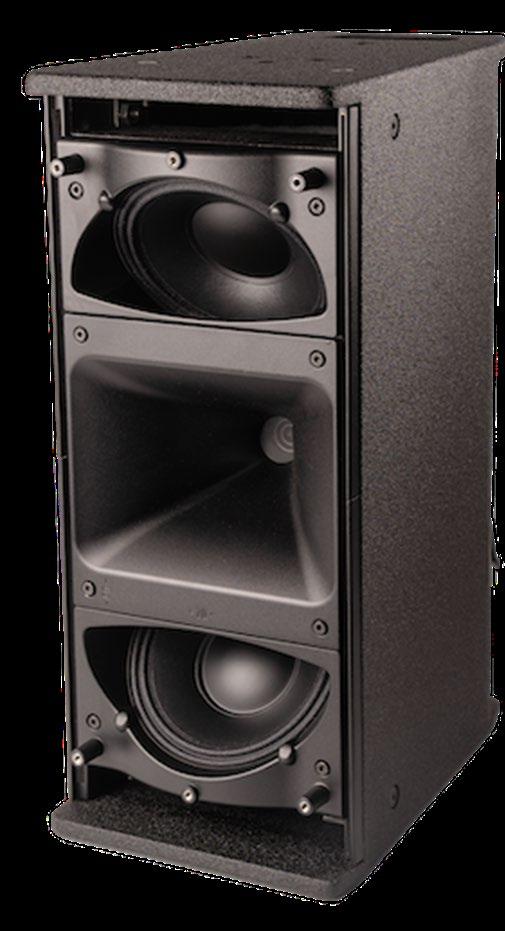
BASSBOSS, distributed by American Music & Sound, has released its Makara-MK3 double-21-inch powered subwoofer that shares the footprint, depth and impact of BASSBOSS’ Kraken sub, but offers increased portability and versatility. Engineered to deliver a flat response to the depth of 23Hz, Makara-MK3 achieves maximum sustained output of 143 dB SPL at 1 meter in a half-space environment, with a peak SPL of 146 dB. The 21-inch transducers feature 4.5-inch CCAW voice coils and Neodymium motors that create the combination of efficiency and motor force. Each transducer is driven by a discrete amplifier – their combined output has the potential to deliver 5,000 watts to the two drivers. Highpass and low-pass filters, equalization and limiting ensure smooth response, reliable operation and seamless interoperability with all BASSBOSS speakers and subs.
BASSBOSS 2620 S. Hill St. Los Angeles, CA 90007 (213) 275-1593 www.bassboss.com
From is ARA Series of line-array loudspeakers, DAS Audio has released the ARA-P12.74 and ARA-P28.74 active, compact, pointsource systems. The ARA-P12.74 features a 12-inch LF driver and a 3-inch VCD HF compression driver, 96kHz FIR filters, and is powered by 1,200 Watts of Class D amplification. ARA-P28.74 features dual 8-inch drivers, a 3-inch VCD compression driver, with 96kHz FIR processing and 1,200 Watts of power. Both products also come with new accessories to mount them in virtually any scenario and features a rotatable horn for optimal coverage. This combination of the custom transducer and new compression driver ensures that the ARA-P12.74 delivers an audio experience that is both powerfully resonant and richly detailed.
DAS Audio 6900 NW 52nd St. Miami, FL 33166 (305) 436-0521 www.dasaudio.com
Mixware brand ColorKey has released three new lighting solutions for mobile entertainers – PartyBar Mobile 150, PartyBar Mobile 250, and PartyBar Pro 1000. An all-in-one wireless battery-powered system, the PartyBar Mobile 150 boasts dynamic color options and multiple control modes. The PartyBar Mobile 250 features a variety of effects – pars, derbies and lasers – in addition to wirless DMX control in its plug-and-play lightshow. Capable of painting the room in a medley of colors, the PartyBar Pro 1000 features a powerful ensemble of LED fixtures and effects, including intricate chase and flash patterns.
ColorKey/Mixware 11070 Fleetwood St., Unit F Sun Valley, CA 91352 (818) 578-4030 www.mixware.net

HEALING AND OPPORTUNITY THROUGH MUSIC ONE PERSON AT A TIME
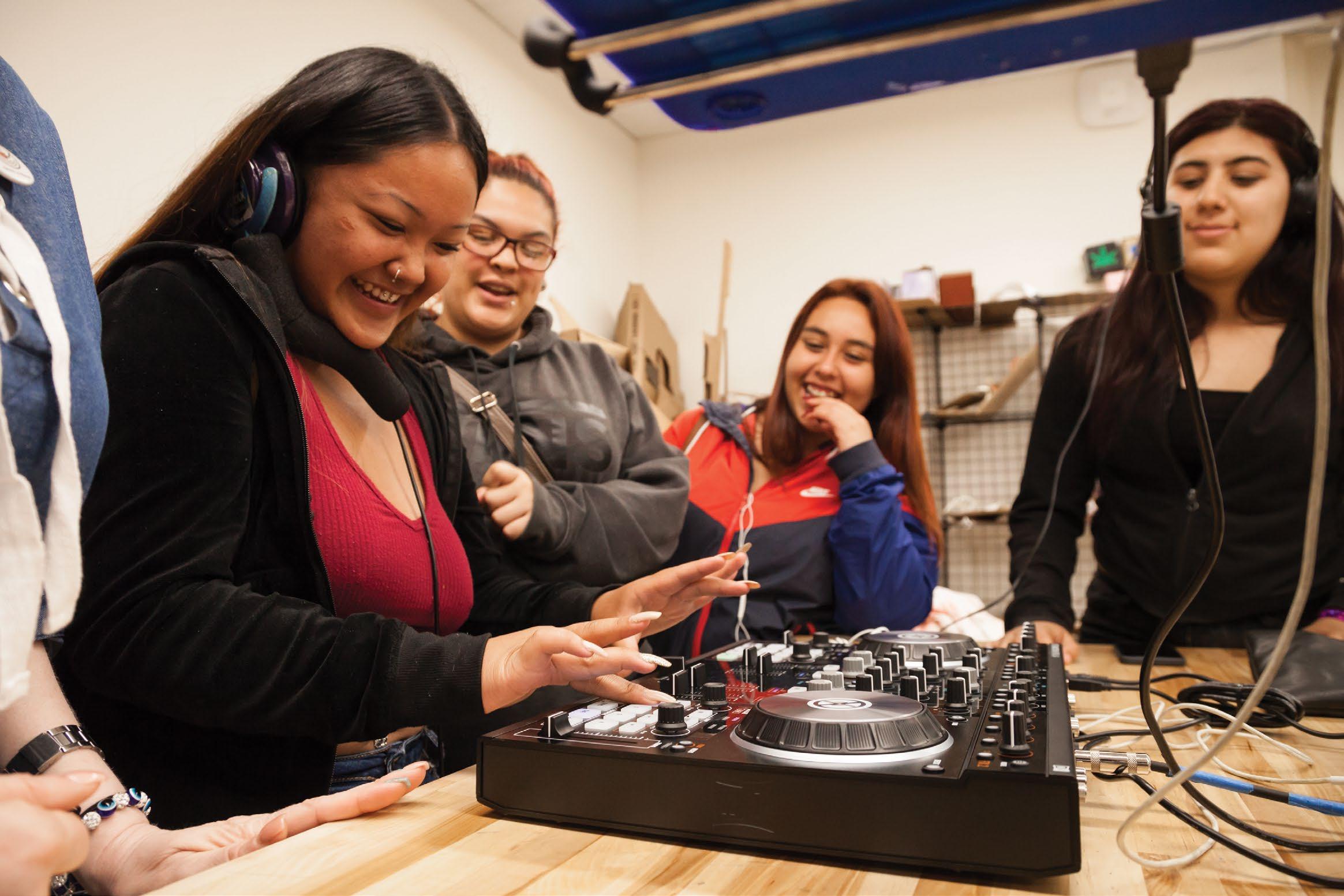
YOUTH MUSIC PRODUCTION AND DJ PROGRAM ON A NEW TRACK REENTRY MENTORING PROGRAM
PRISON ELECTRONIC MUSIC PROGRAM
giveabeat.org
giveabeat
igiveabeat L
F giveabeat
Give a Beat’s mission is to use the power of music as a pathway to healing and opportunity for those impacted by the criminal justice system.
I GIVE A BEAT PATREON MEMBERSHIP
Be a champion for the transformative power of music while promoting social justicebecome a Give a Beat member today!
The I Give a Beat Patreon Membership offers an opportunity to support our mission to use the power of music as a pathway to healing and opportunity for those impacted by the criminal justice system while also receiving valuable perks.
Benefits include discounts and subscriptions to Ableton, Beatport LINK, IO Music Academy, OM Records, ROSTR, great swag and more!
giveabeat.org/PATREON
GALLERY Gallery
A bumpin’ blend of the Peech Boys and First Choice is the order of the day for the latest release on Artwork’s label. Simple yet so effective, this grooving, soulful burner should garner plenty of support.
– Curtis ZackKathy Brown
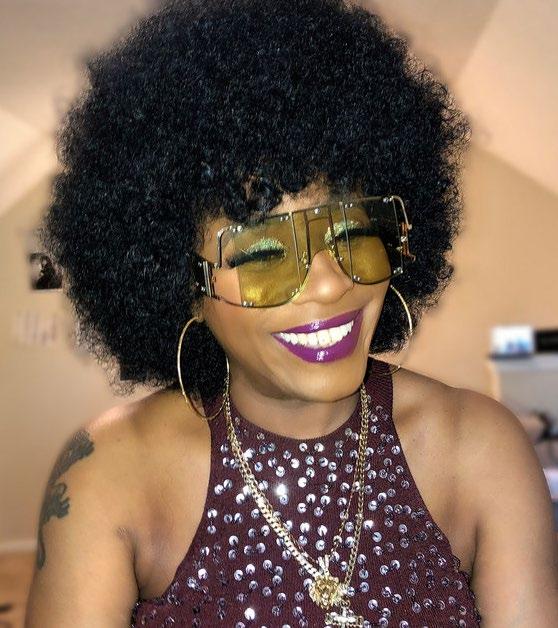

YVONNE GAGE
Maurice Joshua Digital
Originally released way back in 1981, Grammy-winning legend Joshua provides a remix that stays true to the funky, discotinged original, but gives it an extra polish. Classy, classic and an amazing re-interpre-
– Curtis Zack
Wh0, Mark Knight & James Hurr feat. Kathy Brown Toolroom Records
Here’s a fundraising single for one of house music’s biggest voices, Kathy Brown, who’s been diagnosed with lung cancer. This homage track uses Kathy’s OG Praxis collab vocal originally released on Strictly and is produced by Mark Knight himself, Grammy-nominated U.K. duo Wh0, and fellow producer James Hurr, who lay down the beats for a really good cause
– Joe BerinatoRaw Silk
Fool’s Paradise
This bonafide reproduction uses the original vocals of Raw Silk’s ’82 single on West End, and remixer Gray brings the quality he’s known for. He holds on to the original disco feel, but adds a little extra pump and instrumentation to breathe a little modern life into this classic. No cheesy sampling here, just pure modern disco elegance.
– Joe BerinatoLovebirds
Glitterbox
Berlin’s Lovebirds return with soulful vocals and grand disco instrumentation, a perfect combination for a Glitterbox release. Throw in a great song and terrific vocal performance from Isobel Fitzroy and you know this one just oozes quality.
– Curtis Zack
Lovebirds
GooDisco
Funky Revival
This new release for Funky Revival sees GooDisco head straight to the dancefloor with a thumping winner. Built around a sleek disco sample – Leroy Hutson’s 1982 cut “Classy Lady” – this jacking house track is simple, but yet so effective.
– Curtis ZackGroovemasta

Groovemasta
Tropical Disco
The master of the groove returns to London’s nu-disco factory with another heavy-hitting, sampling number. A killer bassline and Prophet synth riffs form the basis of the track and give it some serious late-night vibes.
– Curtis ZackFerry Ultra

Ferry Ultra feat. Ann Sexton
Peppermint Jam
Originally released in 2010, this underrated track gets a fresh lease of life from Art of Tones. With funky guitar licks, big horns, rollicking rhythm, and superb vocal, this is a great way to kick off the 30th year of Germany’s Peppermint Jam label.
– Curtis ZackKrysta Youngs
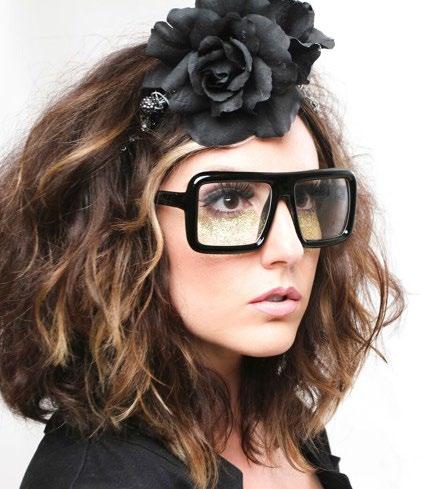
Krysta Youngs, Stash Konig & Liquid Todd
Liftoff
Brothers On Cue
Sunclock
Two beatmakers from Swaziland go super-deep with on this quality, twotune, Afro-house EP. “Inkwari” sinks you into a slow and low, steady and heady flow with its hypnotic, synthetic grind. Then, “10 Days Apart” ups the vibration slightly to lift the listener out of the primordial dancefloor trance. Epic flows.
– Joe BerinatoBrothers On Cue
Singer/songwriter Youngs lends her dulcet-toned vox to one of the grooviest pop/dance records released so far this year. Teaming with West Coast producer Konig and SXM’s Liquid Todd, Youngs brings a gorgeous take-you-back journey, complete with a chant that sure to work up the crowd Icona Pop-style.
– Joe Berinato


1
2
3
4
5
6
7
12
13
25
35
Most Added Tracks
4
Rapp,
■
■
■
■
■
■
■
■
■
■
■
■
■
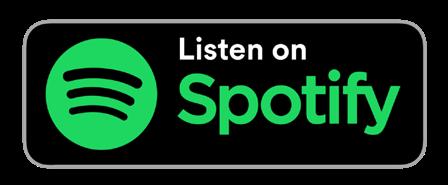
1 Adriel Gonzalez Y Herman Olivera Hecho Y Derecho Mojica Music
2 Orq. Yare feat Julio Cesar Ruiz Los Gustos Cnn Media
3 Baby Rasta & Gringo Aroma Wolflow Music/Duars Ent.
4 Tony Fuego Chicolin Chicolon TF Media
5 Yolanda Duke Ya No Vives En Mi Amigos Music
6 Albert Mendez Pensando En Ti AMRD
7 Zacarias Ferreira En Peligro De Extincion LOMG
8 Lios Choko No Me Gusta Trabajar On Top
9 Ana Lia & Alonso Mendez Debio Saberlo Underbite
10 Nicky Jam, Yovngchimi, Angel Dior Last Gatas (Dembow) Legado Urbano
11 Farruko feat Kaito Worship Hermoso Momento Carbon Fiber
12 Oscarito Atrevete Flame/LOMG
13 Maelo Ruiz No Te Olvido MR
14 Luisito Ayala Y PRP Yo No Soy Un Papi LA
15 Limi-T 21 Juagste Con Mis Sentimientos ReNew Music Corp.
16 Ozuna Baccarat Aura Music Corp
17 Raymix y Marama No Pasa Nada Fonovisa
18 Xantos Y Totoy El Frio feat Koora Las Flowers J&N
19 Juan Luis Guerra La Noviesita Rimas
20 Los Tinellers (Lenny, Romeo, Henry, Max) Trampa De Amor Mayimba Music
1 Pedro Conga Dejalo (2023 Mix) PC Prod.
2 Espinoza Paz Y Mariana Seoane El Cojin Virgin
3 Christian Ray Saramanbiche CR Music
4 La Sonora Matancera LLego El Carnaval J&N
5 Magic Juan Superheroe Omerta Music
■ Latinos Unidos Record Pool
■ Salsamania Latin Record Pool
■ Lobo/Bass Record Pool
■ North East Record Pool
■ Mixx Hitts Record Pool
■ Ritmo Camacho Record Pool
■ Ritmo Internacional Record pool
■ DJ Latinos Record Pool
■ MassPool
■ Record Pool Latino
■ Latin Beat Chicago Record Pool
■ All In Music Pool
ATTENTION DJ LIFE READERS: DJ Life is currently looking for DJs that are interested in reporting to the DJ National Dance/Crossover chart and the DJ Times National Urban Dance chart. Reporterships are open to Record Pools and individual DJs. For more information contact: Dan Miller, dmiller@hazanmediagroup.com
